





































6




56
58
61
44
54
55







































6




56
58
61
44
54
55
 STUART GOODALL CHIEF EXECUTIVE,
STUART GOODALL CHIEF EXECUTIVE,
Almost half the world’s population will see national elections in 2024. Set against a backdrop of conflict in the Middle-East, Ukraine and potentially even Taiwan, we likely face turbulent times.
Turning closer to home, the economic picture looks a little more promising. Cost of living pressures should ease as inflation falls further and tracks lower than average wage rises. The economy is forecast to pick up a little and interest rates should ease, at least by the second half of the year.
It’s been a windy and wet autumn and winter with, as I write, 10 named storms so far. The silver lining from these incessant clouds could be a stronger fencing market which would provide some relief from what was a pretty dire 2023. Unfortunately, the housing market still appears weak with the Conservatives struggling to drive new house building in the face of opposition from core Tory voters.
Keir Starmer has stated his desire to build 1.5 million new homes in the first term of a Labour Government, which if elected would be a positive. However there may not be an election until October/November.
Labour have traditionally taken little interest in forestry and timber, other than from a narrow environmental perspective. We are a relatively small industry at a UK/England level and generally speaking we don’t feature in Labour target constituencies.
Confor is a membership organisation that promotes sustainable forestry and wood-using businesses. Confor members receive Forestry and Timber News for free as part of their membership. For more information on membership, visit www.confor.org.uk/join-us
Past issues and articles can be accessed online at www.confor.org.uk/news/ftn-magazine
Non-member subscriptions: £75.07/(£80.85 overseas)
Contact FTN@confor.org.uk
Forestry and Timber News is published by Countrywide Publications on behalf of Confor.
For advertising, contact Dan Rice 01502 725858 daniel.rice@micropress.co.uk

Andy



Printed by Micropress Printers Ltd


Richard
That said, Labour’s big priority is growing the economy, with some influential voices keen to include tackling climate change. Confor is exploring every avenue to have the sector’s voice heard, but it is proving very difficult to get close to the small team that will sign off the election manifesto.
The rise of Labour comes at a time when the SNP in Scotland appears to be in decline, though from such a high point that they are still running Labour neck and neck in the polls.
A year ago, I warned that the SNP government was in danger of going backwards on forestry and this has transpired with growing frustration and unhappiness across much of the industry. More generally, the SNP is seen to be losing touch with the economic interests of rural communities.
In Wales, Labour is also making the news with Mark Drakeford announcing that he will step down as leader and first minister after five years in post. In the race to succeed him climate and the economy are seen as key issues, though behind the NHS… and perhaps the electorally unpopular 20mph limit. Senedd MSs have narrowly favoured candidate Jeremy Miles, including rural/ climate change minded MSs such as Lee Waters and Julie James, but there seems to be everything to play for.
Political engagement is always important, and this year perhaps more than most!

John Bruce
National Manager for England 07884 579215 john.bruce@confor.org.uk

Elaine









We asked you to nominate colleagues and peers who deserved recognition for their work to drive the sector forward, whether that be through forward-thinking leadership, changing attitudes about the industry, finding new solutions and innovations, or contributing to net zero.
This shortlist of nominees showcases the breadth of skill and achievement present across the wide-reaching spectrum of the industry.
Winners will be announced at the Confor Dinner & Awards event at Surgeons Quarter, Edinburgh on 12 March. Wales-based woodturner Jason Wilkins has handcrafted awards to be presented on the night.
Stuart Goodall, Confor Chief Executive, commented: “While the last year has been tough at times for the forestry and woodusing sector, it is heartening that Confor has received so many high calibre nominations for the 2024 Confor Awards.
“This is a resilient industry, and amidst all the challenges we face and the goals being set for planting, timber production and carbon offset, it is more important than ever to have representatives like those listed here to champion our work and to realise the significant potential that exists across our sector.
“I look forward to

at the event next month for the chance to celebrate the achievements of so many in the industry and to look ahead positively to the future, the many opportunities that exist and the work we need to do to secure the future for our sector.”
In addition to the four category awards, the winner of the Confor Dedicated Service to Forestry Award will also be presented at the dinner. This title is bestowed on a Confor Member who has made an outstanding positive contribution to the forestry industry over the course of their career.
The ICF Professional Forester of the Year will also be announced at the event.

SAM BRISTOW
Senior Forest Manager, Tilhill
This award is presented to an individual with outstanding skills, who has the potential to be a leader in the forestry and timber sector - someone showing initiative, passion and making a real difference to the sector.
Sponsored by James Jones & Sons Ltd


Sam has continued to develop his skills in forest management since joining Tilhill in 2015 as part of its graduate programme. He was promoted to his current role as Senior Forest Manager in 2023. Sam was described as an enthusiastic and passionate young manager, keen to take on opportunities for professional growth.
ROSANNA CURTIS
Senior Consultant, Reheat
Rosanna works across the Reheat consultancy team specialisms, including low carbon heating and forestry projects, and has seen particular success in reviving the Northwoods forestry support initiative, delivering exceptional results. With a firstclass degree in Geography, she is especially interested in how data can progress a sustainable and just transition.
DAVID MELDRUM
Owner and Director, Apex Forestry
David set up Apex Forestry Ltd in 2018 with limited experience in tree planting and a commitment to high standards. Apex Forestry has since worked with some of the biggest forestry companies in Scotland and has a reputation for quality woodland establishment and planting work. David regularly dedicates time to developing his own skills as well as supporting the career advancement of others.
continued on page 8

TOMORROW’S FORESTS TEAM
Presented to an individual, business or organisation promoting the forestry and wood sector through personal engagement, campaigning, or communication.
Sponsored by Scottish Woodlands Ltd

JILLIAN KENNEDY
Forest Manager, Scottish Woodlands
Over the past year, Jillian has done important work to portray forestry in a positive light in the farming community through involvement with the Scottish Association of Young Farmers Clubs and attending panels in her spare time. She makes an effort to challenge negative views about forestry and the relationship between trees and farming in her day job and beyond.
EMYR PARKER
Forest Manager, Tilhill
Emyr has taken it upon himself to promote forestry careers to young people at every opportunity. He has engaged with Careers Wales, who are now themselves more informed about our industry, and specifically targets secondary schools and colleges to establish forestry as a professional career choice. Emyr also utilises social media

TIMBER TALKS

JILLIAN KENNEDY AND EMYR PARKER
to showcase the opportunities the industry can offer.
TIMBER TALKS (Tilhill)
The Timber Talks series was created to publicly promote the importance of tim-
ber and connecting well-managed public forests to timber end products. The Tilhill team have gone above and beyond to produce 18 episodes sharing the challenges and benefits of forestry to change public attitudes towards live harvesting sites.
Launched in 2014, Tomorrow’s Forests is passionate about promoting the sector and providing educational insights into how it operates. Over the past year they have dramatically increased their online following and produced a high volume of quality content highlighting the vital role forestry has to play for the ecosystem and society.

GORDON BROWN MICFor
CEO and Co-Founder, TreeStory
Gordon’s nomination recognises his dedication to the sustainable management of trees, woodlands and forests in Scotland. Gordon developed the TreeStory Woodland Charter to ensure all their projects put nature first through detailed, integrated management plans. He is a passionate advocate for professionalism and encourages all his staff to pursue chartered status.

continued from page 6
MEGAN PARKER
IWAN LLOYD-WILLIAMS MICFor Director, DSHwood
A recent participant in the Institute’s inaugural Emerging Leader development programme, Iwan has been shortlisted for his contributions to the sector that extend beyond the limits of his day job. His voluntary work has helped secure funding for woodland creation in Wales and has supported the improvement of the harvesting and marketing of public sector forests.
Senior Forest Planner, Scottish Woodlands Megan commenced her forestry career California and has a range of forestry perience from both the UK and the She understands and is passionate about all types of woodland management timber production. Megan has initiated led projects requiring her to work closely with colleagues and her success lies in ability to pass on her enthusiasm to others.
Presented to an individual, business or organisation at the cutting edge of tech nological innovations and/or scientific advancements which benefit the forestry and wood industry.

KENTON ROGERS MICFor Principal Consultant, Treeconomics
Kenton’s nomination recognises his continued efforts to advance forestry science on community, regional and national scales. He has made an outstanding and unique contribution to the sustainable management of trees, woodlands and forests throughout the UK. Kenton has worked with different organisations in all areas of the forestry sector, from government to NGOs.

Sponsored by Forestry Commission & Forestry and Land Scotland

FUTURE TREES TRUST
As the only UK charity dedicated to improving broadleaved trees for hardwood timber, Future Trees Trust’s research has actively achieved improved seed in several species. As a direct result of the Trust’s work, all the main UK forest nurseries are

DR ELEANOR TEW MICFor
Head of Forest Planning, Forestry England
Eleanor’s nomination focused on her conceptualisation and leadership in of the Horizon Scan of Forestry, developed and published in conjunction with the University of Cambridge in 2023. This ground-breaking research project identified 15 emerging opportunities and challenges that are likely to be highly significant for UK forests and forestry sector over the next 50 years.

now growing saplings from improved material that has demonstrated faster growth rates, and improved vigour and form for timber purposes.

DANIEL IDDON
Company Director, SAF Woodland Management
Daniel has a deep passion for changing current thinking on planting practices and soil health. He has impressed by bringing
eDNA testing into the mainstream conversation around understanding the benefits of and mimicking woodland soils. He is credited with having a fresh way of thinking and being able to back up his approach with a phenomenal amount of data and tech.
ELSPETH MACDONALD
Senior Scientist (Tree & Wood Properties), Forest Research
Elspeth has driven forward the science of timber improvement in the UK over several decades. She and her research team have developed novel methods for scoring and
continued on page 10








continued from page 8
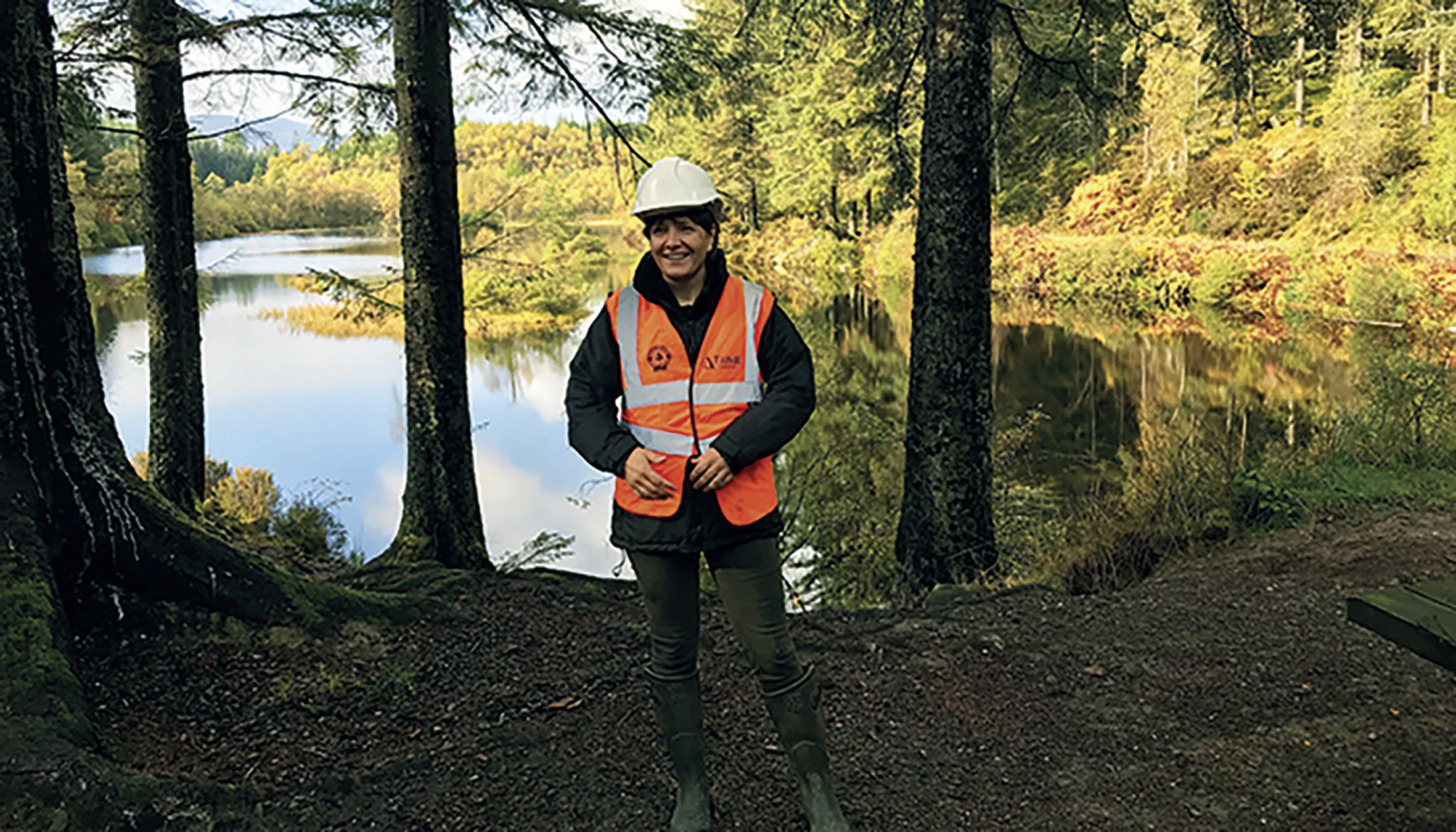
ting key goal working a meaningful way by 2045. Her work ensured a head start in sustainability ties, not only paving the way but influenc ing the forestry and wood sector to decar bonise at a faster pace.
EMMA KERR
Head of Carbon, Scottish Woodlands
Since joining Scottish Woodlands in Emma has become one of the ‘go to’ ple in the carbon world, helping the pany to become the UK’s largest carbon developer. She has striven to make topic of carbon accessible and her analysis of the moving parts of the carbon market second to none. Emma’s input in this is instrumental in driving net zero conver sations forward.
RAINBOW PROFESSIONAL


Rainbow Professional developed the Rainbow Terra as a truly “clean conscience shelter” by prioritising the use of natural resources over oil, implementing a circular wood-based approach, and employing a low-carbon manufacturing process. This innovative approach sets them apart, showcasing a strong commitment to sustainability.
TIMBERLINK
(Associated British Ports)
Over the course of the next three years, around 225,000 tonnes of timber will be shipped across the Firth of Clyde to wood processors based in Ayrshire, instead of using timber lorries. This haulage by boat option reduces emissions markedly and is only offered by ABP through the TimberLINK service. In 20 years of operation, TimberLINK has saved more than 40,000 tonnes of CO2 emissions.

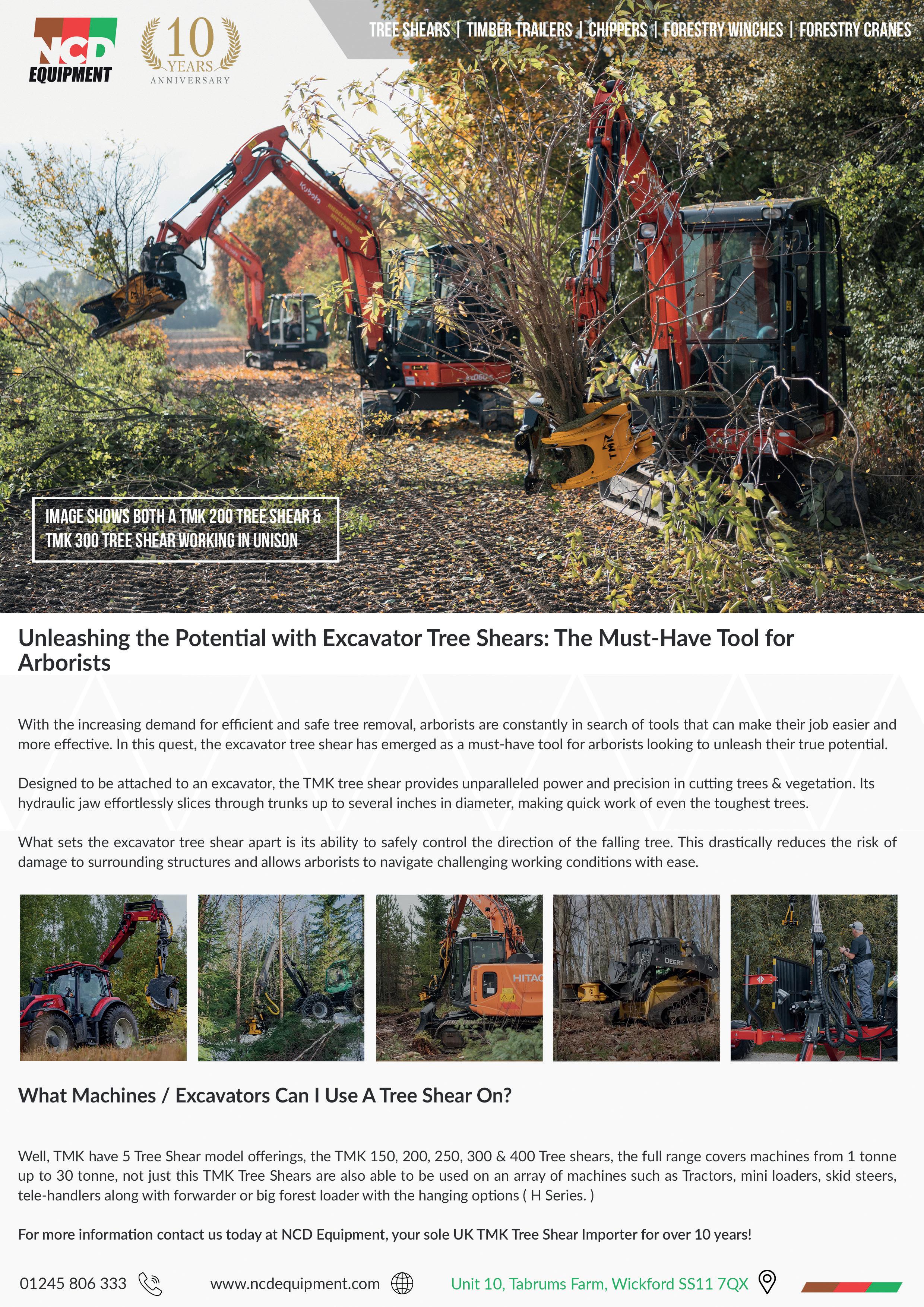



five aims, while “securing the highest sustained growth in the G7” made Starmer’s list of five missions.
However, there is a very real risk that the coming election will be one in which both parties talk up the importance of economic growth with no serious plan or commitment to foundational industries like forestry.
Part of the challenge is the complete lack of coordination or integration in political parties regarding their policy platforms.
and Public Affairs Officer Jon Garson stresses the importance of ensuring forestry is established as a central cog in upcoming election manifestos.
As we enter an election year it is worth looking at the nature of the political discourse and what signals it sends regarding the issues that will shape the campaign and therefore the agenda for the next five years of government.
The vast majority of forecasters are suggesting that in 2024 we will do well to avoid a recession and at best we can expect anaemic growth of less than 1%. Productivity continues to lag in virtually every developed country, inflation continues to be a challenge, wage levels are not keeping up with cost of living, and let’s not forget the lasting impact of COVID and Brexit.
You would think that addressing these issues should be foundational for every po-
litical party, particularly in an election year!
Yet any attempt to engage politically is totally focused on the social side of the UK government’s ledger. Cost of living crisis, social programs unable to keep pace with demand, crumbling infrastructure, local government literally going bankrupt, inflation (while lower still a drain) - any or all of these will have featured heavily in any news review for some time.
With that said, we know that as an election gets closer the economy moves to the fore. In addition it is a positive sign that both parties have set an element of economic growth within their list of priorities. The Conservatives have committed to “get the economy growing” as one of Sunak’s
We have seen this with government action that has negligible or even negative impact on other stated government goals directed towards forestry. Whether it was changes to the UK Forestry Standard or the recent announcement in Scotland of a 41% cut to woodland creation funding, there is a profound level of ignorance or disinterest in a sector that ticks more boxes across a wide range of government priorities than any other – bar none!
As we look at the very fluid policy environment for the coming year, we can see a few areas that we know will feature.
There will be a focus on homebuilding, with no reference to the importance of home-grown wood in meeting this challenge in a cost effective, environmentally sound manner. In short, forestry will allow government to build homes quicker, cleaner and cheaper.
There will be a renewed focus on net zero, or even simple GHG reductions. Government will go far and wide in terms of its promises and commit huge funds to reducing emissions while focusing on the fact that this will be a creator of new jobs across the country. Yet the risk is that there will be no focus on a home-grown, growth-

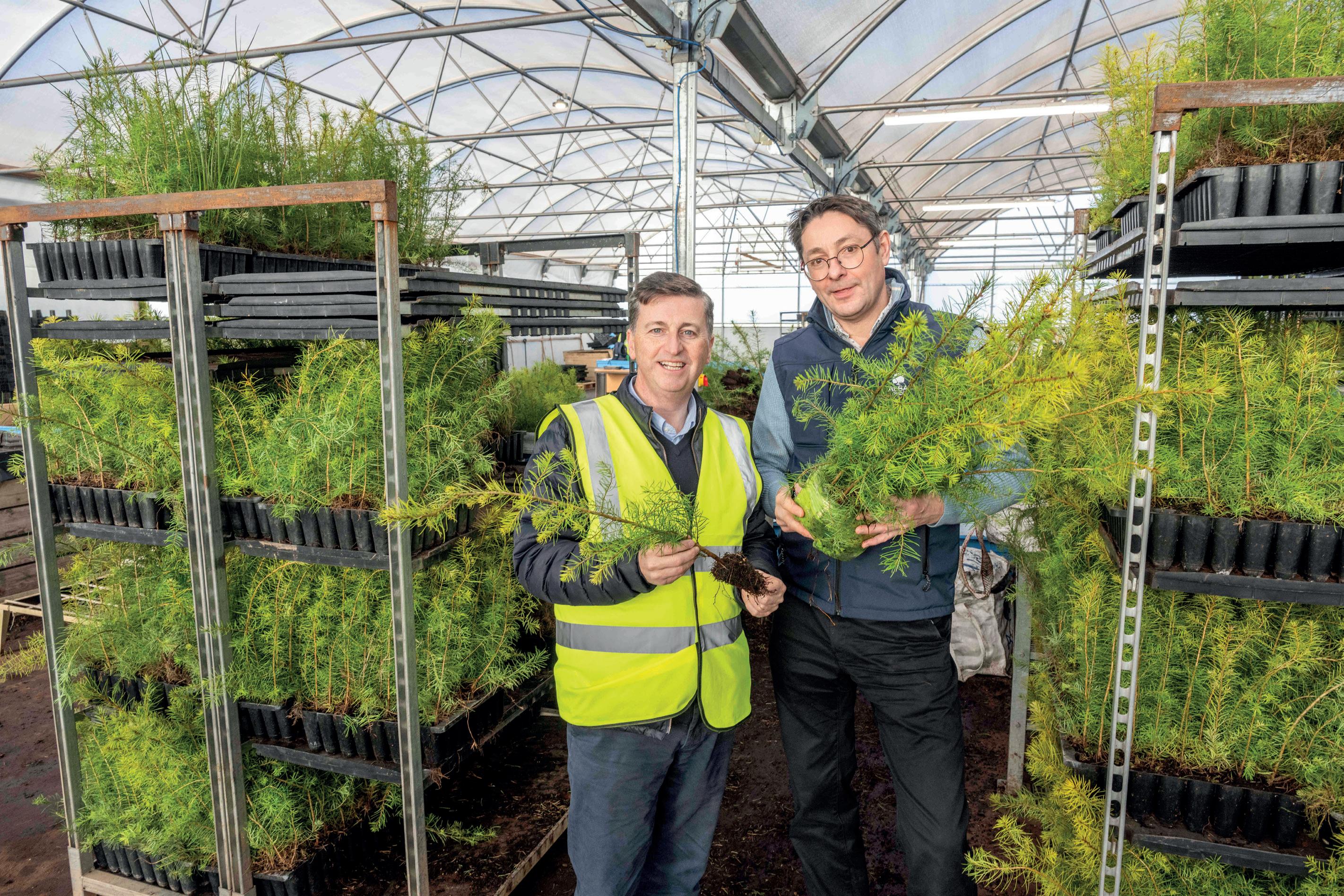
“Part of the challenge is the complete lack of coordination or integration in political parties regarding their policy platforms.”
focused, high-paying job creating, climate change positive, environmentally sound and truly national industry that already exists (forestry, obviously).
We recognise that the obvious benefits of our sector don’t sell themselves. We saw a heartening level of engagement on both the negative announcements mentioned above. The sector galvanised and got active.
We have to build this engagement into a coordinated campaign in the coming year to ensure that every party is aware that we are part of the nature and biodiversity solution, that we are not only the most cost effective way to take carbon out of the atmosphere, but we are the only way that has been shown to work at scale, and most importantly we can create economic growth and jobs in communities and regions across the entire UK.
Confor is already actively engaged in this activity, but we need the message we deliver to government and elected assemblies to be reinforced by job creators at the community and regional level. In the coming months we will be producing material that will allow you as the industry to take a leading role to place forestry at the heart of the conversation in the runup to the next election.
East Lothian candidate Douglas Alexander sees the economic and employment benefits of forestry and wood processing at close hand.
Former UK Cabinet Minister Douglas Alexander recently toured Glennon Brothers’ Windymains sawmill and Alba Trees, both located in the East Lothian constituency that he will contest for Labour at the next general election.
After the visits, organised by trade body Confor, he said: “It was great to visit these two excellent local businesses, which collectively employ more than 200 people - and to see how the forestry and wood industry can deliver on Labour’s green growth agenda.
“Glennons and Alba, and businesses like them, are providing jobs and economic growth in our rural communities and both continue to invest millions in technology and people to deliver further prosperity to East Lothian. On top of that, growing trees and using more wood plays a vital role in tackling damaging climate change.”
Pat Glennon, joint Managing Director of Glennon Brothers, which employs more than 900 people in the UK and Ireland (in-
cluding 76 at Windymains, near Humbie), described the company’s work as “a green circle”.
He told Mr Alexander: “Trees are grown and harvested in Scotland, then processed in sawmills like ours to make timber frames, fencing and other products for homes and businesses in Scotland. And then we plant more trees to replace those we cut downit’s a perfect green circle.
“To successfully tackle climate change, the best sequestration machine is fastgrowing conifers - not wall-to-wall Sitka spruce, but we must plant a strong conifer crop to provide the timber that we need to make the wood products everyone wants.”
Both he and Craig Turner, Chief Executive of Alba Trees, said the industry needed consistent policymaking if it was to thrive.
The planned cut to tree planting grants in Scotland next year could mean the destruction of millions of young trees – and undermine confidence in woodland creation.
Craig, whose company employs 130 people at Gladsmuir, East Lothian, said: “We have to buy in seeds two years before we sell the trees, and we need greater certainty on what is going to be planted to justify our investment.
“We plant in line with where policy is heading, but the fall in planting rates in
continued on page 15




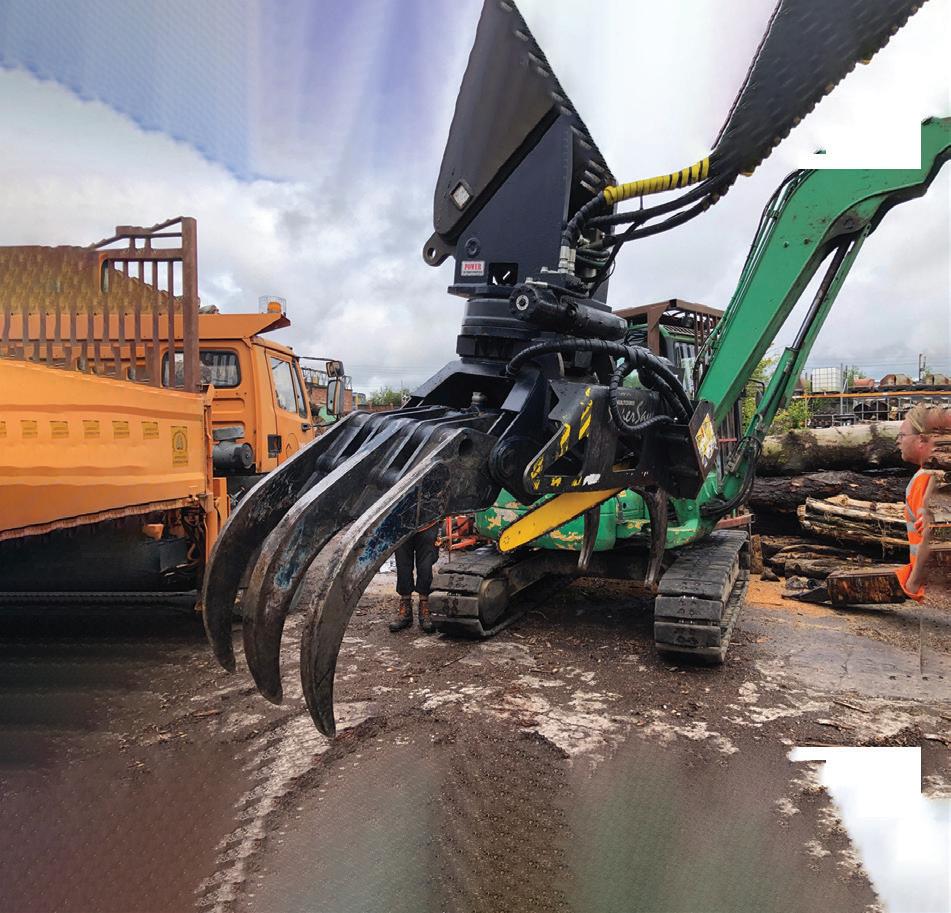


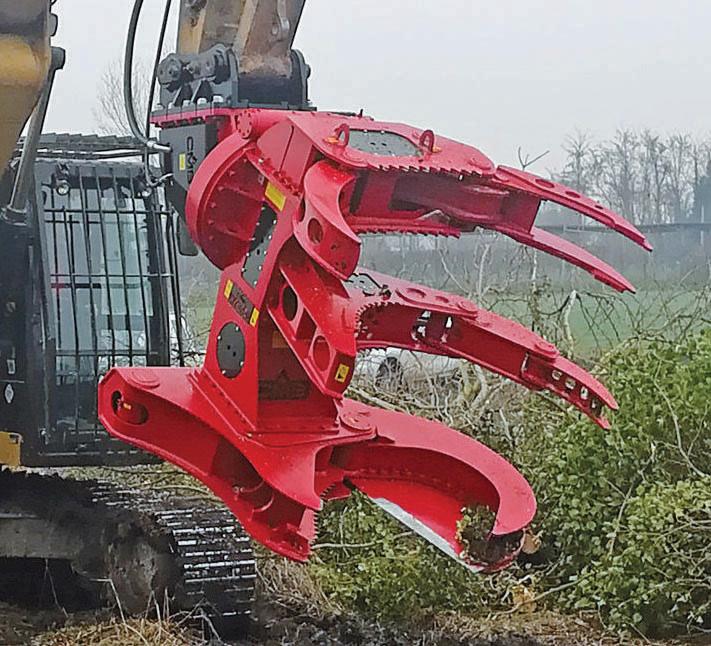
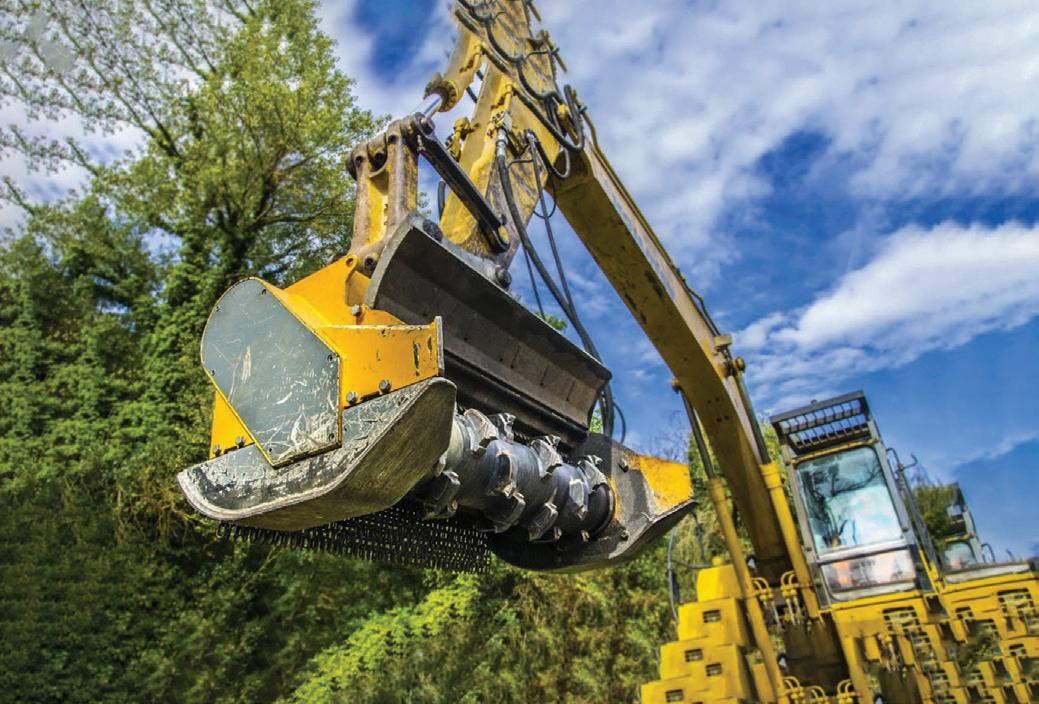
continued from page 13
Scotland after several good years means we are likely to have to compost or destroy millions of trees this coming year. It’s such a waste.”
Alba has the capacity to provide around 25 million young trees for the forestry industry each year, almost a quarter of the entire UK supply.
Stuart Goodall, Chief Executive of Confor, who accompanied Mr Alexander on the visit added: “I was delighted to see that Douglas Alexander recognises the positive economic and jobs contribution that the forestry industry provides, especially in rural areas - totalling £1 billion annually in Scotland and providing well over 25,000 jobs.
“The opportunities to use more homegrown wood in the house-building industry are significant and fit in with Labour’s ‘securonomics’ agenda - which is based on more economic activity in the UK serviced by home-grown supply. This supports the ‘green circle’ supply chain that Pat Glennon talked about and fits in well with Keir Starmer’s stated desire to build 1.5 million new homes in the first term of a Labour Government. To do that in a sustainable way means using more home-grown wood.
“Mr Alexander was clearly impressed with the high-tech nature of operations at Humbie and the high level of investment in the sector, with the potential for tens of millions of pounds to be invested in Scotland alone annually.
“Most of all, he recognised that the industry needs clear and consistent policy to unlock this investment and to deliver the planting and increased wood use that in turn delivers significant economic and climate change benefits. Our industry is a perfect match for the kind of green prosperity that Labour wants to promote.”
Douglas Alexander held several ministerial positions in the Labour Governments of Tony Blair and Gordon Brown. He was Minister of State for Europe (2005-06), Secretary of State for Scotland (2006-07), and Secretary of State for International Development (2007- 2010). In opposition after 2010, he served as Shadow Foreign Secretary.



The Confor Dinner and Awards 2024 are right around the corner! Please make sure to book your tickets in advance, as we anticipate a sellout event like last year - I don’t want you to miss out.
For those who have already secured a place, I look forward to seeing you there! Please ensure you inform us of your accessibility and dietary requirements by 23 February. If you have any questions regarding the event, contact me directly at eliza@confor.org.uk.
Jason Wilkins, a wood turner based in Cardigan, Wales, has been working hard on the awards to be presented to our winners on the night. You can find more of his work at www.oldforgecrafts.com.
A big welcome to our newest members.
Scotland: JDM Woodland Management and Matthew McCafferty. England: Westacre Woodland Management, Simba Forestry, Agrigem Ltd, Chris Hyde Timber, Professor Edward Wilson, and Mark Beer (student).
Contact Eliza on 07918 880285 or email eliza@confor.org.uk
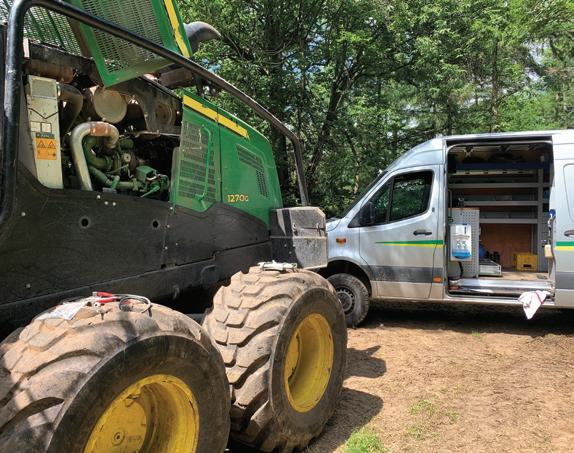


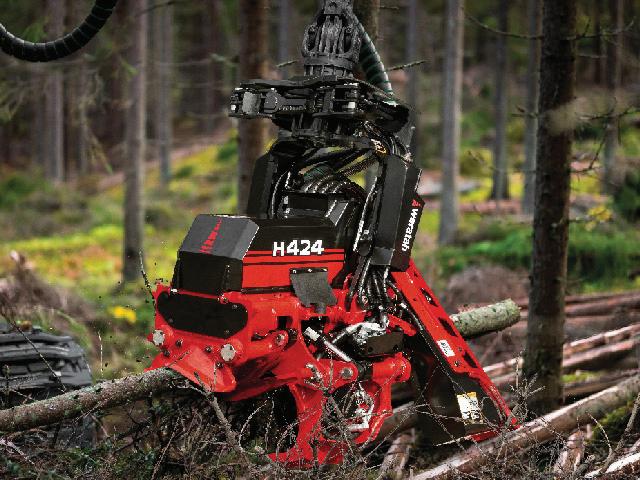



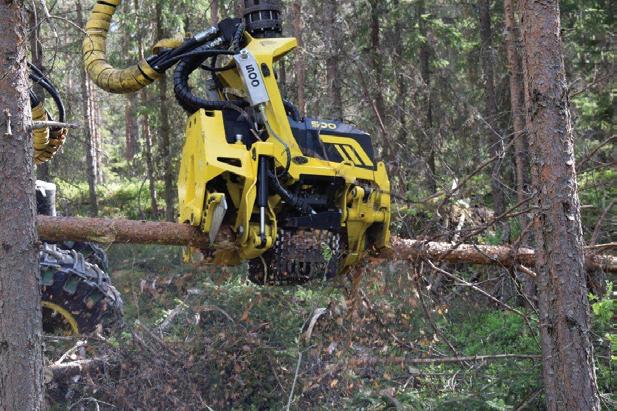
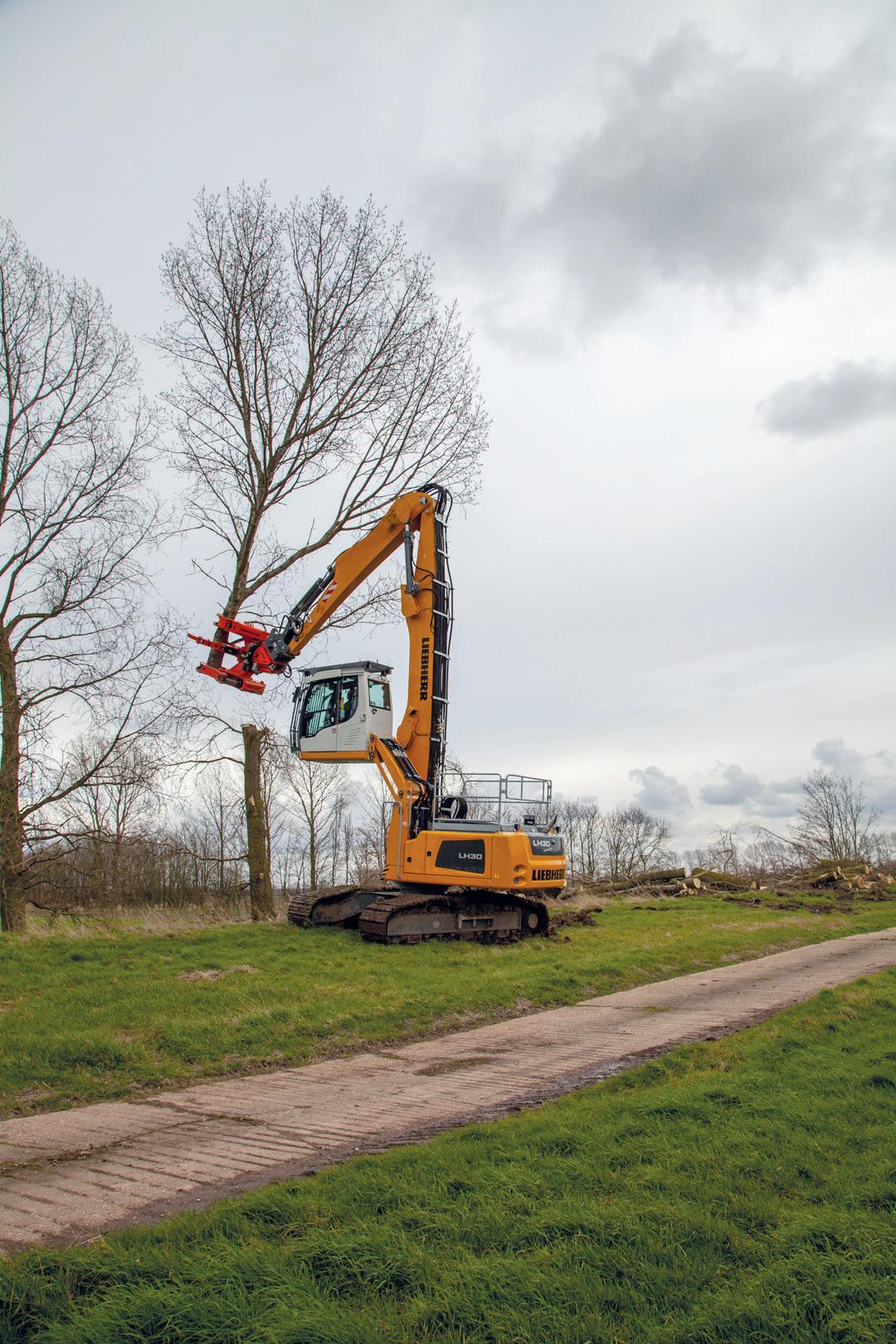

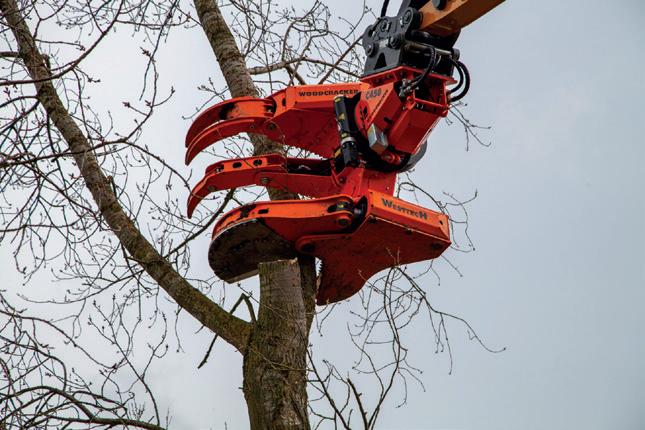








Planned cuts to the woodland grant budget will torpedo Scotland’s chances of meeting climate and nature targets.
Confor and Woodland Trust Scotland teamed up to condemn proposals for a massive 41% cut in the money available to support woodland creation and management in Scotland through the Forestry Grant Scheme.
The budget announced by Finance Secretary Shona Robison MSP on 19 December 2023 saw a cut of over £32 million in funding for woodland creation in 2024/25. In a subsequent article Cabinet Secretary Mairi Gougeon MSP advised that the funding allocation of £39.2m for woodland creation (out of a total budget of £45.4m) would “help create over 9,000 ha of new woodland”.
This came just days after a modern-day record of 13,100ha of planting had been approved for the 2023/24 planting period.
Stuart Goodall, Confor CEO stated: “The Scottish Government has increased its woodland creation targets annually as a key element of Scotland’s commitment to be net zero by 2045, and we applaud that ambition. The amount of new woodland created has fallen over each of the last five years, however. This proposed cut will only serve to make the gap between targets and delivery ever wider. A bad situation will become worse.”
Confor and Woodland Trust Scotland urged their respective members to contact MSPs and iterate the importance of the for-
estry sector for political priorities like job creation, climate change mitigation and support of the rural economy.
Alastair Seaman, Director of Woodland Trust Scotland, said: “The Scottish Government must remember that warm words won’t stop climate change or restore nature. We need investment in new woodland – and fast – if we are to have any hope of a strong economy and a healthy landscape in the years to come.
“Creating new woodland and protecting what we’ve already got is one of the simplest and most effective responses we have to the climate and nature crises. It makes no sense to pull the rug out from under the sector in this way.
“On behalf of the thousands of members from both organisation who are committed to increasing planting in Scotland we are calling on members of the Rural Affairs Committee to recommend to the Cabinet Secretary that these proposed cuts are reversed.”
The subsequent response resulted in widespread media coverage, including in national newspapers and a prime-time slot on BBC Reporting Scotland.
Our comments were also raised at a Holyrood meeting of the Rural Affairs and Islands Committee. Ms Gougeon responded that the cut to the Forestry Grant Scheme was a “very difficult settlement”. When asked about Government’s ability to meet their stated planting targets she replied that “this is a target we are unable to meet, this is disappointing” and said that this is not “a place I want to be”.
The Cabinet Secretary went on to say
that she was committed to working with industry to work within the budget as set out in the proposed bill, and that Government’s focus will be on matching the planting levels that have been achieved in previous years within the funding currently available.
There is indeed work to do in this financial year. Confor is liaising with Scottish Forestry to try to get as much planting in the ground and paid for within the current budgetary cycle. Scottish Forestry is responding constructively.
However, it is still Confor’s view that a cut of the scale proposed will lead to job losses in struggling rural areas, the destruction of millions of young trees, and a blow to sector confidence that will take a long time to recover.
Ronald Christie, owner of Christies of Fochabers, recently described the cuts as an “absolute shocker” to BBC News. He said: “We’ve been encouraged to grow trees by the government to reach this target of 18,000 hectares.
“To grow trees takes a three-year cycle and unless we’re told in the next few weeks if there is funding available, this whole lot will have to be destroyed.”
He said that would amount to about 10 million tree seedings being ripped up and burnt with perhaps the same happening again next year if the funding allocation remains the same.
Confor continues to lobby for additional funding and will continue to maintain pressure on the Scottish Government seeking an increase in the forestry budget for 2024/25.
Members of the International Sustainable Forestry Coalition recently visited Scottish forestry sites for insight on modern, sustainable planting for multiple objectives. David Lee reports.
Agroup of senior executives from some of the world’s largest forestry and forest products businesses visited two large woodland creation sites in central Scotland to gain insights into the Scottish approach to delivering wide-ranging benefits through planting trees.
The visit to Knowes & Keltie, near Dunning, Perthshire, and Jerah, between Dunblane and Menstrie, was attended by global forest sector leaders from Japan, Australia, New Zealand, the United States, Finland and Sweden.
They all represent companies which are members of the International Sustainable Forestry Coalition (ISFC), open to “all global forestry owners, managers and investors who subscribe to the highest environmen
ment at COP28 in Dubai last December supporting the need to substantially increase the use of timber in construction, and the need to connect this ambition to increasing the supply of sustainablysourced timber and fibre.
The announcement was made at a COP Presidency event under the auspices of the Forests and Climate Leaders Partnership (FCLP), co-chaired by the then United States Special Presidential Climate Envoy, John Kerry, and the Minister of Lands and Natural Resources for Ghana, Samuel Jinapor.
A coalition of 17 countries - including the UK - committed to “advancing policies and approaches that support low carbon construction and increase the use of wood from sustainably managed forests in the built environment” by 2030.
Ross Hampton, Executive Director of the ISFC, said: “Scotland is a fascinating example of tree planting within a framework of high levels of regulation, wide stakeholder consultation and competing drivers for land-use. At Jerah and Knowes & Keltie we saw modern and multi-species forests planted for a wide range of reasons - envi-
ronmental, economic and social, and learnt how local communities are engaged in the forest planning process.”
When Jerah was planted on the hill above Menstrie, it was designed to reduce water flows down towards the town and reduce flood risks. Almost 1.3 million trees were planted on the 600-hectare site in 2018 during a carefully-planned project which also retained buildings of archaeological importance, improved public access for recreation and created new habitats for birds of prey. The planting was overseen by Andrew Vaughan, Regional Manager for Tilhill, who joined the Coalition visit alongside Ian Robinson, Managing Director of Scottish Woodlands Ltd, which manages Knowes & Keltie.
Scottish Government Minister Mairi McAllan visited the 450-hectare Knowes & Keltie site in 2022 and said Scotland was at the time planting 80% of the UK’s new woodlands because it recognised that “forests planted to produce wood can deliver a very significant range of benefits for our rural economies and for the future of our environment”.
Almost 1 million trees were planted at Knowes & Keltie, which is expected to provide a 3,150-tonne annual benefit in terms of carbon dioxide capture and storage. The scheme also promotes public access by linking forest roads and tracks to an existing network of core paths - particularly suitable for mountain bikers and walkers.
Stuart Goodall, Chief Executive of Confor, said: “This was an important visit to showcase multi-purpose forestry in Scotland. There is a growing global awareness of the valuable contribution that tree planting and the greater use of wood can make to tackling climate change and the ISFC has been established to support that and to promote the sustainable management of forests.”
Stuart said the visit showed that forestry and wood had a huge role to play in both mitigating climate change - and helping the landscape adapt to what is already happening.
He explained: “Trees soak up carbon dioxide as they grow and then can be harvested and made into wood products, which retains that carbon dioxide. In addition, schemes like Jerah are being designed to help alleviate the increasing risk of floods, which helps the landscape adapt to the impacts of climate change that we are already seeing, with more extreme weather events.”

PROFESSIONAL PERFORMANCE.
LONG WORKING TIMES. BATTERY POWERED.


STIHL’s extensive range of professional grade battery-powered tools continues to grow. With long lasting smart batteries that deliver fast charging times and consistent performance, STIHL has the right tool for any commercial user.

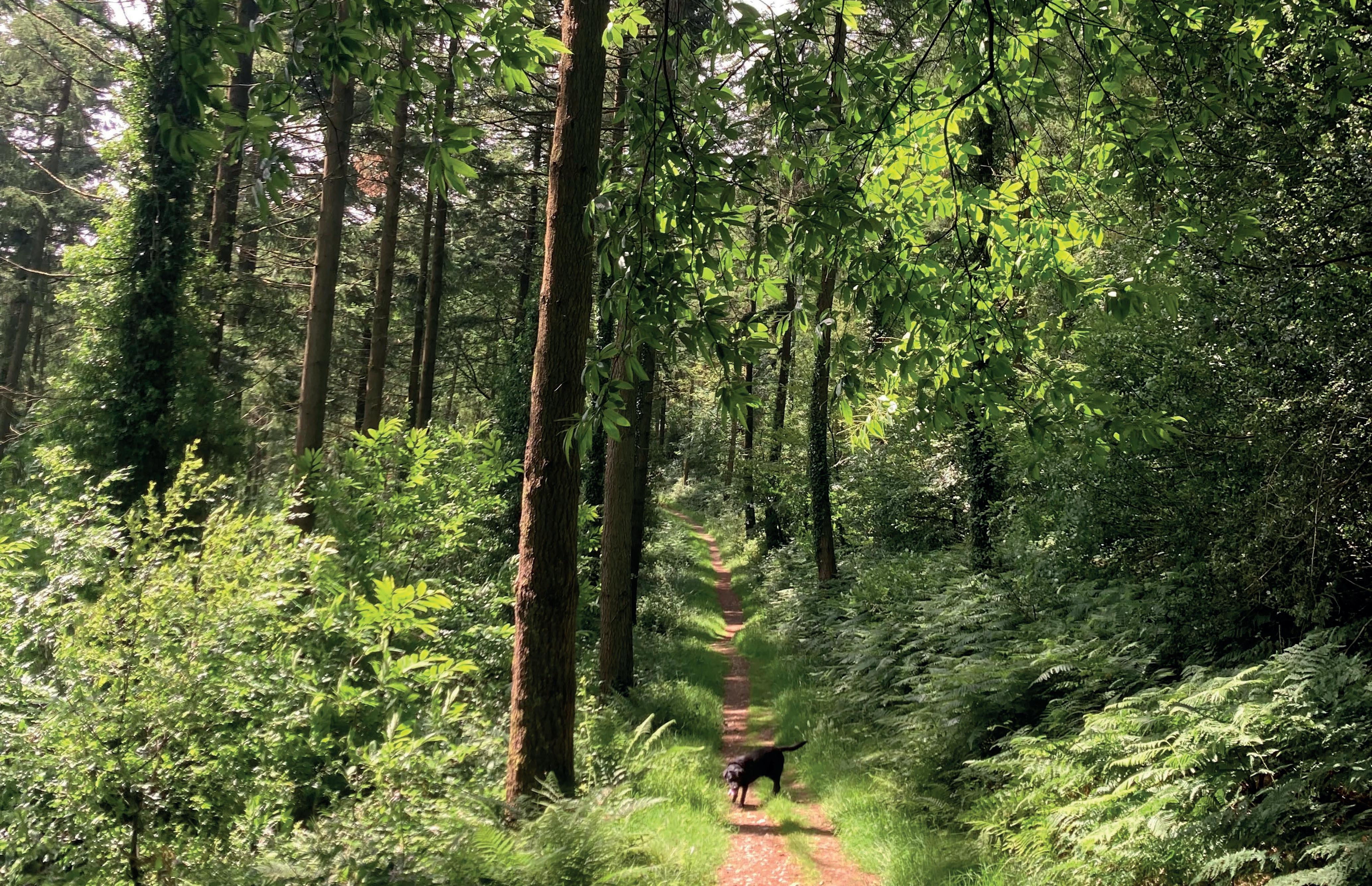
Walking through English woodlands, we are surrounded by a story of human endeavour and hope in the face of an unknown future. A forester plans and plants for several generations ahead and this need to predict future markets has led to a range of interesting legacies in our woodlands today.
We are surrounded by a wonderful canopy of oaks because they were planted to support wooden ship building, or by overstood oak coppice because the regrowth gave the perfect curve for the keel of a
wooden clinker-built fishing boat. England’s iconic bluebell carpets under hazel coppice only exist because we were confident that we would need an endless supply of hazel hurdles for fencing in our sheep.
Even our much-loved hedgerows with their beautiful spreading trees are there due to a bureaucratic legacy; in the sixteenth century leases often required the tenant to plant several oak, ash and elm trees for timber every year, leading to the regular punctuation along our skyline today, though sadly depleted by Dutch elm disease and ash dieback.
The foresters who planted millions of softwoods for pit props after the First
World War could not foresee the collapse of the mining industry many decades later, but they did successfully predict our need for timber for houses, fencing, sawn wood and paper.
Our woodlands today, and the foresters who manage them, are providing society with an essential resource. The UK imports a staggering 81% of our timber and wood, making us very vulnerable to fluctuating supplies and prices in an increasingly unstable world. Our domestic production is growing slowly, with Scotland providing over half of our output and England pro-

viding less than a quarter.
Of English woodlands today, only around half are managed, usually for timber, wildlife, recreation or a combination of objectives.
The UK Forestry Standard (UKFS) ensures that – whatever the primary purpose – consideration and protection are always given to wildlife, water, soils, climate, historic environment and people, and that enhancements are made where possible. In October 2023, a new edition of the UKFS was published to raise the baseline of good practice further, supporting improvements to natural processes for water and reducing the maximum proportion of a single tree species in new woodlands from 75% to 65%.
There are also requirements for more action on deer management to allow our woodlands to establish and regenerate.

Left and below: Woodland with English bluebells.
Far left: Managed mixed conifer woodland.

By considering the biodiversity factors set out in the UKFS for the creation and management of woodlands, we can deliver a thriving environment for woodland associated wildlife. These include:
• Priority habitats and species
• Native woodlands
• Tree and shrub species selection
• Forest and stand structure
• Riparian zones
• And others.
Despite an increase in native broadleaved woodlands since the 1970s, the UK’s 2023 State of Nature Report records that woodland wildlife has declined in abundance and diversity over the same timeframe. Woodland loss and fragmentation are an important factor, as well as loss of ecological condition and lack of management.
In 2020, Forest Research published the first systematic Woodland Ecological Condition assessment, an impressive field survey that established the condition of plots across the country using 15 indicators, such as deadwood, veteran trees, open space, plant species, and structural complexity. The results show that in Great Britain, only 7% of native woodland stands are in favourable condition with the rest falling below that standard due to a range of factors.
Deer and grey squirrel pressure are major factors, with populations of both at an all-time high. Deer damage ground flora and suppress natural regeneration of trees by browsing, which removes the shrub layer where birds nest and insects flourish. Grey squirrels can change the composition of woodland by damaging particular tree continued on page 22

continued from page 21
rels that have no immunity.
Lack of deadwood is another key reason for poor woodland condition, with the majority of stands containing insufficient levels of standing and fallen deadwood. Deadwood is a vital part of a healthy ecosystem supporting a wide range of insects, fungi and plants, which in turn support a range of birds and mammals.
The survey also identified that lack of effective management – creating light, structure and encouraging regeneration –is a key limiting factor to achieving favourable ecological condition.
An article by Barsoum et al in the Quarterly Journal of Forestry (June 2020) explained the importance of functional diversity in making woodlands resilient. A greater range and abundance of species is more likely to lead to a healthier forest ecosystem, with a greater range of predator/prey relationships helping to keep pest species under control.
Managing woodlands well requires managing light levels to create a diverse structure within your woodland, with diversity of plant species on the ground, at shrub height, and in the canopy. This can be achieved by harvesting trees sustainably,
encouraging regrowth and regeneration, and providing plenty of open space as well as edge habitat where bramble and shrubs grade into high forest.
Such diversity in plant species and structure supports animal species higher up in the food chain – insects, birds and mammals - by providing a range of food sources and shelter, with niches for nesting, roosting and hibernating. Managing land in silvicultural and agricultural systems that are close to nature results in the greatest diversity of species and more abundant wildlife.
This holds true for traditional systems such as coppice with standards and is also true of modern approaches like continuous cover forestry, where trees are selected individually for harvesting, leaving other trees to grow on in a mix of age and species.
Improving the ecological condition of woodlands also provides nature-based solutions to other environmental problems. Recent research from the University of East Anglia has highlighted the importance of nectar sources in woodland canopy to wild bees, one of the most significant species in pollinating our food crops.
Predicting future change, especially in terms of climate and taking proactive measures to allow habitats to become more resilient, is an important consideration and one that is addressed in the government’s Tree Health Resilience Strategy.

For woodland wildlife, the most important action to take is to protect, buffer, connect and carefully manage our ancient woodlands, which now only cover 2.5% of England.
By good management of these irreplaceable habitats and restoring natural processes and functions within and between them, as set out in our policy document ‘Keepers of Time’, we offer wildlife the best chance to expand populations and move in response to environmental change.
Across the wider landscape, regenerative farming (farming with nature and soils in mind) can produce a harvest alongside nature recovery, often through greater integration of trees and crops. Similarly, forestry can produce a crop of commercially valuable trees, when they are integrated within a design that enables the development of natural woodland ecosystems as a framework or foundation stone.
Woodlands that were planted in the past using limited tree species or that have never been thinned (by removing some trees so that others can grow bigger and straighter) can rapidly improve for wildlife if we harvest timber in ways that restore natural ecological features. Even in areas where woodland has been planted on habitats which we would not now consider planting, such as peatland and heathland, managing woodland to maintain open habitat features, either permanently, by re-

storing mires within wooded landscapes, or temporarily, by planning the location or rotation of clearfell restock areas for ground nesting birds or for reptiles, can help to support abundant and rare wildlife.
Modern forestry operates over large areas, harvesting trees carefully and in turn bringing light to the woodland floor, promoting growth of flora, shrubs and trees that then grow with minimal disturbance until the next thinning cycle. Done correctly, woodland management can not only boost species abundance, but it also lead to private investment to help fund much larger areas recovery, reducing our reliance ment grants.
A combination of best geted management, restoration woodlands and bespoke support cies recovery can help us targets of halting the decline 2030, reducing the risk of species tion and restoration of 500,000 of wildlife-rich habitats by 2042 mental Improvement Plan 2023).
A version of this article was published on the Forestry Commission blog in Decem ber 2023. Further information and helpful resources can be found on the ‘Woodland Management Matters’ section of their website.
• UK Forestry Standard
• ‘Biodiversity, forestry and Special Report (Confor)
• Regenerative Forestry (Soil Association)
• Woodland Wildlife Toolkit (https://woodlandwildlifetoolkit. sylva.org.uk/)
• Climate Change Hub (Forest Research)
Each day timber harvesters collect very useful data on every tree they process. Currently that data is either not used or only used by the harvesting company - this project aims to collate data from multiple sources across the UK and then make it available for wholescale analysis.
This data can be used in several ways, such as at forest level to better understand the log percentage breakout and to inform the sawmill of material available in real time. There are also applications such as informing and improving GB production forecasts, informing official statistics and creating the opportunity for greater analysis into timber properties.
The latter is of upmost importance as the industry explores alternative species; we need to understand the resultant timber better. This type of data will be very useful to timber buyers as well.
A UK research project is set to begin with a pilot with key industry partners contributing this data. Similar projects have been running for many years in Finland and Sweden, and the UK team has met with representatives from
So far, the project has been funded by the Terrestrial Natural Capital Ecosystem Assessment (tNCEA) Programme via Forest Research. While there will be opportunities to apply for other sources of Government funding, this will require matched contributions from the industry. Therefore, in time, the project team will be seeking funding from stakeholders to support the collection/inputting of raw data, physical data housing and initial analysis.
The team will also consider training development on various aspects to ensure the data collected is of the highest quality:
• Machinery operators on calibration
• Forest managers on data usage
• Uploading of data
There will be other outputs of the research, such as the standardisation of terms e.g. there are different names given to the same log lengths and diameters across the industry; these need to be consistent to ensure the data runs smoothly.
A more detailed report on how the pilot stage can be carried out is due shortly. If you wish to be involved with the project, please contact Richard
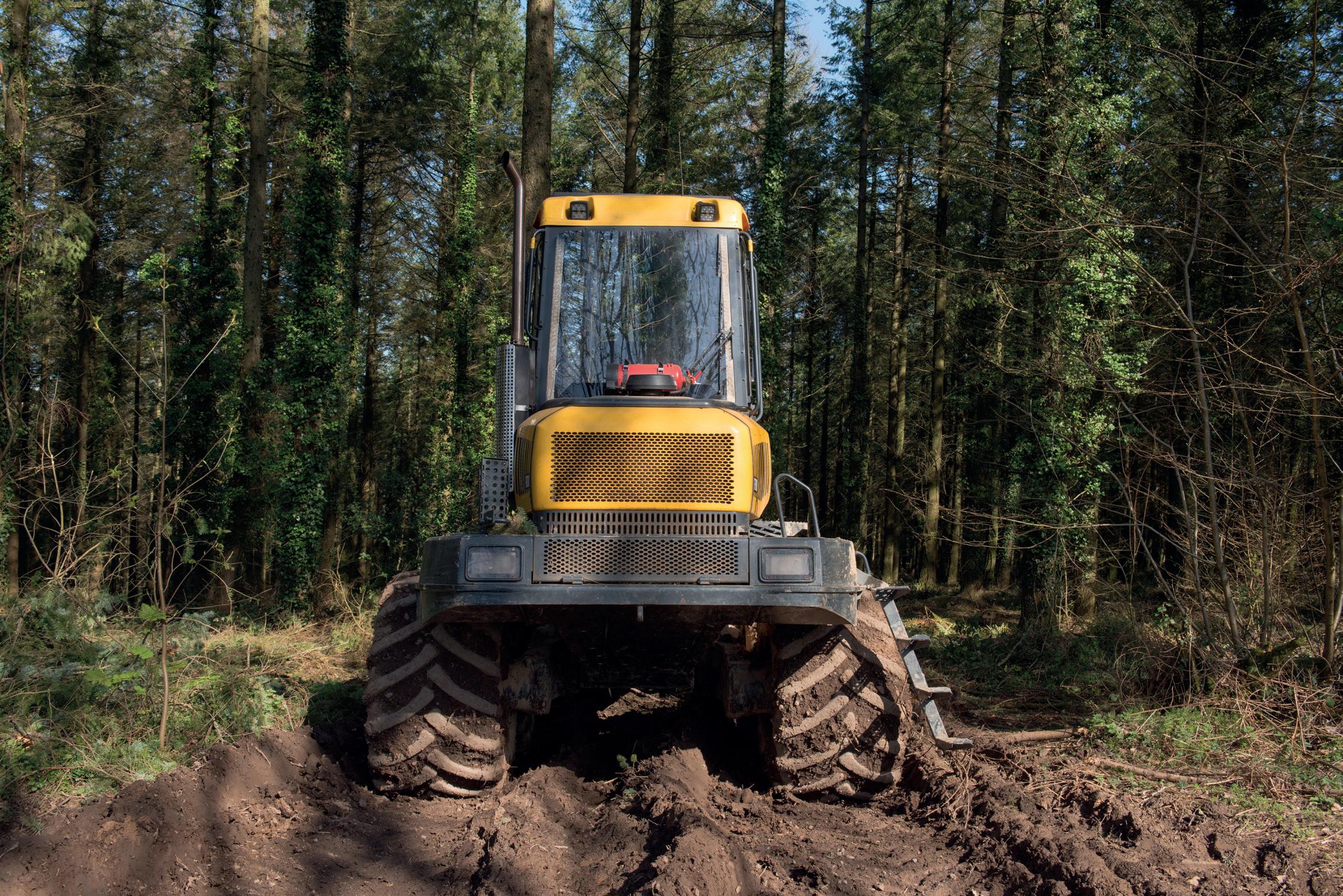

The process of planting trees becomes more challenging year on year while the need to plant them grows at an equally challenging rate. The obstacles which are faced by practitioners can often be as simple as limitations in the number of options available for tree planting, such as few alternatives to plastic tree shelters or limited
alternatives to chemical weevil control.
As an industry we need more variety in our tool belt to solve these challenges. However, each new solution requires careful consideration and research before it can become a new operating standard. Even if successful, associated costs may then limit the widespread adoption of possible alternatives.
One such challenge, though niche, is the control of hares in new woodland creations.
The forestry industry is currently limited as to how hares can be managed within fenced woodland enclosures to reduce damage to newly planted trees. Increased legal protection has also raised the profile of mountain hares and set the precedent for greater considered management of the species within woodland sites.

In areas where hare numbers are particularly high, two methods of management are traditionally used; the lethal option of culling which is now more difficult following the Schedule 5 listing of Mountain hares, and the non-lethal option of driving hares out of fenced enclosures. Both require time and energy which can vary widely depending on the size of the planted area.
Effectiveness of these two methods can also be uncertain and understanding of hare behaviour within fenced woodland enclosures is limited - more effective alternatives to current hare management strategies are needed. As a small first step toward a different alternative, the environmental team at Scottish Woodlands, with financial support from the Scottish Forestry Trust, has been working on trialling other options.
This study aimed to investigate the effectiveness of one-way structures in allowing Brown hares (Lepus europaeus) and Mountain hares (Lepus timidus) to escape from fenced woodland enclosures through the creation of one-way gates and ramps,
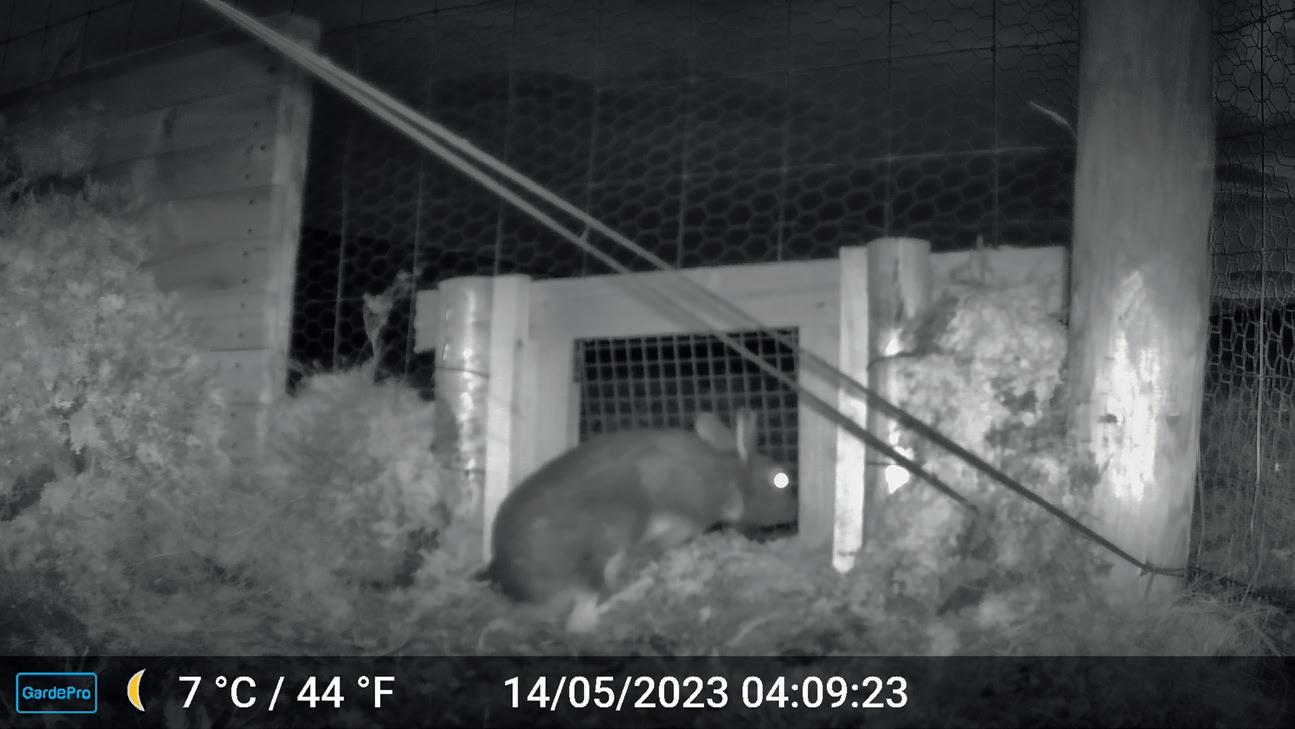
monitored through the implementation of motion-sensor camera traps.
In the Monaliath mountains near Aviemore, one of these is being put to the test. It may be a peculiar sight for those who know the landscape: imagine a deer jump but on a much smaller scale… a hare jump.
Deer jumps, which are large earthen ramps leading to a wooden retaining wall near the same height as deer fencing, allow deer to climb up and jump out of enclosures without being able to jump back inside. A hare jump follows the same concept.
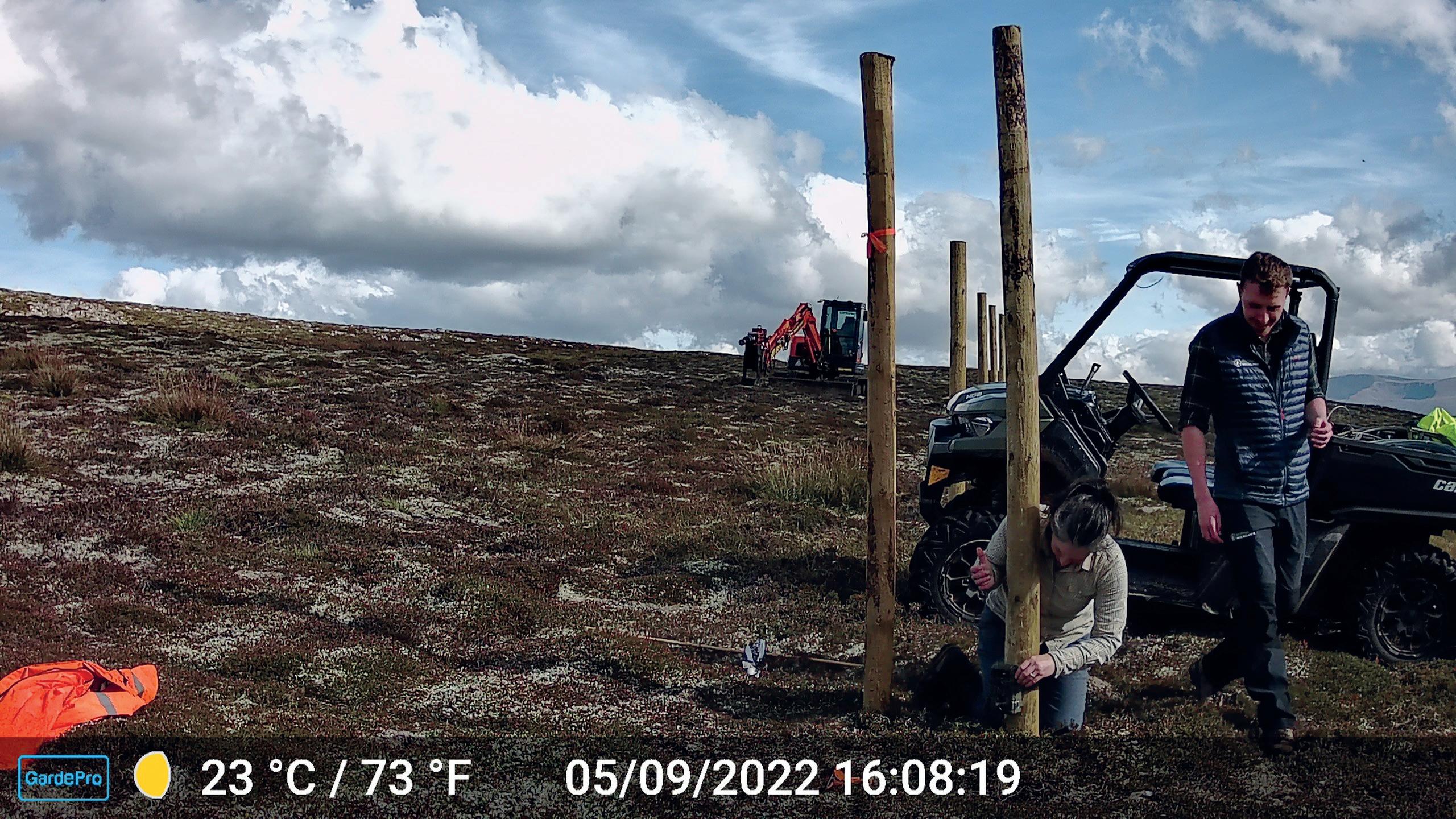
Acting as a one-way passage for hares to leave a fenced woodland enclosure which can be passively used by animals trapped inside, a hare jump is a small turf covered ramp set against a short retaining wall to the same height as the rabbit netting (1.2m).
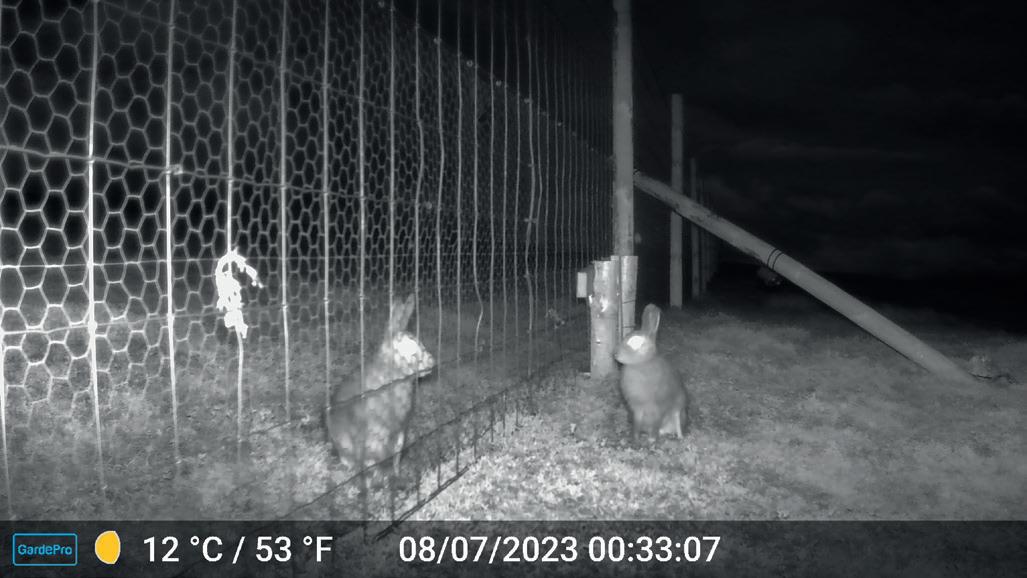
The question the environment team asked was ‘will hares exit an enclosure using a one-way structure?’. The answer is evidently yes. Over an eight-month period, hares were observed through camera traps as a new deer fence was erected, rabbit netting added, and two different types of oneway structures installed; a swing gate, and a hare jump.
Within 11 weeks of the one-way structures being implemented, they were used by at least four hares recorded leaving the enclosure. Most of them used the ramps rather than the gates, and all of them exited structures which were installed at a corner location of the enclosure, perhaps creating a ‘funnel’ effect.
There is also some excitement about the prospect of ramps providing an opportunity for hares to leave fenced enclosures following spring snow melt, after high winter snow levels allow hares to pass over rabbit netting, becoming trapped inside as the snow levels recede.
Although additional study is required to determine how effective the structures may be in reducing hare damage to trees, number of structures required, and most effective placement, there is clear potential to add hare ramps to the repertoire of control strategies currently used by forest managers.
After all, one less hare in an enclosure is one less hare to worry about.

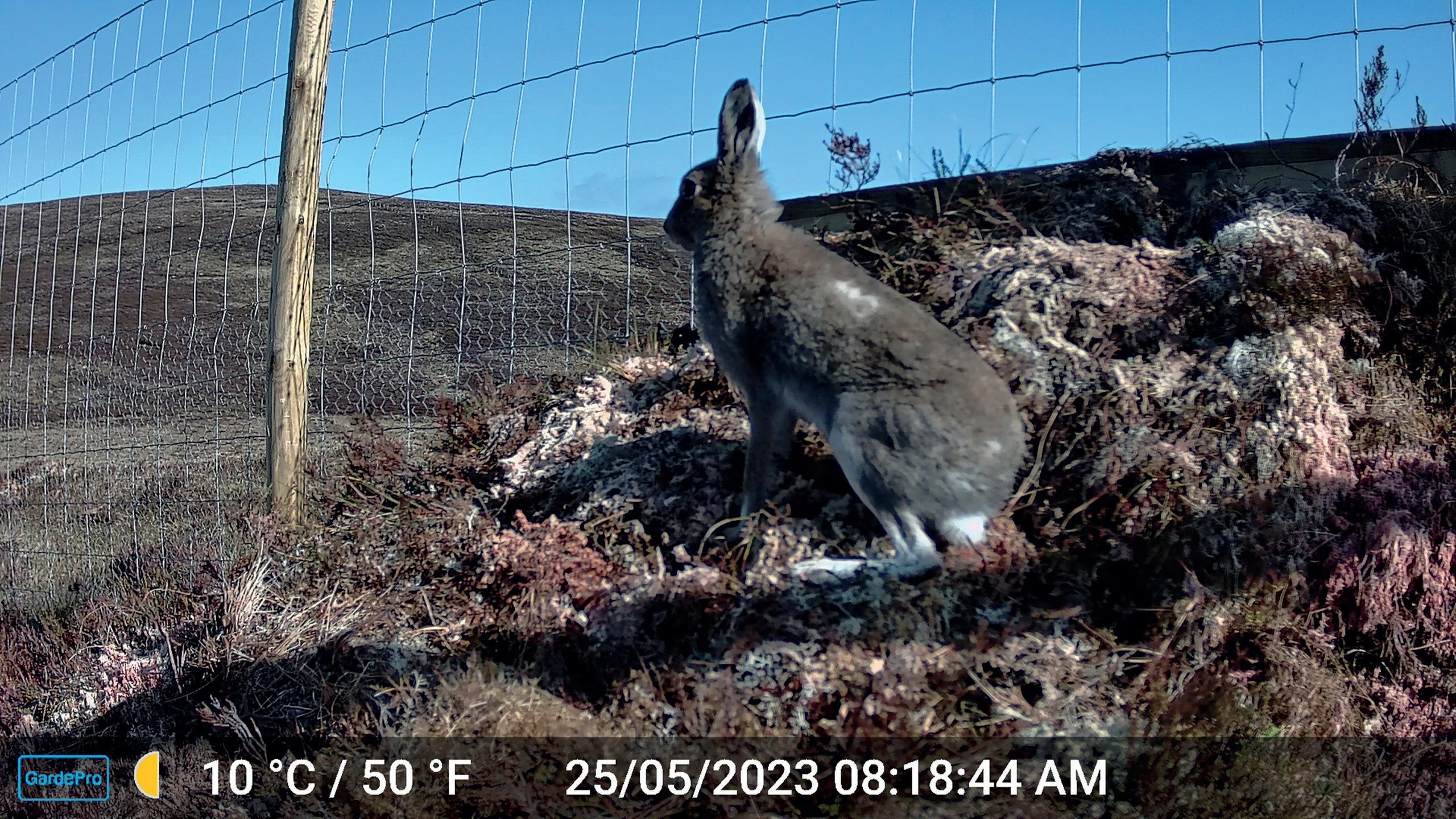

The UK’s largest forestry, woodland, arboricultural, fencing, trees and timber show, APF 2024, will take place once again at Ragley Estate, Warwickshire on 19-21 September 2024. Exhibition Secretary Ian Millwall shares how planning is progressing with just over six months to go.
APF 2022 was a huge success with 320 exhibitors and over 23,000 trade visitors attending over the three days. Exhibitors reported excellent business throughout and APF 2024 will look to build on that success.
The 150th exhibitor has just booked, and demo stand space is now at a premium. Repeat bookings are a testament to the show’s reputation for being the place to sell into the forestry and arboricultural industries. Over 95% of all visitors are forestry or arb professionals so exhibitors have a very targeted audience.
The APF show was originally set up to serve the trade and has always had that focus. We very much welcome the public to the event to learn about trees and timber but we will never lose sight of the core trade business. That way exhibitors know that almost everyone coming past their continued on page 28

The leading project developers for the Woodland Carbon Code, CarbonStore is able to navigate all the technicalities and details associated with securing the necessary accreditation.
100% success rate in validating and accrediting projects under the Peatland and Woodland Carbon Codes, with ongoing checks to certify the project’s standards.
Partner with CarbonStore to help deliver the best service for your clients.
Get in touch with
David McCulloch:
t: 07500 950832
e: info@carbonstoreuk.com
w: carbonstoreuk.com
Near Portree, Isle of Skye, Scotland
Area: 479.15 Hectares / 1,183.98 Acres
Offers over £2,200,000
• High volume of maturing commercial timber with LTFP felling approval
• LTFP approval to restock the forest with approximately 67% productive conifer
• Substantial scale providing long term timber supply and tax benefits
• Outstanding location with stunning panoramic views
• Good access on to an A class public road
Native Planting

We plant a great number, adding diversity to our woodlands.
Woodland Creation
We plant on average 350 hectares of new woodland each year.
Commercial Restock
From small shelter belts to 100 hectare sites.
Invasive weed control
From handweeding through to Stem injection treatment.
Herbicide / Pesticide Application
Restock control of Hylobius weevil along with Noxious and Invasive weed control.
Strimming / Brushcutting
From the path network at Traquair Estate to restock re-spacing.
Chainsaw work / Bracken bruising via ATV and roller
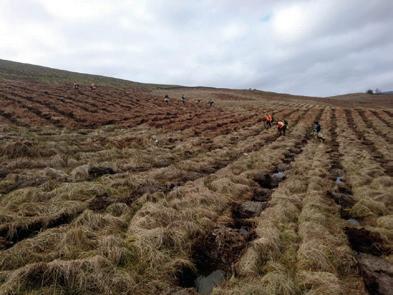


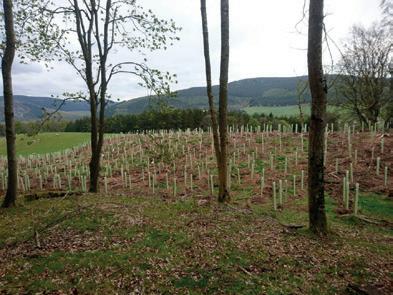
www.bordersforestry.co.uk
07511734589

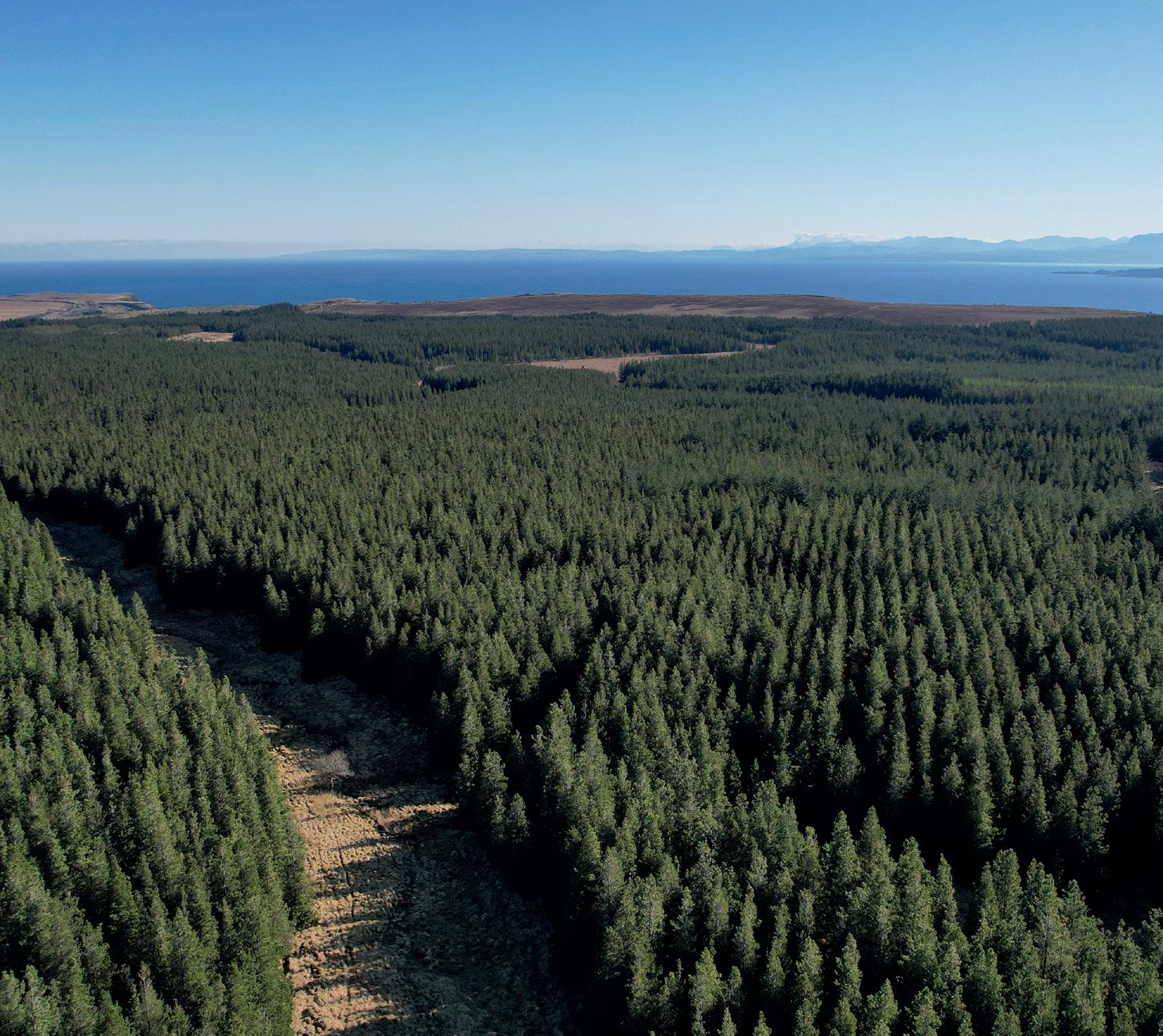
+44
patrick@landfor.co.uk
www.landfor.co.uk

continued from page 26
stand is a potential customer.
We have always been keen to attract not just the large, multi-national companies but smaller companies with great new ideas and products. Our stand prices are very competitive when compared to agricultural shows and other trade events. Stands at the event start at just £920 and Confor trade members benefit from a 10% discount on prices.
There will be around £80 million of machinery and equipment on show, much of it shown working under realistic conditions. There will be the opportunity to try out the latest saws and climbing kit and talk to experts about training.
In recent shows we have looked to embrace closely allied industries such as fencing. APF 2024 will see an enlarged Fencing Village dedicated to all things fencing. Visitors will be able to see all the very latest tools, equipment, machinery and materials, much of them in action.
“WE HAVE ALWAYS BEEN KEEN TO ATTRACT NOT JUST THE LARGE, MULTI-NATIONAL COMPANIES BUT SMALLER COMPANIES WITH GREAT NEW IDEAS AND PRODUCTS.”
We will host two UK championships on the Thursday and Friday of the event, sponsored by McVeigh Parker; one for quick fencing using metal posts and other for traditional wooden fencing. The championships were extremely popular in 2022 so we have expanded the fencing arena to allow more teams to compete.
Our very popular world pole climbing championships, sponsored by Husqvarna, and the European chainsaw carving championships, sponsored by AW Jenkinson and Tilhill, are also set to return.
The woodland crafts area, probably the largest display of traditional woodland crafts anywhere in the UK, will be another major draw for visitors. Many of the crafts on show are very rarely seen and it is vital that these skills are kept alive. You can see everything from coracles to clogs to charcoal making. Talk to the craftspeople and find out how you can learn a new skill.
The British Horse Loggers will be giving daily demonstrations and offering the opportunity to try your hand at handling a timber horse.
For the arborists we will have a highquality tree climbing competition with some excellent prizes on offer. If you have not competed before then there will be classes for all standards of climbers from novice to elite. Experts will be on hand to give advice on sport climbing and how you can get involved.





Additionally, we welcome the return of the UK Lumberjacks to APF 2024. We will stage the UK championships with five dis-

ciplines including the two board climb and the underhand chop using axes and crosscut saws in a trial of skill and raw power. The souped up ‘hot’ saws will make their very noisy presence known!
We have a great site and viewing area
planned for the return of the UK Forwarder Driving Competition.
For the first time since we staged the world championships in 2002, we hope to have the APF & UK Loggers championships. This is a five-discipline event for



chainsaw operators including felling, precision crosscutting, limbing and the bar and chain change. If you think you can change the bar and chain on your saw in under nine seconds, then perhaps you should think about competing! Don’t believe it can be done? Look for it on You Tube.
There is far too much to do in one day so come for two or all three days. We have a big campsite on site. Advance tickets and camping can be booked online via our website. Remember, Confor members get free entrance to the show.
Full details of the show, a list of booked exhibitors and details of the competitions can be found on our website: www.apfexhibition.co.uk
part of the event we are hoping to stage the APF Loggers Championships. This event would be a precursor to the possibility of the APF and UK Loggers submitting a bid to stage the World Logging Championships at APF 2028, and offers a great opportunity for sponsorship branding.
The WLC competition consists of five disciplines which all competitors must compete in to decide the overall winner. These events are the felling, precision crosscut, crosscut by combined cuts, fitting a new chain and snedding. The events are judged on speed and accuracy. The action takes place in two arenas and is fast and furious, making for great spectator viewing.
The event would be run to the International Association Championship rules with 25 to 30 competitors from both the UK and Europe. It will take place over the three days of the show and culminate in a team event.
Running a competition of this size and complexity to World Loggers standards is expensive. To be able to run the competition we need sponsors to get involved. This could either be one mainheadline sponsor or a sponsor for each of the five disciplines. The cost to sponsor one event would be £6,000 + VAT through either monetary support or the provision of materials we need for the competition such as the machine rounded poles.
The arenas would be in a high-profile location in the centre of the show site. In addition to full arena branding and naming the event after the sponsor or sponsors, sponsors would also get the following benefits:
• Sponsors logo on all APF 2024 advertising
• Sponsors logo on the front cover of the APF 2024 catalogue
• Sponsors logo on the home page of the APF website
• Dedicated posts on our social media in the lead up to the event
• Sponsors feature article in an edition of Forestry Journal
• First refusal for sponsorship on future APF and UK Loggers competitions.
• Provide branded clothing for competitors and officials
If you would like to get involved to help us stage this prestigious event, we would love to hear from you. For further information please contact Ian at info@apfexhibition.co.uk.
The environment is central to every thing the awards are about and the competition for the Climate Change Champion Trophy promises a strong field. Last year, The Future Forest Company for Dumyat, near Stirling, took the prize with a “multi-use forest for the future”, which saw great examples of carbon sequestra tion, enhancing biodiversity and providing for communities.
Jean Nairn, Executive Director of Scot land’s Finest Woods, said: “Forestry and agriculture play a vital role in the rural economy of Scotland, and we are proud to celebrate that in our awards. But they are also an important player in the nation’s attempts to move to net zero and tackle climate change – helping the environment not only in reducing CO2 but also reduc ing the risk of flooding and protecting vital peatland habitats, as well as helping agri culture thrive.
“Last year it was great to see lots of community involvement, from both young and old, in the awards and we are expect ing for the same again in 2024. It is vital the fight against climate change involves all sectors of society so everyone can help mitigate, educate and adapt to the challenges we face in Scotland and across the globe.
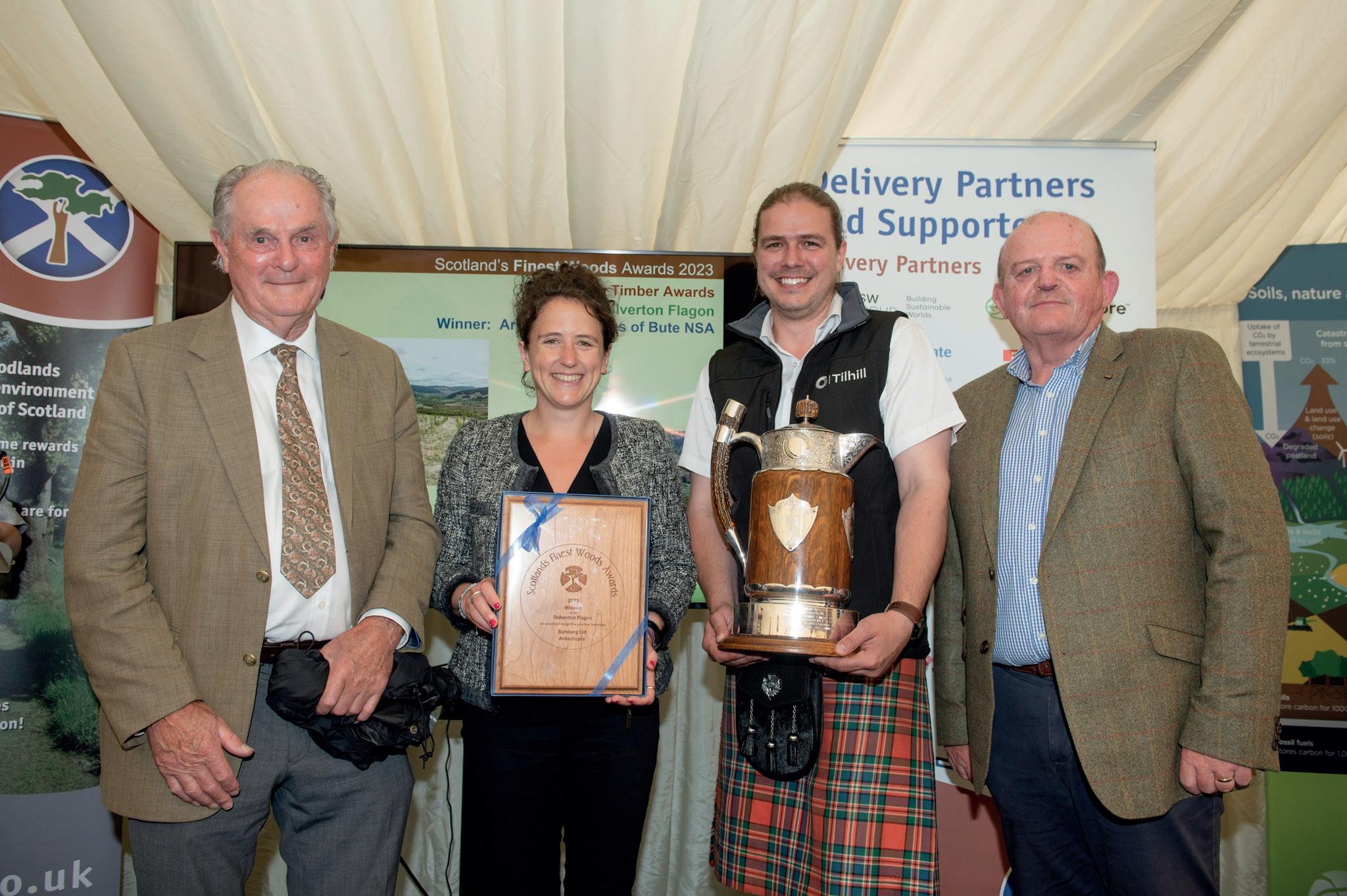
“Across Scotland we know there are inspirational people who are making a difference through their commitment to the woodlands they own, manage and volunteer in. This is the chance to celebrate them.”
The great work of communities was highlighted in 2023 by the winners of the Tim Stead Trophy for the overall Community Woodland Award – Friends of Almondell & Calderwood with West Lothian Council for Almondell Woods.
The winner of the Woodland Trust Scotland Trophy for New Native Woods was Martyn’s Wood, Crannich, Isle of Mull, which created an area of biodiversity on inhospitable ground and was planted in the memory of the nephew of owner Robin Sedgwick.
Meanwhile, Fordyce Primary School near Portsoy in Aberdeenshire took home the Crown Estate Scotland Schools’ Trophy.
A brilliant example of agroforestry using pigs won David Carruth the Scottish Woodlands Farm Woodland Trophy for Young People in 2023 for his work at Brodoclea, Dalry, North Ayrshire for The Future Forest Company.
And the icing on the cake for the Quality Timber Awards was the highly coveted Dulverton Flagon, an occasional award
given at the judges’ discretion for a successful balance between commercial forestry and competing objectives. It was given to Ardachuple, in a National Scenic Area at the Kyles of Bute, Cowal – owned by Bamberg Ltd and managed by Tilhill.
The Scottish Government continues to support ambitious tree planting targets and organisers are hoping for another exceptional set of winners in 2024.
Forestry and farming form a bedrock for the Awards with vital work in integrating trees into the Scottish landscape, to benefit wood production and agriculture, as well as the environment.
This year we are excited to announce a new sponsor for one of the 11 competitions – the Farm Woodland Award Whole Farm / Croft, which comes with the magnificent Lilburn Trophy for an active farmer/crofter anywhere in Scotland, will be sponsored by Fountains Forestry UK Ltd.
Without sponsors and supporters there would be no annual awards and the organisers are grateful for the new and continued support.
The full list of awards is open to anyone with a high-quality project, whether that be a school or pre-school nursery, a forestry business (small or large), an expert forester, farmer or crofter, or a community woodland.

Guy Watt, Chair of Scotland’s Finest Woods, the charity which operates the programme, said: “It is important we celebrate and champion the environment as well as the community and commercial work which contributes to a wonderful diversity of woodlands in our country.
“Praise should also go to the judges, whose knowledge and guidance are vital to producing an awards programme that is of the highest excellence. We should also thank entrants for taking the time and effort to take part in what is a fantastic celebration of trees, woodland and forestry in all its forms.”
Entries must be submitted by 23:59 on 31 March 31 2024. For full details, criteria and entry forms see www.sfwa.co.uk. Future
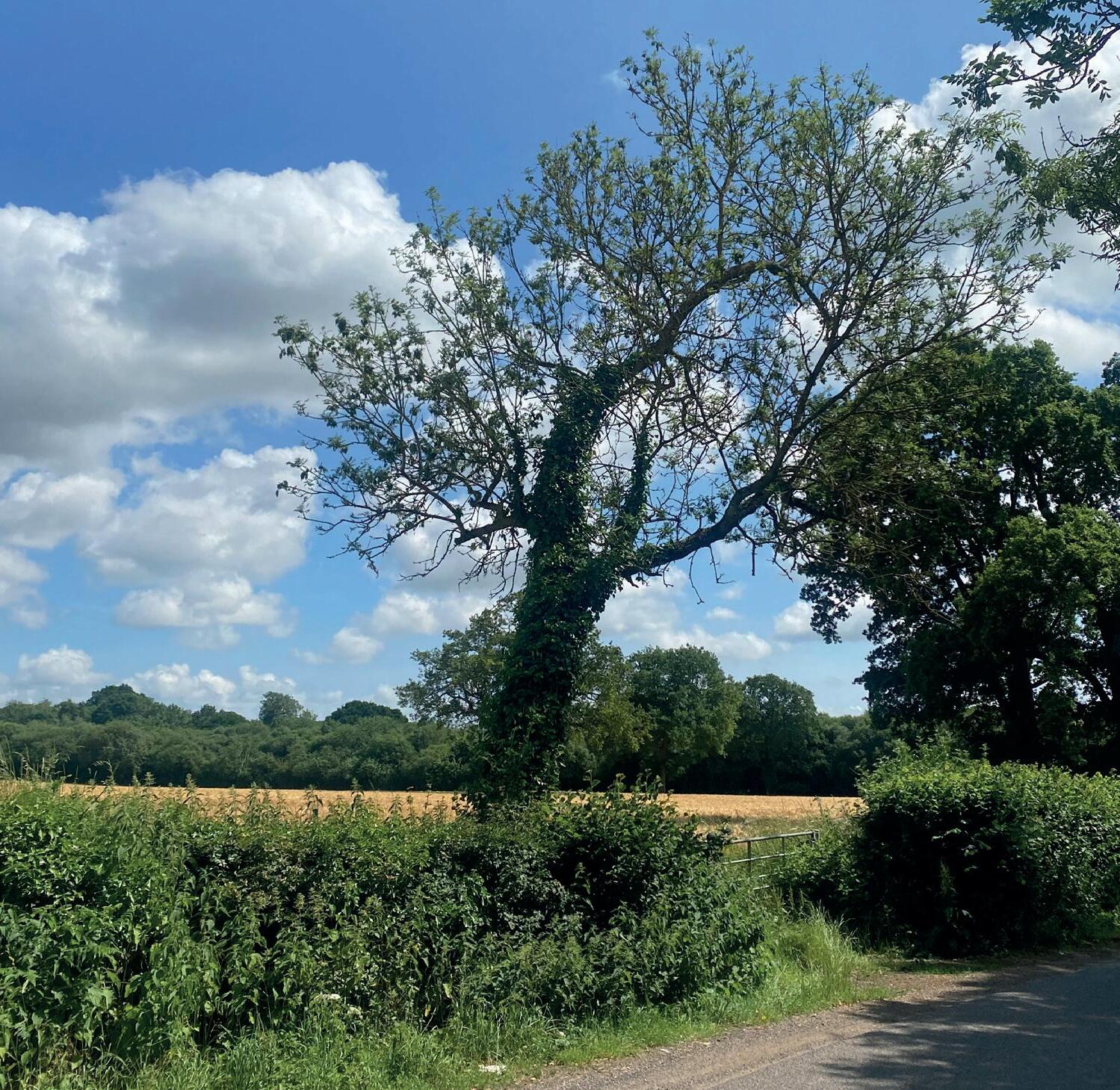
Euroforest are specialists in Arboriculture and offer a range of tree care and woodland management solutions to suit your needs:-
Mechanised Arboriculture
Tree Health Surveys
Tree Surgery
Site Clearance & Mulching
Hedge & Verge Maintenance
Tree Planting & Landscaping
Marketing of Timber and Biomass
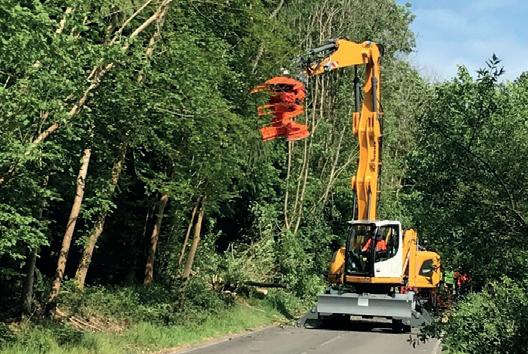

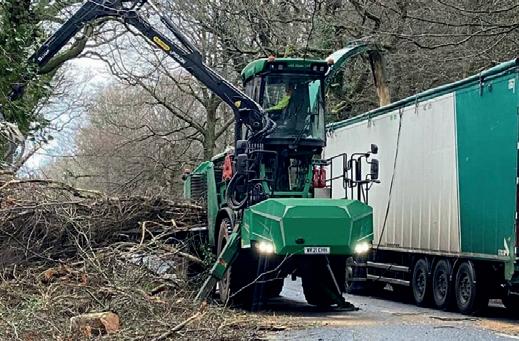





Ash Dieback and other tree diseases con�nue to spread at pace throughout the UK. It is an�cipated that up to 97% of all Ash trees could be lost. Ash and other species at risk are widespread in woodlands and roadside edges. This causes a considerable liability risk to landowners associated with falling trees, especially adjacent to footpaths, highways, and property. Early interven�on is always advised to minimise cost and maximise value.
Euroforest offer a tailored approach to suit all requirements. We use a range of specialist equipment, allowing us to safely dismantle any tree in any loca�on. All of our projects are professionally planned and managed from start to finish, enabling us to achieve and deliver the best results.
Our highly experienced team offer an industry leading Arboriculture service across the country. We lead the way in compliance and public rela�ons, seeing a gold standard through our cer�fica�on to ISO 9001 Quality Management Systems, ISO 45001 Occupa�onal H&S Management and ISO 14001 Environmental Management Systems.
Euroforest's specialist teams offer a bespoke service, from ini�al site appraisal through to comple�on and replan�ng. We offer a service that puts the landowner centre stage while always minimising costs and maximising any �mber revenues. If you wish to find out more, please visit our website or contact us via the below details.

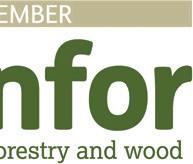
Environment Secretary Steve Barclay makes commitment to bring the England Woodland Creation Offer and the Woodland Creation Planning Grant into new Environmental Land Management Schemes.
Speaking at the Oxford Farming Conference in January, Environment Secretary Steve Barclay (pictured below) announced the most significant upgrade to the Environmental Land Management Scheme (ELMS) since the start of the agricultural transition.
The transition plan includes updated payment rates for both the Sustainable Farming Incentive (SFI) and Countryside Stewardship (CS), along with tions. These schemes are also into one application process.
Crucially, the updates mark mitment to bring the England Creation Offer (EWCO) and the Creation Planning Grant under umbrella.
Mr Barclay said: “We will take approach to the transition Woodland Creation Offer and land Creation Planning Grant schemes, to allow a smooth with no gap in offering grants plicants for woodland creation. future ELM woodland creation fer will largely mirror the England Woodland Creation Offer.
“Additionally, we will expand tree health support in Country side Stewardship, using learning from the Tree Health Pilot. The
current Tree Health Pilot grants will continue until transition into ELM, ensuring that there is no gap in support.”
He also promised a review of rates for the England Woodland Creation Offer (EWCO) and related forestry grants alongside the new ELM.
To support Agroforestry, Mr Barclay announced a suite of in-field actions across various tree densities to encourage more trees in the farmed landscape, alongside agricultural production.
An additional stakeholder briefing seen by Confor highlighted a much more expansive offer for managing existing woodlands, with payments covering a wide range of aspects. New within the woodland management offer will be actions to improve resilience, flood and drought mitigation, in addition to capital items for
restocking, coppicing and ride creation.
The agroforestry offer looks very generous across all its actions with the highest density planting achieving up to £849 per hectare and the lowest density attracting £248 per hectare. These rates are well above that for existing woodlands.
Royal Forestry Society Chief Executive Christopher Williams welcomed the announcement. He said: “There is still some way to go before we can say that woodland managers are getting as good a deal as our farmers from the grant schemes. It is however good to see more grants to support woodland management and agroforestry. We hope these will be sufficient to incentivise more land managers to implement best practice in managing their trees and woods.
“We still need further commitments to develop and support training and upskilling. This is essential to ensure we have the workforce in place to manage our woodnow and in the future.”

improvements to the EWCO and announced in November 2023, extended capital window increastwo to three years. The maintepayments were also extended from years. The £350 per hectare mainpayment for woodland creation is dwarfed by some of these other agroforestry, wood pasture and scrub creactions.
actions have also been included species recovery and management options, including a generous supplefor rhododendron control and management. Payment rates for grey squirrels and deer control have increased to £60 per hectare and £105 per hectare, respectively. The duration of these payments will also be over 10 years.



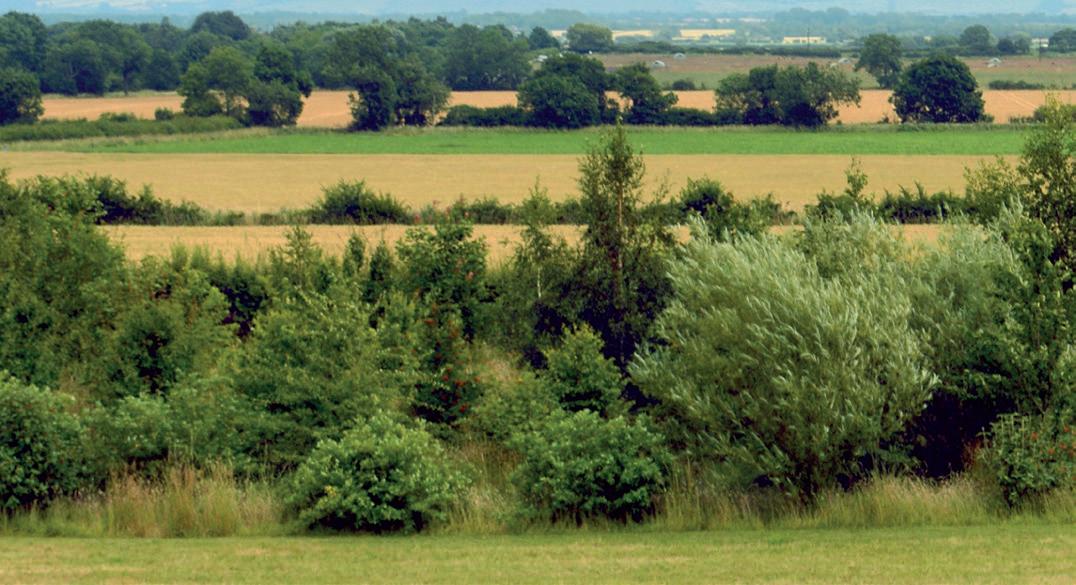
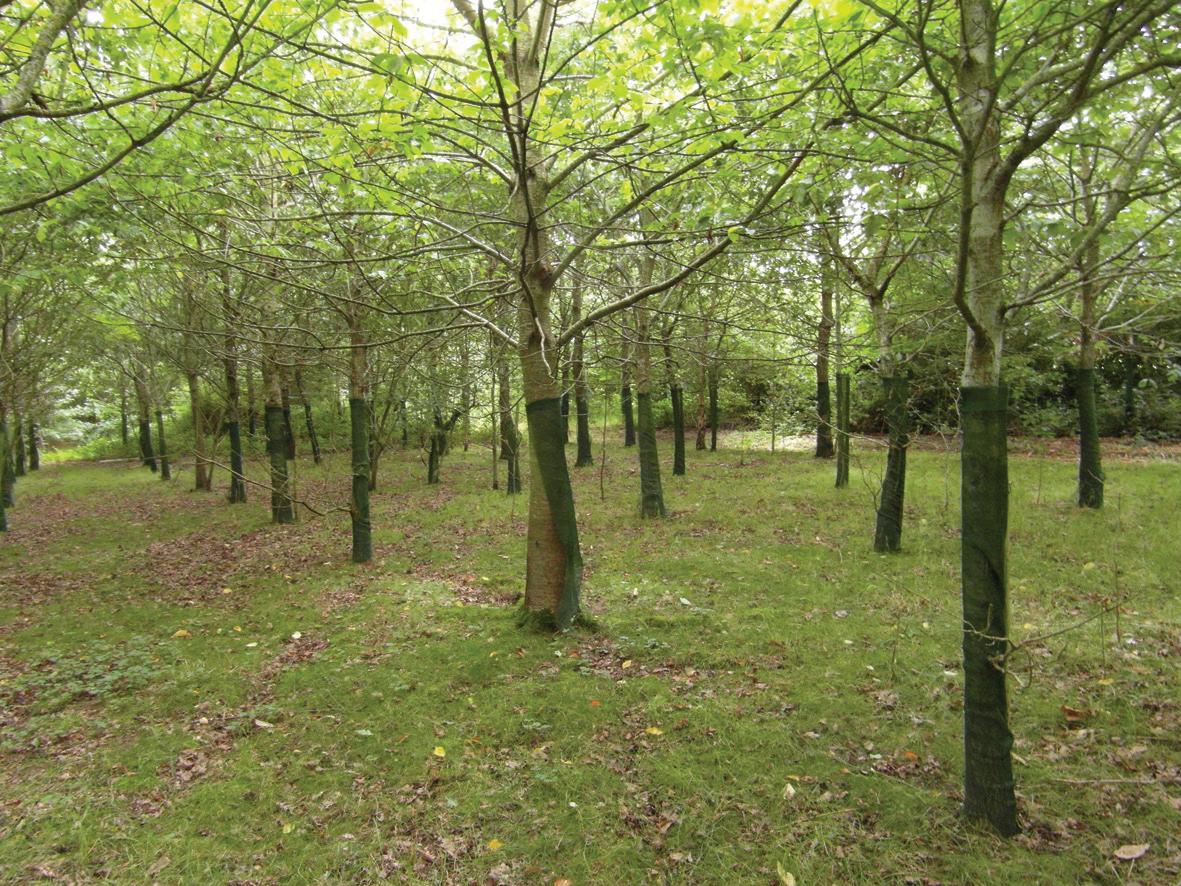
mesh air space = 47% of total surface area = less carbon
OUR FINE MESH SHELTERS blend in with the landscape, and because of their ventilation, are happy in our warmer and changing climate, wind blow resistant, and bird friendly, (they can climb in and out). Trees may grow a little slower, but have stronger stems.
MANUFACTURERS of Spiral Guards and WHOLESALERS of Fine Mesh Shelters, Plastic Mesh Deer Fencing, canes, stakes, mulch mats, etc etc and Forestry & Hedge Plants of Native Provenance
‘The One Stop Forestry Shop’
Large Stocks Ensures Fast Service
Tel: 01588 650496
Fax: 01588 650631 For our full brochure
FARM FORESTRY Co Ltd
Eaton Farm, Bishops Castle, Shropshire SY9 5HX www.farmforestry.co.uk


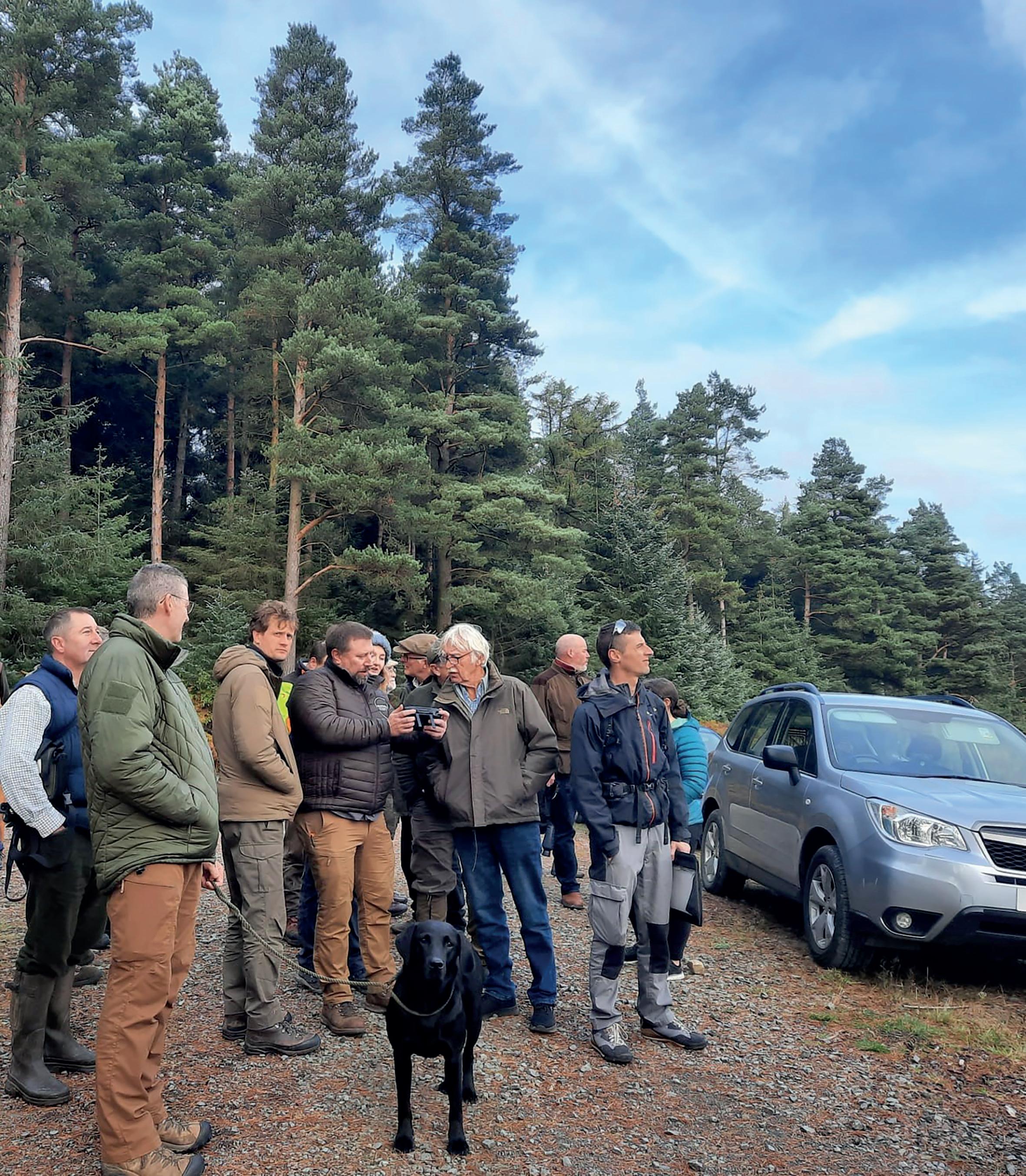
Reheat’s Rosanna Curtis provides an update on the Northwoods Innovation Programme and the projects being supported by the initiative.
The Northwoods Innovation Programme is well underway with just over a year remaining with its current funding from the Forestry Commission. The re-establishment of Northwoods as a woodland initiative in the North East and Yorkshire has proved popular with a growing number of stakeholders benefiting from the programme and increasing requests to diversify its current offering.
As part of the innovation funding, Northwoods is supporting a number of innova-
tive initiatives, tools, and businesses which support woodland management activities and help to diversify woodland markets and businesses.
In this article, we have summarised a range of the exciting opportunities that are seeking to improve the woodland management process, diversify product markets and businesses.
A number of forestry contractors have approached Northwoods for support developing business cases for the purchase of harvesting and extraction plant with the aim to diversify their business offerings. One of the more attractive pathways remains the Farming Equipment and Technology Fund (FETF), although details of item eligibility and timescales for the 2024 round are yet to be announced.
Following feedback from woodland owners and foresters in the Beta testing

stage, the release of myForest’s improved inventory tool is in sight! Sylva Foundation have been working hard to develop this enhanced inventory tool with the aim of improving the store of tree and stand information with automatic calculations and an easy to use, intuitive interface.
This will save woodland owners and managers time when undertaking inventory tasks and also allow for easy integration with woodland management plans and timber sale contracts.
The WildTrackPro software was originally developed to support landowners and managers in collecting and reporting wildlife conservation and management data when on site. It auto-completes WS1 and WS3 grants and monitoring forms, deer and squirrel management plans, and annual deer and squirrel records from these data.



Will Richardson, RDI Associates and Northwoods Consortium Member, is supporting them in developing the platform to support wider grant reporting requirements including writing woodland management plans and the applications for Countryside Stewardship woodland management options and other supplements.
With the rise of softwood pests and diseases such as phytophthora ramorum, and also unprecedented demand and prices for firewood (particularly hardwood) very strong, the Log Shed are seeking ways to educate consumers on using softwood firewoods, particularly infected Larch as firewood with the aim to grow the market demand for fuel produced from larch and other softwoods, so reducing pressure on the hardwood market.
This should help to reduce the cost of firewood to customers and more importantly create an improved market for woodlands with infected larch and small parcels of softwoods that might otherwise struggle to find a market. Currently, infected larch needs to be kiln dried by the firewood producer, requiring a processing licence in order to be able to handle and process infected material, therefore increasing upfront development costs. Those that have put themselves in the position to process infected larch firewood are seeking to make the most of this investment by expanding the consumer base.
Northwoods will be developing materials and resources to help educate consumers on softwood firewood. These will be open source to benefit firewood producers across the country.
Cloud Forest is developing technology to improve the timber supply chain by creating a marketplace to buy and sell hardwood and softwood timber. They reached out to Northwoods to help organise a workshop to conduct market research and support their platform development with the ultimate aim of connecting with a sawmill with whom they could work closely.
Targeting timber for construction, Cloud Forest are hoping to make it easier for construction companies to source local timber, and for those managing woodlands to market their timber. The workshop will be held in April 2024.
With climate change significantly impacting our trees, woodlands, and landscapes and modelling on how the UK environment will change, there is significant opportunity to learn from others who manage our future landscapes currently. Northwoods is supporting an innovator who is looking to develop an international exchange looking at opportunities for creating and managing trees and woodlands in protected landscapes.
Interest and investment in biochar is on the rise with some big scale plants scheduled to be producing, in total, hundreds of
thousands of tonnes. But what are the opportunities for small scale production and improving the value of managing small woodlands? Northwoods have put out a call for research and will be running a workshop exploring this topic in April 2024 with a range of presentations and discussion points.
Leeds Coppice Workers are focusing on the potential to bring into management recently planted woodland which is of low economic potential, due to species choice and spacing, and therefore unlikely to benefit from traditional management techniques. This involves converting part of each site to coppice which can provide higher cashflows over a short term, providing funding to invest in the remainder of the site.
They are also developing, expanding and upskilling their workforce. Northwoods is scoping how existing Woodland Management Planning mechanisms and grant aid could support, or act as a barrier to, this concept, and providing outline financial models.
Northwoods have supported Education Partnership North East and Northumberland College in developing their Forestry Skills Bootcamps, connecting them with forestry-based businesses in the North East. The Forestry Skills Bootcamp is designed for individuals who wish to obtain industry approved mandatory qualifications required in order to operate in the woodland management and forestry sector as well as interview with local forestry businesses. The aim of this is to understand the demand and potential opportunity to re-introduce Forestry based courses at Northumberland College.
We have also been approached to provide training on a number of topics and events including more woodland inventories and tree and timber measurement, the benefits of early thinning and intervention, soil identification, and general networking events. We are working with a number of partners to deliver these; funded training requests regularly come in and we are looking for partners that may be able to support the provision of courses to improve the quality and quantity of woodlands in management.
Northwoods, a woodland initiative, runs support, training, events, and demonstrations for the Forestry Sector. We are currently offering support for innovators, businesses, and individuals, to develop, diversify, and become more resilient.
This support could be a general health check to understand if there are opportunities for business diversification and future proofing or could be the development of a specific idea, tool, or application.
Any of the above caught your interest? Get in touch with rosanna.curtis@reheat. uk.com or visit the Northwoods website to find out more.

cation Fund, which offers individuals within the forestry sector financial support to further their learning.
I was introduced to the fund and Confor through my employers, Ruth Pybus and David Brown, who run Broadleaf Wales in the Conwy Valley. I’m currently undergoing a year-long apprenticeship as a Forestry Practitioner at their site as part of the Royal Forestry Society (RFS) Forestry Roots Scheme. This scheme aims to encourage young people to reach their career goals by linking them with suitable placements that provide on-the-job learning and training.
I was drawn to undergoing my apprenticeship at Broadleaf Wales as their management of the woodland, which uses continuous cover forestry (CCF) practices to produce high quality hardwood timbers, aligned with my aspirations for the future of forestry in the UK - working towards a more circular economy that supports ecological improvements as well as social and commercial development.
As part of my role here I am supporting in all aspects of the management, a large part of which constitutes felling trees to generate the optimal conditions for those that have been selected to grow on.
Due to the nature of this selective thin-


precision for both managed using for small trees (below 380mm) at the beginning of my apprenticeship, in September, for which I received financial support through Farming Connect and the RFS Forestry Roots grant.
In the month between obtaining this initial certificate and doing the Medium Trees course I had ample opportunity to practice these new skills which was extremely valuable as many of the felling cuts used for medium trees reflect techniques I was practicing on smaller diameter timber.
I thoroughly enjoyed felling the larger trees, finding that there’s more opportunity to correct and realign sync cuts to the desired direction due to there being more material available to cut. Accurately controlling the direction of fell becomes of heightened importance with larger trees due to the potential damage that can ensue if done inaccurately. So, taking the time to get this correct is imperative. I found the focus this required extremely engaging and enjoyable.
A major difference when cutting larger trees is that their diameter is often larger than the bar length of the saw. Therefore, this requires either cuts to be made from both sides of the tree or use of ‘reduction cuts’. As such, further forethought and care needs to be put to safe decision making be-
fore beginning any felling operation to ensure that the saw operator can make their final ‘felling cut’ on the ‘safe’ side of the tree.
As with small trees, it is frequent to experience hung up trees. However, the process of dealing with these is quite different when working with timber above 380mm. At a larger diameter it becomes unlikely, and unsafe, to move such logs using manpower alone and therefore the medium trees course incorporates safe use of winch and pulley systems.
These are an essential part of kit used within the windblown trees course toowhere the chainsaw operator can use such systems to support root plates and/or divert tension and compression in a log, to allow safe cutting. Managing windblown trees can be extremely dangerous due to the high levels of force built up through tension and compression in the tree’s fibres and as a result, these courses don’t just build upon practical skills but also emphasise the skill required to make considered decisions as a chainsaw operator to ensure safe practices.
Overall, the course content deepened my knowledge and confidence in felling as well as developed my problem-solving abilities which are put to constant use during days spent working in the woods.
I’m very thankful to Farming Connect, RFS and Confor for the support that I have received which has allowed my abilities to rapidly progress and aid my journey towards a career in forestry.
Dalmally Forest
Dalmally, Argyll
221.40 Ha (547.08 Acres)
Lot 1 – Dalmally Forest
174.19 Ha (430.42 Acres)
Offers Over £1,600,000
Lot 2 – Glenview Wood
47.21 Ha (116.65 Acres)
Offers Over £300,000

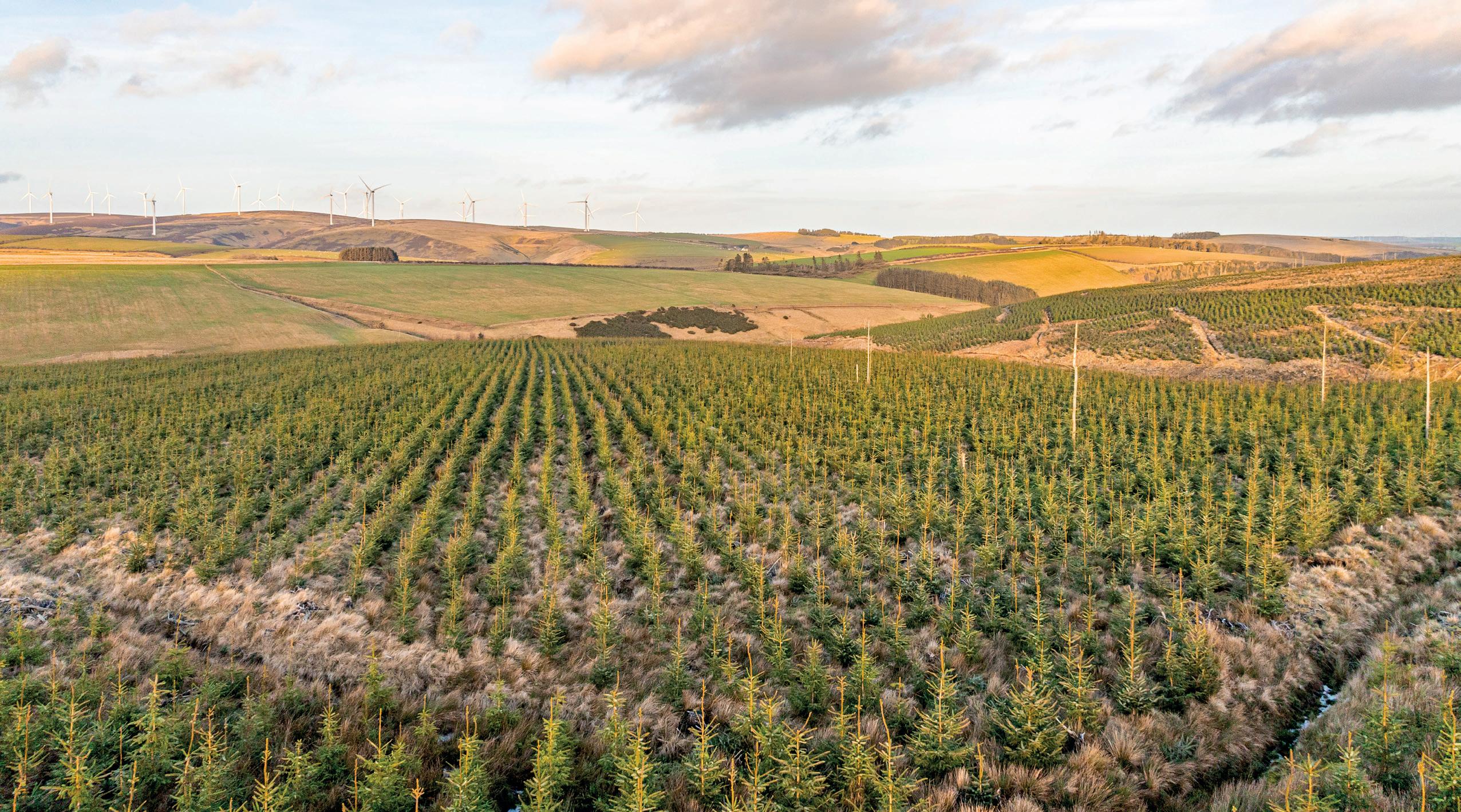
Dunter Law
Duns, Scottish Borders
93.00 Ha (229.80 Acres)
Offers Over £1,150,000


The Forest Industries Education & Provident Fund (FIEPF) enabled students from across the UK to join industry leaders at The QEII Centre for Confor’s policy conference in December.
Several students on forestry and landrelated courses attended Green Growth: Why Wood is the Missing Low-Carbon Link, Confor’s 2023 policy conference in London, thanks to generous support from the FIEPF.
Speakers and panellists from across the industry, public sector and academia addressed some of the key issues facing the forestry and wood-using sectors in a day of thought-provoking discussion.
Here are some comments on how the fund awardees benefited from attending the event.
What an introduction to the world of commercial forestry and policy! Having been studying for a matter of months, I found it excellent to get a perspective of the broader issues we all face. All credit goes to Confor for bringing together all the speakers and the speakers themselves for presenting such a wide range of perspectives.
It was mentioned that forestry is sometimes an echo chamber. Although I can agree that it is somewhat preaching to the converted, I witnessed views across the sector, pecially regarding the classi fication of white wood! that in mind, Gail Merriman’s statements on collaboration, echoed by Tom Barnes National Wood Strategy, very relevant, and I am definitely glad that I was for its launch.
The world of timber seemed reasonably black and from an outsider’s point view, but of course, the indus try is far more nuanced it appears, and my learning so far has enlightened about its many facets. the young forester, today rather an overwhelming perience. Still, as I digest
on the train heading back up north, everything I have learned has left me bubbling with intrigue about the career that spreads before me.
The conference and its partners seem to have genuinely achieved goals set last year, which is too often not something one can say in 2023. I hope the opportunity arises for me to attend again to see more progress, and I feel very grateful to have been invited!
Henry Shaw, University of Cumbria
It was great to meet and hear from people across the industry working together in achieving the goal of net zero by 2050. As an MSc student studying Agroforestry and Food Security at Bangor University, I look forward to being a part of the future of forestry. I was inspired to be in a room full of people who share the passion I have in curbing biodiversity loss, connecting people with nature, and creating green jobs.
I believe we have a global responsibility to get more trees planted under the management of well-trained individuals, starting now. Forests are valuable to our
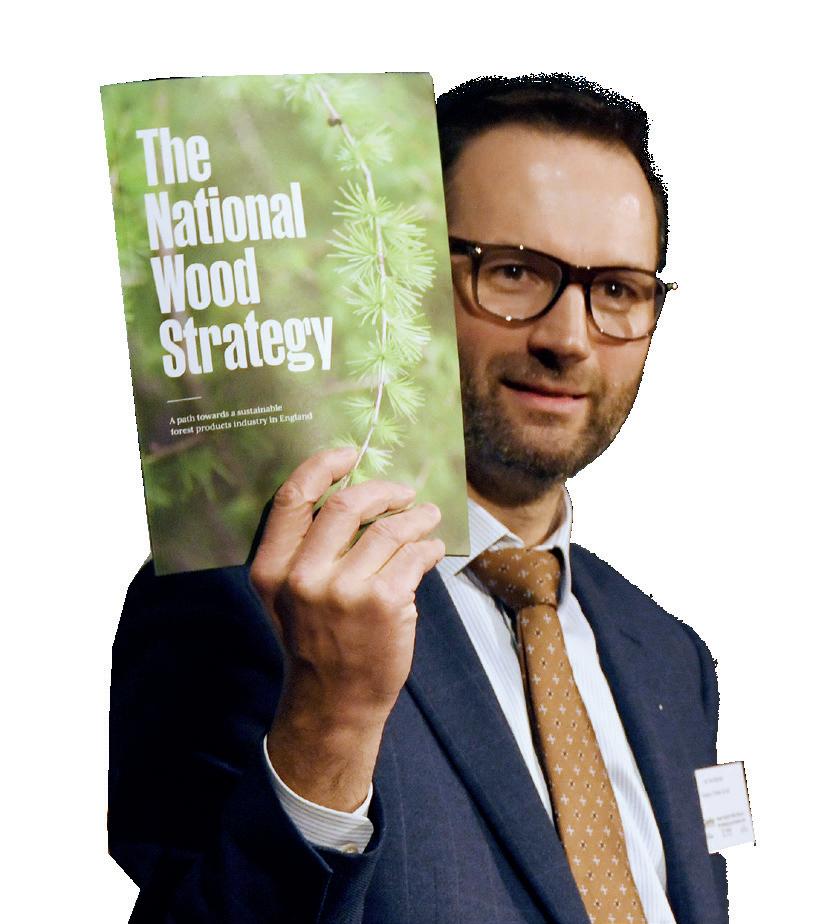
communities not only for the ecosystem services they provide in timber but through social and cultural values as well. The benefits of woodlands are plentiful, and this includes farm diversification. What we do now will affect policy going forward, so communicating clearly and thinking holistically are key.
The student award helped me further clarify exactly what I want to with my career, and I am grateful to have had the opportunity to attend the Confor Policy Conference this year.
Marah Beach, Bangor University
As a PhD student researching optimal timber harvesting, this conference was not just an event but a pivotal experience in my academic journey, offering a rich platform for learning from and networking with forestry industry experts.
It commenced with an inspiring welcome address by Lord Ian Duncan, Chair of Confor, and a keynote from Rebecca Pow MP, under Secretary of State, DEFRA. Despite her physical absence, her recorded speech shed new light on contemporary forestry issues. The roster of speakers, inStuart Goodall (Chief Executive, Nikki Rust (Head of Land and Climate Change Committee), and provided a diverse range of invaluperspectives.

highlight was Tom Barnes’s presenNational Wood Strategy for which resonated deeply with my timber harvest optimization. Strategy’s focus on the entire lifecycle timber—from planting to processing— my study of the multifaceted influencing foresters’ deciThis conference has notably enriched my understanding of the industry’s current state and future challenges, particularly regarding the rising global wood demand and the UK’s goal to increase woodland cover to 16.5% by 2050.
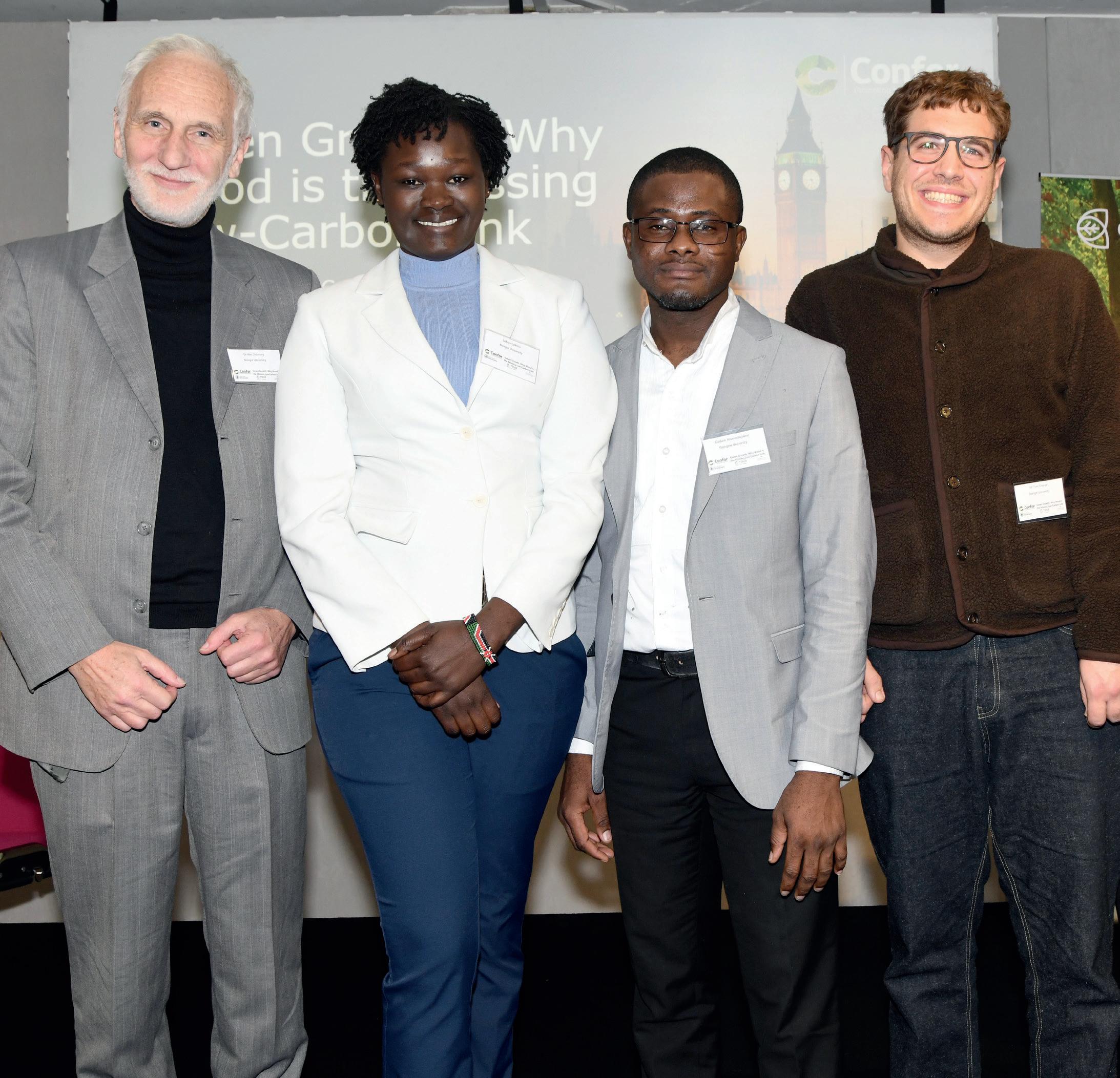
Interactions with policy makers and industry leaders have not only expanded my professional network but also opened doors for future collaborations. I had the opportunity to engage in discussions with representatives from the Welsh Government and the Climate Change Committee, which may lead to potential research collaborations or data sharing beneficial for my PhD thesis.
The insights gained from this conference will directly influence my forthcoming publication, where I aim to model the decisionmaking process of risk-averse foresters. Understanding the policy backdrop and industry dynamics will add a practical dimension to my theoretical work. Furthermore, the connections made here are instrumental in paving the way for a career in forestry and wood industry research, aligning perfectly with my long-term aspirations. Godwin Asumadagwine, University of Glasgow (Adam Smith Business School)
As an undergraduate from Bangor University with a passion for forestry and sustainable development, the event provided a unique platform to understand the intricacies of policies shaping the environmental landscape. The emphasis on advancing low-carbon construction and promoting the use of wood from sustainably managed forests underscored the transformative potential of the forestry sector in reducing greenhouse gas emissions and increasing
carbon storage.
During the conference, I delved into key issues facing the industry, such as the imperative for increased wood production and the necessity for enhanced education in forestry. The discussions went beyond theoretical considerations to pragmatic solutions, emphasising the need to establish wood production’s significance, identify its stakeholders, and organise effective communication methods to convey its importance.
Having the opportunity to network with influential figures in the field allowed me to engage in meaningful conversations about forestry, sustainable development policies, and the ongoing environmental changes. The conference not only expanded my knowledge but also provided insights into the current dynamics of the industry.
Looking ahead, the connections made and knowledge gained at the Confor event are poised to significantly impact my career trajectory. The exposure to real-world challenges and the chance to discuss solutions with industry leaders have enhanced my understanding of the sector. This experience will undoubtedly contribute to my academic pursuits and future endeavours in forestry and sustainable development. The Confor event has been a stepping stone, solidifying my commitment to championing the importance of wood production in policy and delivery for broader environmental benefits.
Tom Chance, Bangor University
To start with, the conference discussed the importance of domestic wood production in the UK which the Environmental Audit Committee (EAC) laid down the challenge clearly in its report in July; importing 80% of the timber used in the UK can’t go on and it’s time to produce much more here. The conference also discussed the National Wood Strategy for England, which was officially launched at the event. The strategy calls for clarity on which trees to plant and where to secure future timber supply, sequester more carbon, and create more jobs, especially in rural areas.
The strategy could be applied to my area of studies and my County Turkana in Kenya, where desertification is high and could help to sequester more carbon and boost the economy of Kenya.
The conference comes at a crucial time as political parties shape policy ahead of the 2024 General Election and was vital that the forestry and wood industry identified those specific policy actions which would be need in the next UK Government to take, to help the industry thrive - and deliver those significant economic and environmental benefits.
As an international student pursuing a master’s degree in Agroforestry and food security at Bangor University, I learned the potential for wood to provide significant benefits for the UK’s economy and environment, and how to overcome barriers to deliver that potential.
Agnes Lokoro, Bangor University
Tarras Valley Nature Reserve, together with Tilhill, are harvesting over 15,385 tonnes of timber to support projects in South Scotland, and to facilitate the largest community-led ecological restoration project in the UK.
For the last 45 years, the ‘Tarras Strip plantation’ was a productive timber plantation, connecting into a rich network of woodlands, including young regenerating trees and ancient wood pas tures along the river floodplains.
The area being clear-felled was trans ferred over to the community of Langholm as part of its historic buy-out of 10,500 acres of the Tarras Valley from the Buc cleuch Estate. The timber was nearing time for harvesting, but extensive damage from Storm Arwen meant that felling needed happen sooner than originally planned.
Over 36 hectares and approximately 15,385 tonnes of timber, comprising mainly of Sitka spruce and Norway spruce, had been badly damaged by Storm Arwen, alongside small amounts of Larch, rang ing from 16 to 51 years. It is now being har vested by Tilhill to encourage the natural regeneration of native woodland species which remain across the site.
Jenny Barlow, Tarras Valley Nature Re serve Estate Manager, said: “Tilhill offered

community opment trust - bought the land in 2021 on

highly professional buyers, proces sors, sawmillers and forestry woodland services throughout the supply chain. It has achieved that rare outcome where the three sustainable aspects of land and resource management meet – socially, ecologically and, importantly, economically.
“The legacy it will leave will be enjoyed by generations to come and is a credit to Tarras Valley Nature Reserve and Tilhill teams.”
Extensive community engagement has taken place throughout to ensure that local people have been informed and updated about the operations. The team worked closely with partners including Scottish Power and the Council’s roads department to reduce impact on the local community and surrounding infrastructure. Specific attention was paid to timber haulage, which was a big concern locally and all partners have worked closely to ensure the impact on the local area was reduced as much as possible.
A co-design process will follow the felling, led by the Langholm Initiative, to collaboratively re-design the site and ensure it continues to be a rich community resource.

David Biott, Tilhill Harvesting Manager, said: “The objective of the original forest plan was to ensure an income for our clients to reinvest. What is interesting is the variety of wildlife species that have been found amongst the spruce trees and the area around it. Badgers, red squirrels, pine martens, otters, goshawks and other birds of prey are all using this forest for nesting or hunting. I think it’s a brilliant example of meeting a balance between achieving a sustainable income but also providing habitat.
“All the timber will be fully utilised, mainly being cut into green sawlogs for BSW Timber’s Carlisle sawmill, located within 20 miles of the site, making it much more sustainable. We are also working with other third parties such as Iggesund Paperboard to create pulpwood and fuelwood for paperboard production and green energy, while AW Jenkinson will take shavings to create bedding material for animals such as horses, demonstrating a vast array of forest products created from the felling.”
The timber harvesting is expected to be completed around April 2024, and the Langholm Initiative will be working with teams of volunteers to complete supplementary planting of native Scottish trees including Birch, Rowan, Oak and Scots Pine in large clusters throughout the site to give natural processes a helping hand.
Tubex has embarked on a research project with a leading Dutch research institute to explore the science behind biodegradable tree shelters.
field. Samples are also placed in WUR’s temperature-controlled climate chambers to observe their relative speed of biodegradation, as they disintegrate into smaller pieces.
“It’s important that we test the materials both on the soil and in the soil, as shelters will undergo several stages of biodegradation before they break down completely. By exposing different samples to the same soil, environmental conditions, and duration, we can advise Tubex on the optimum formulation.”
Tubex will take the findings into field tests, after which – where necessary – the ‘recipe’ for Tubex Nature will be further refined to give customers the best possible performance, before decomposing at end-of-life.
“Biodegradable tree shelters are one of the most exciting developments in our industry, but given the average lifetime of a shelter, it is still ‘early days’ in terms of perfecting the science,” confirmed James Taylor.
Wageningen Research, said: “Each sample is put under rigorous testing to assess its tensile strength, to show it can withstand the elements and won’t break too easily in the
“Our partnership with Wageningen Food & Biobased Research gives us access to some of Europe’s finest experts in the use of bio-based materials. Their work has already provided a huge level of insight to help us make Tubex Nature even better, and we look forward to continuing this fruitful relationship.”

Spruce timber from the west of Scotland may still be transported to Northern Ireland and the Republic of Ireland under new risk mitigating restrictions.
Scottish Forestry has been working closely with the Northern Ireland and Republic of Ireland governments to bring in measures which will reduce the risks posed by the great spruce bark beetle, Dendroctonus micans.
New restrictions will be imposed on moving spruce logs with bark to the island of Ireland from some of the west of Scotland’s Pest Free Area (PFA). A 35km buffer zone will be put in place around findings of the D. micans bark beetle.
Under the new measures:
• Spruce timber moving under phytosanitary certificate will only be allowed to travel through the 35km buffer zone between 1 October and 31 March, which is outside of the flying season for the D. micans bark beetle.
• During this period between 1 October and 31 March, the timber should not be

stored in the buffer zone but can be loaded at ports.
• Phytosanitary certificates confirming that conifer timber is free from D. micans will not be issued within 35km of a beetle finding.
James Nott, Head of Tree Health at Scottish Forestry said: “Both the West of Scotland and island of Ireland have pest free status for D. micans and a number of other bark beetles. It is important that we are both able to maintain this status which has been in place for many years as it allows trade to continue.
“In Scotland, the D. micans bark beetle is getting gradually closer to the PFA boundary. Although no beetles have been found within the PFA it is longer possi ble to guarantee in all areas.
“As a precautionary
tain the integrity of the rest of the west of Scotland PFA, it is necessary to introduce measures to mitigate the risk. This action will enable trade from the rest of the PFA to continue. However, if the beetles continue to spread, the longer-term prospect is for the area of the west of Scotland PFA to reduce and ultimately close.”
Scottish Forestry has published an Action Plan, including a map showing the area of the PFA immediately affected by these new restrictions due to current confirmed findings of D. micans within 35km. No further phytosanitary certificates will be issued for spruce roundwood from within this area of the PFA.
As the port of Sandbank is within this export of roundwood from
A new national monitoring project is being rolled out to help prevent the potential spread of a serious pest affecting spruce trees. Volunteers are sought who have spruce growing in woodland that they own or manage, and who are willing to host and collect samples by installing a spruce bark beetle trap.
The objective of this project is to help monitor any potential movement of a serious tree pest, the larger eighttoothed European spruce bark beetle (Ips typographus). By taking part in this project, volunteers will become part of an early-warning system and help action to be taken to limit the impacts of this pest. They will also be contributing
crucial data to science searchers in better biology of this shape policy and the sector.
Another benefit part is that if this ered breeding in land, prompt action it damage. Whether their woodlands gain insights into which may reduce their woodlands.
The Ips Project an initiative run Sylva Foundation



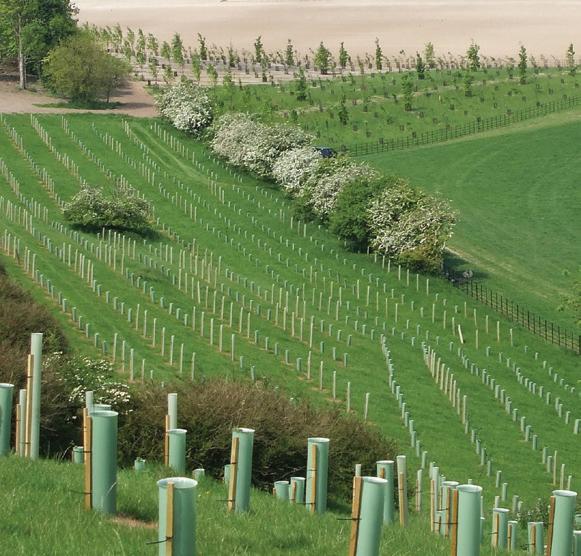

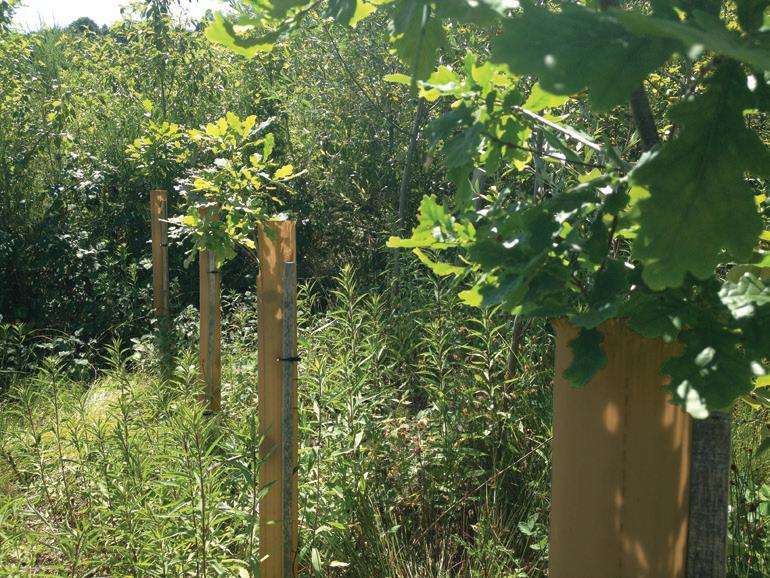
Schemes
solution
•
• Biodegradable in situ
• Bio based
•Non-toxic
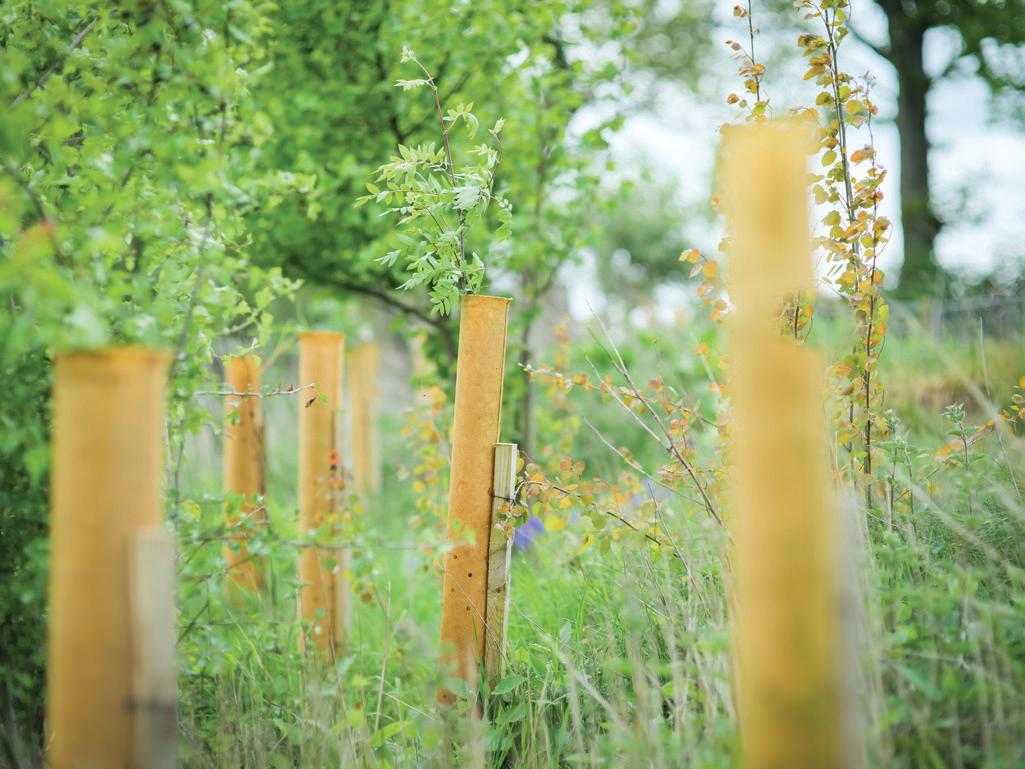
NexGen
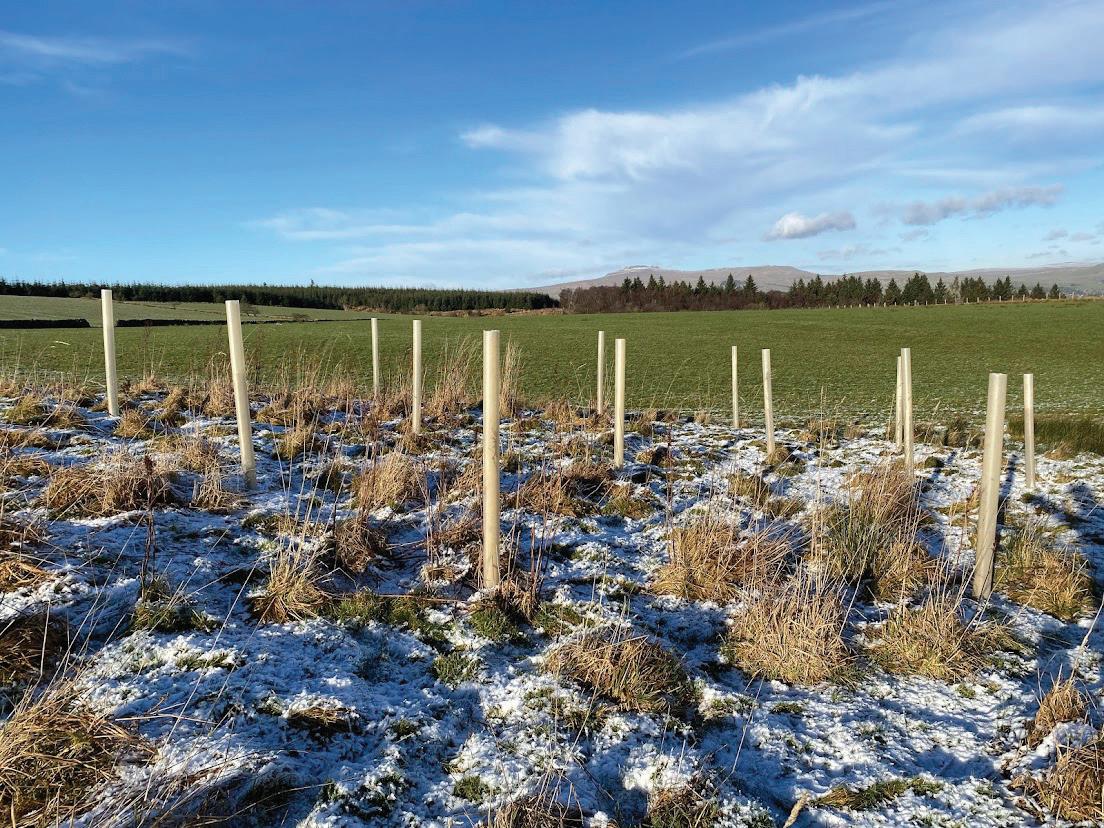
• Manufactured from British wool and ethically sourced cashew nutshell liquid and castor oil
• 100% biodegradable
• Breaks down after ve years as H2O, CO2 and nitrogen Terra
•
•
Certi ed soil biodegradable by TUV
CONFOR.ORG.UK FORESTRY & TIMBER NEWS • February / March 2024 43
The Forest for the Nation has moved a step closer with the launch of a new major multi-million-pound grant funding competition.
The competition is inspired by the success of the original National Forest which transformed a large area of the Midlands from an industrial landscape to a thriving 200 square mile treescape rich with wildlife.
The new Forest for the Nation is set to build on that achievement with the aim of transforming more local communities and landscapes. Organisations from across England are now invited to put forward their local areas to become the new Forest for the Nation, with the winning bid announced in the autumn and receiving up to £10 million to help fund their project.
The competition will put local people at its heart with the winning applicant needing to tell a compelling story of how the new forest will benefit local communities but also have a national impact for people, nature and the environment. Projects could include those that show real innovation in woodland and forest creation and other forms of tree planting, have a transformational impact for nature recovery in the area or boost community engagement with woodlands.
Forestry Minister Rebecca Pow said: “We are investing in our communities and the new Forest for the Nation will not only boost tree-planting in local areas, but will

lasting legacy generations.
“More trees means more green jobs, more wildlife, more nature recovery and more timber. This will have a positive impact on local people and their communities enabling a more sustainable future.”
Forestry Commission Chair Sir William Worsley added: “Trees bring multiple benefits for future generations, and the new Forest for the Nation will improve access to nature and connect more people with our countryside to boost health and wellbeing.
“The Forest for the Nation will learn from the success of the National Forest in transforming lives of local people, preventing nature loss and creating green jobs, and I urge organisations to consider applying before the deadline.”
Stage 1 of the competition will close in March 2024 with the successful applicants going to stage 2 where they will be directly supported by the National Forest Company to work up detailed proposals. The winning project will also receive mentoring from the National Forest Company, who will share their experience and best practice from
years growing woodland with national impact. The National Forest Company have to date planted nine million trees and are recognised for creating one of the most ambitious and imaginative regeneration projects in the country.
National Forest Company Chief Executive John Everitt said: “This competition provides a platform for new projects to come together at a landscape scale and demonstrate real ambition and innovation in woodland creation, access and biodiversity.
“It will be a transformational opportunity for the successful project just as the National Forest has been for its 200 square miles of the Midlands.”
The competition first announced in November is the latest step in the Government’s plans to help people access nature, plant more trees and support nature recovery. The England Trees Action Plan and Environmental Action Plan set out ambitious targets to treble tree planting rates by the end of this Parliament and to achieve at least 16.5% of tree and woodland cover by 2050.
The University of Cumbria has been awarded £292,000 from the Office for Students (OfS) to support the development and growth of Level 6 degree apprenticeships.
Supporting future generations and skills needs, new provision from September 2024 will include a Youth Worker degree apprenticeship.
The University of Cumbria has been delivering higher level and degree apprenticeships since 2017.
Currently, the university has more
than 2,200 learners who are on degree apprenticeships, programmes that combine work with higher-level learning leading to a university award. Learners are upskilling and working across a range of sectors including nursing, diagnostic radiography, paramedic, policing, project management and forestry.
The OfS funding will also enable the university to further its engagement with the forestry sector to continue to deliver the Professional Forester Apprenticeship.
A UK first, this innovative apprenticeship is delivered by the National School of Forestry, part of the university’s Institute of Science and Environment, in partnership with the Forestry Commission and Institute of Chartered Foresters.
University of Cumbria Vice Chancellor Professor Julie Mennell DL said: “As Co-Chair of Cumbria’s People, Employment and Skills Strategy group I know first-hand how important apprenticeship provision and apprentices are for our current and future workforce.”



















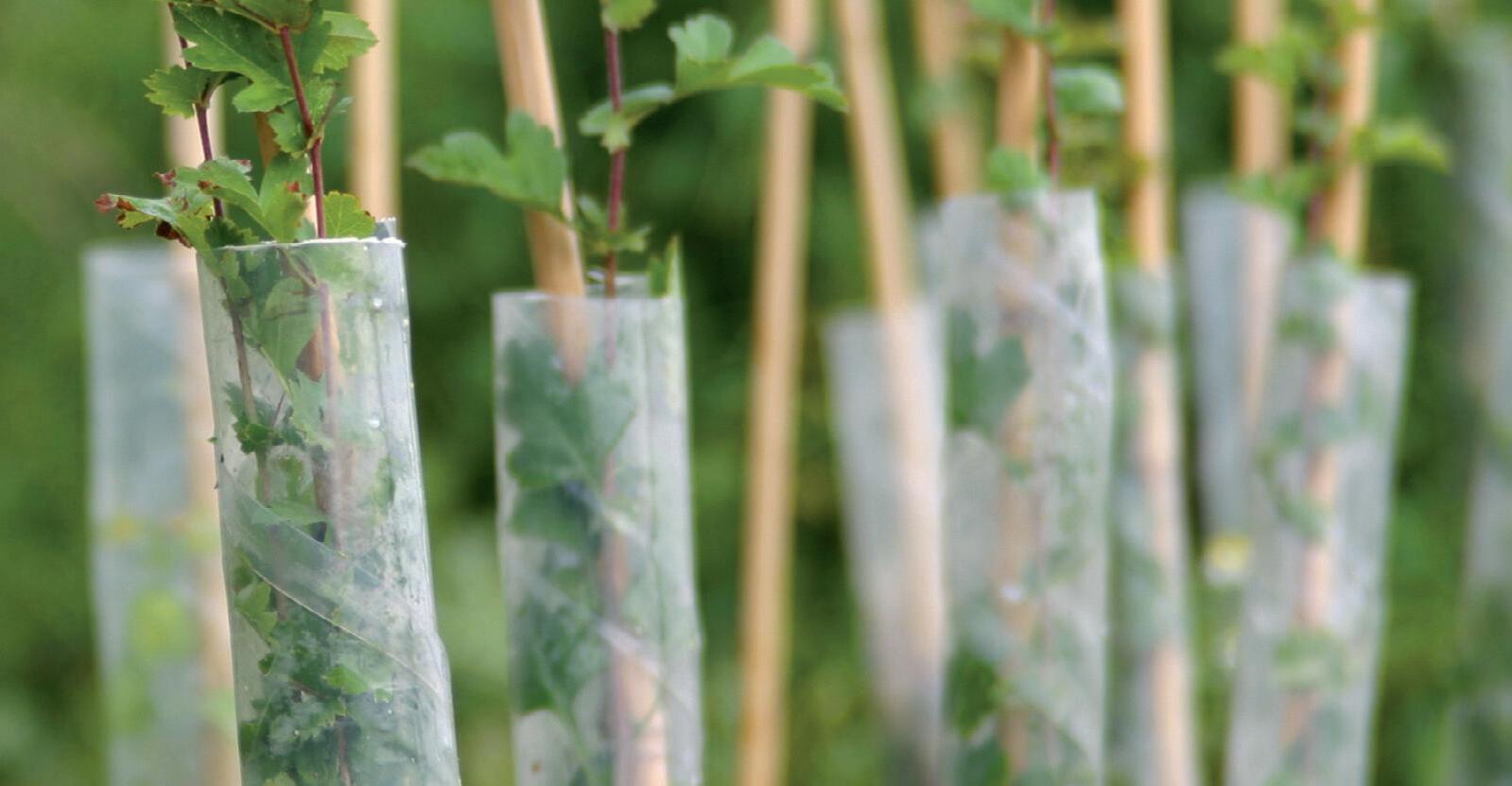
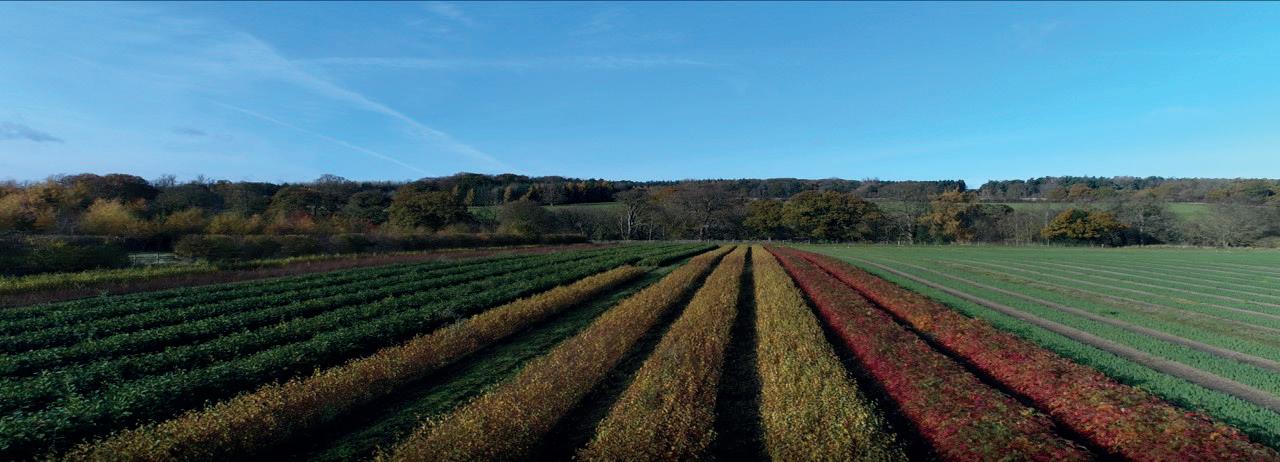





•
•
•
•
•
•


Superior planting stock for commercial forestry. Specialist grower of northern UK and Scottish seed zone provenances to suit all planting requirements
We are situated in the beautiful county of Northumberland and supply around 15 million bareroot conifer and broadleaf trees per year to a wide customer base. A Plant Healthy accredited grower of major native timber and woodland species including improved Sitka Spruce. Trees can be pre -treated against Pine Weevil if required.

Our team have over 200 collective years experience in growing and nursery production as well as a firm understanding of the forestry industry. Our cold storage facilities ensure our trees are stored at the optimum temperature until you need them. Please get in touch today. No query is too big or small.







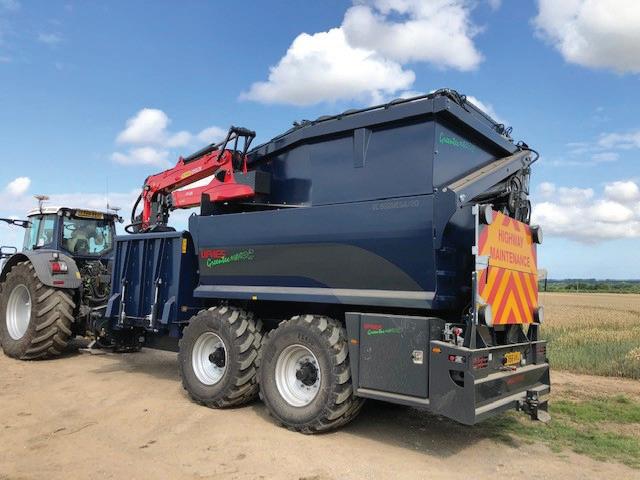

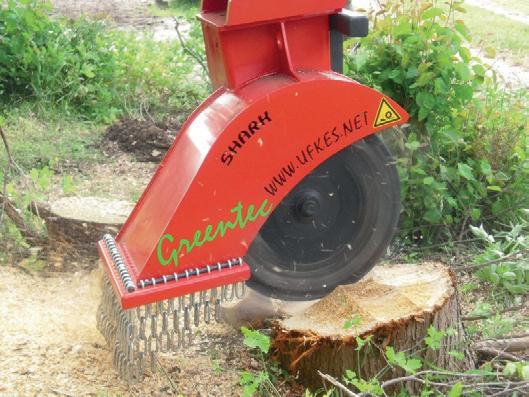
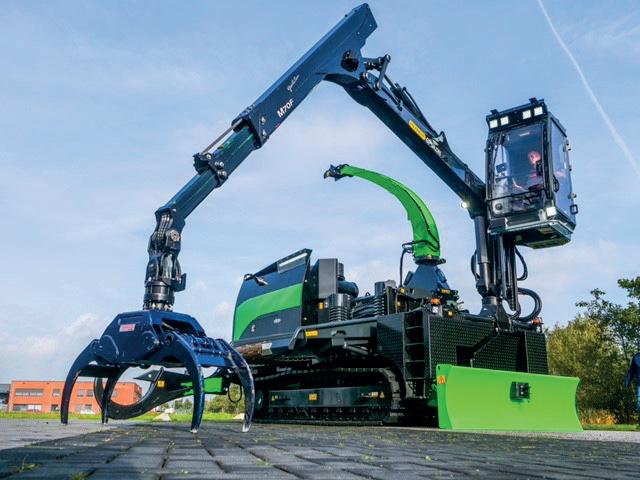




Goldcrest Land & Forestry Group’s Jon Lambert MRICS and Oliver Thompson MICFor evaluate the state of the market going into 2024.
The Forestry market of 2023 has been well documented by ourselves and others but, in summary, after some seventeen consecutive years of capital appreciation the extraordinary bull run eventually came to an end.
A trend of higher interest and inflation rates that had not been seen for fifteen years, a depressed timber market still toiling from Storm Arwen and various other winter storms combined with a quiet construction market resulted in forestry prices falling by some 15-20% in the year. Planting land prices probably took the biggest hit after five years of spectacular growth. Carbon Credit prices have not accelerated as some commentators have predicted and as consultees to planting projects become better organised and more vocal, securing new sites and adding value is proving to be a challenging exercise.
After a month and a half of 2024, it is perhaps a little too early to categorically define the market trend for the year ahead. We are aware of a considerable amount of money in the system which continues to show significant interest in forestry, woodlands, and carbon farming, but the messages are mixed. There are regular enquiries from a mixture of medium sized and large institutional players talking of entering the market, but the comments are balanced by caution and selectivity. Individual investors have benefited from sitting on cash from strong interest and bond rates and with one eye on politics and the timing of a general election they have been relatively quiet or sitting on their hands waiting for perceived bargains.
Transactions at the very end of last year and into this have been varied. Variable in terms of price, length of transaction time and type of purchaser. Our Regional commentary below talks of specific examples but in summary we have seen a combination of determined individuals bidding strongly and moving swiftly and determinedly, others looking long and hard and talking themselves out of bidding for a number of reasons and the institutions are extremely selective and require perceived warts to be removed preferably before bidding and definitely before concluding a contract.
Scotland
After a short marketing campaign at the end of 2023 Goldcrest agreed a sale to a private

investor at a price significantly above the guide price of £4.25m for Fannans Forest in Argyll. The attractive commercial 33-34 year old primarily Sitka plantation grabbed the attention of the market, but the credentials of the bidder and ability to conclude swiftly persuaded the Seller to agree a deal. It settled early in January.
Killyleoch Hill is a commercial conifer forest with high amenity comprising ponds and a well-located cabin situated in Dumfriesshire and extends to 55 hectares. Launched by Goldcrest in January at offers over £975k, a number of investors showed strong interest and a closing date for offers is set for 27 February.
Both these sales suggest that perhaps 2024 will be livelier than year.
Lastly, again out of the Goldcrest stable the sale of Brisbane Mains Farm has just been launched. An unusual offering comprising a highly attractive and diverse mixed aged broadleaved woodland together with 55,338 validated Pending Issuance Units (Carbon Credits) at offers over £2m. It will
be fascinating to track the outcome of this sale.
Similar to the end of 2023, the start of 2024 has carried on in a somewhat gentle and slow fashion. Given the reduced size of the market, the number of properties south of the Border coming to market has been few and far between and mainly of a smaller/ mixed nature.
It should be noted that most dedicated forestry and woodland agents will have some properties “up their sleeves” and will most likely launch in the spring when improved weather conditions and better daylight hours can have a tangible positive impact on desirability and price.
Bucking this trend are two quality commercial spruce properties in Northumberland marketed by Bidwells before Christmas. It is understood that Rimside, the smaller of the two is now under offer in excess of the guide price. Its larger coun-
continued on page 48
continued from page 47
terpart, Longframlington has not met the owners’ expectation on price and has been withdrawn.
Goldcrest now have two smaller properties under offer in Wales: Abergele Woods and Ffos Las Woodland though at figures below the guide.
In November Goldcrest completed on Maer Hills, a 192-hectare property in The Midlands. This was a unique opportunity to privately own a mixed yet commercial forest when all similar woodlands are in state ownership. This sold above the guide price of £3.25m.
In late 2023 Tustins successfully marketed Gwyndy Newydd Estate, Snowdonia at a guide price of £1.115m. This was an interesting mix of young commercial woodland plus a recently renovated farmhouse including outbuildings and a fishing pond. Such a unique property went under offer quickly.
The above examples just go to show how fickle the marketplace is. Buyers are there with money to spend, however there is still a high degree of caution or even reticence
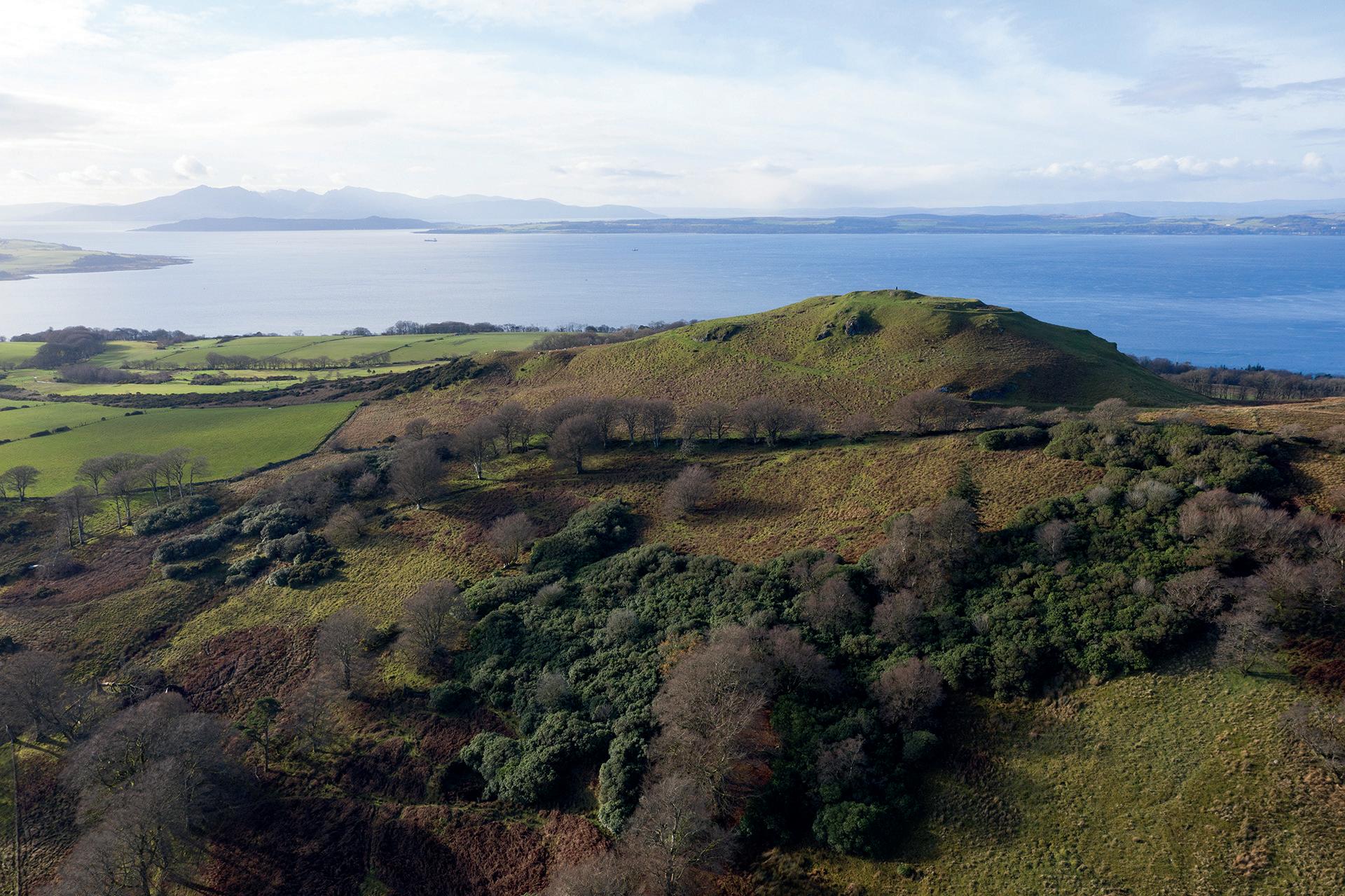
to deploy the capital. Much of this is likely to be continually influenced by uncertain economic times, both globally with tensions
in the Middle East and Ukraine as well as issues closer to home with an economy now slipping into recession.
Last year was a difficult year for the industry - high inflation, higher interest rates, supply chain disruptions, skills shortages and wavering consumer confidence.
New house building was depressed, and a historically weak Swedish Krona didn’t help domestic producers. Some construction sites were mothballed as another crisis was declared – the ‘cost of living’.
tions have scaled back, downsized their workforce and equipment, or even ceased trading altogether.
While it’s been a tough year for our sector, there have been some positives and significant developments. There is now more timber being used in construction than ever before. The likes of COP26 did have an impact – though there is still a lot of work to be done – on the benefits and opportunity that timber offers, especially when it comes to our country’s drive for net zero.

Once construction picks back up, we should expect there will be a continued increase in demand for timber, especially home-grown timber, as companies realise the environmental benefits.
2024 has barely begun, but there are a few positive signs.
Some mills have reported stronger than expected demand for fencing, perhaps due to a winter of named storms which have seen the Met Office work its way rapidly through the alphabet. Hopefully we won’t hear about a Zoe or a Zac.
The UK economy has been skirting with recession, but some growth is expected to return, and wage rises running ahead of inflation should begin to ease cost of living pressures.
The Swedish Krona has strengthened in recent months and if that continues then an uptick in house building and RMI could provide some relief.
The UK government is pushing ahead with implementing the Timber in Construction roadmap, which could see it overtake current initiatives by the Welsh and Scottish governments, though we wouldn’t expect that to transfer into increased demand in the short term.
Confor is working with carcassing mills on promoting the use of home-grown C16 sawnwood.
In conclusion, while the boom of the pandemic years doesn’t seem to be on the horizon, log prices are generally still ahead of where they were before Covid struck.

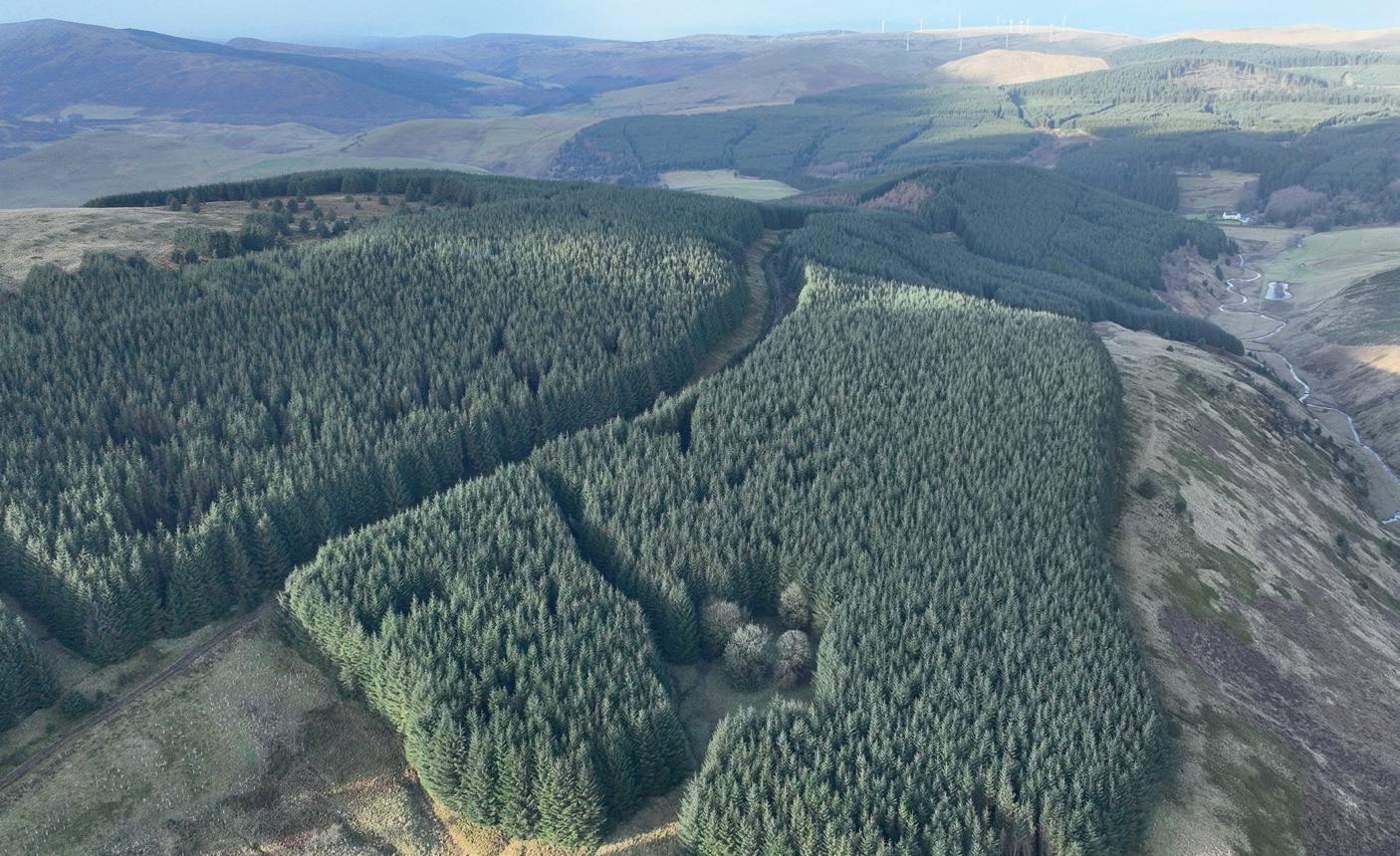
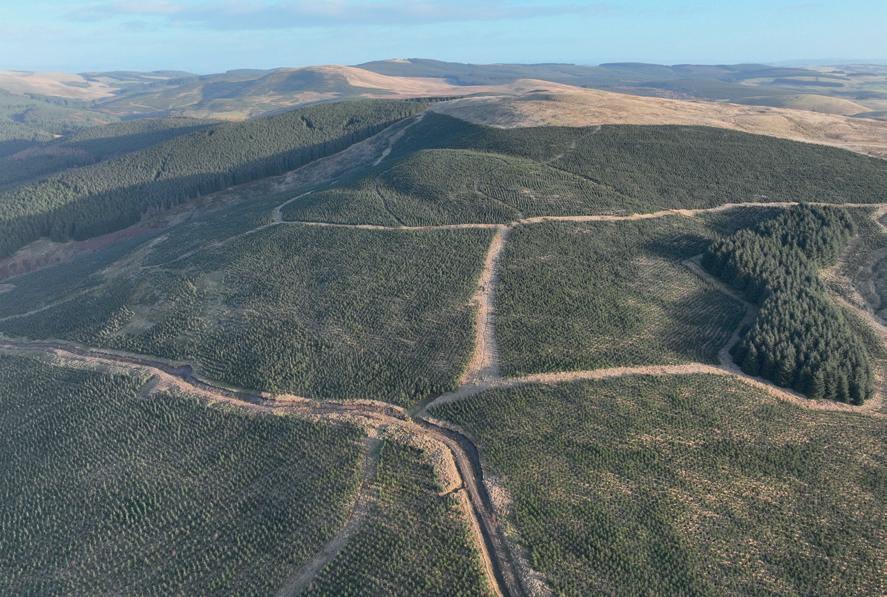



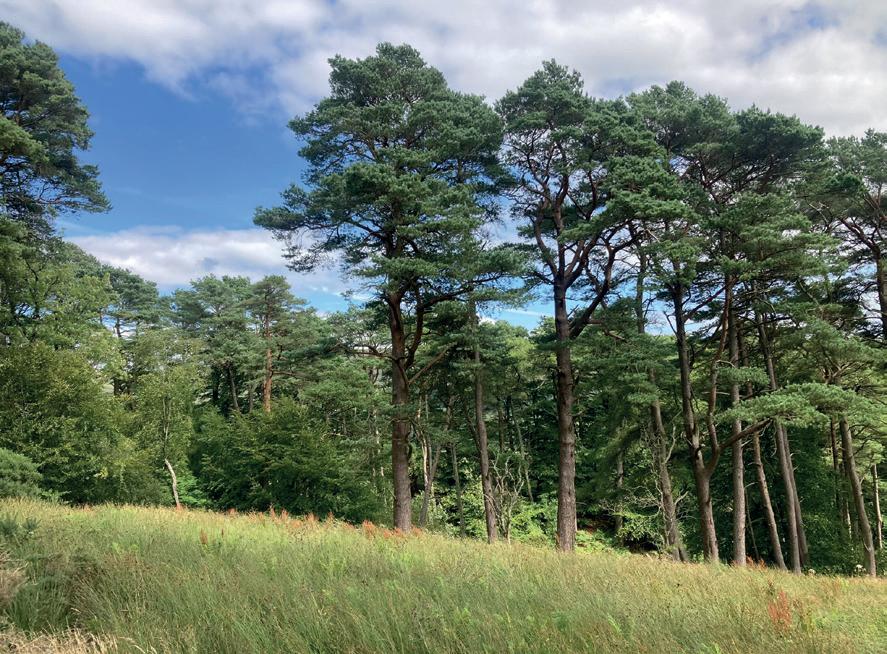


Planning Partner Neil Collar and Associate George Sismey-Durrant from Brodies LLP outline the planning issues for diversification of forestry land in Scotland, England and Wales.
Diversification of forestry land is an opportunity to bring in welcome income, but grappling with the planning system can involve expense and delay. Whether you’re thinking about introducing glamping pods or hosting weddings on-site, good ideas can be hindered by rigid application of planning policies.
If planning permission is required, there are several issues to consider, including:
• siting and design appropriate to location;
• impacts on amenity;
• impacts on the environment;
• roads and access;
• traffic and parking;
• designations applying to land, such as National Parks, Sites of Special Scientific Interest (SSSIs); and
• relevant planning policies regulating rural diversification and tourism developments.
These issues can be avoided if there are permitted development rights, as no application for planning permission is required. These rights are often complicated though, so the following comments are only a general guide. In some circumstances prior notification may need to be sent
to the council, giving them the opportunity to review a more limited range of issues.
Most temporary uses (up to 28 days in a calendar year) have permitted development rights. That includes marquees and other moveable structures associated with the temporary use.
Notably in England, there is a longer period for commercial filmmaking - up to 12 months in any 27-month period.
In England and Wales, only 14 days in total are permitted for the holding of a market or motor car and motorcycle racing. There are also limitations for SSSIs.
The glamping boom has spawned new breeds of accommodation - eco-lodges, pods, cabins, shepherd huts, tipis and wigwams, to name a few.
Where the accommodation is moveable, planning permission may be required for a change of use of the land, rather than for erection of the units. A potential complication is that the moveable structure might fall within the definition of a ‘caravan’. There are separate rights for caravan
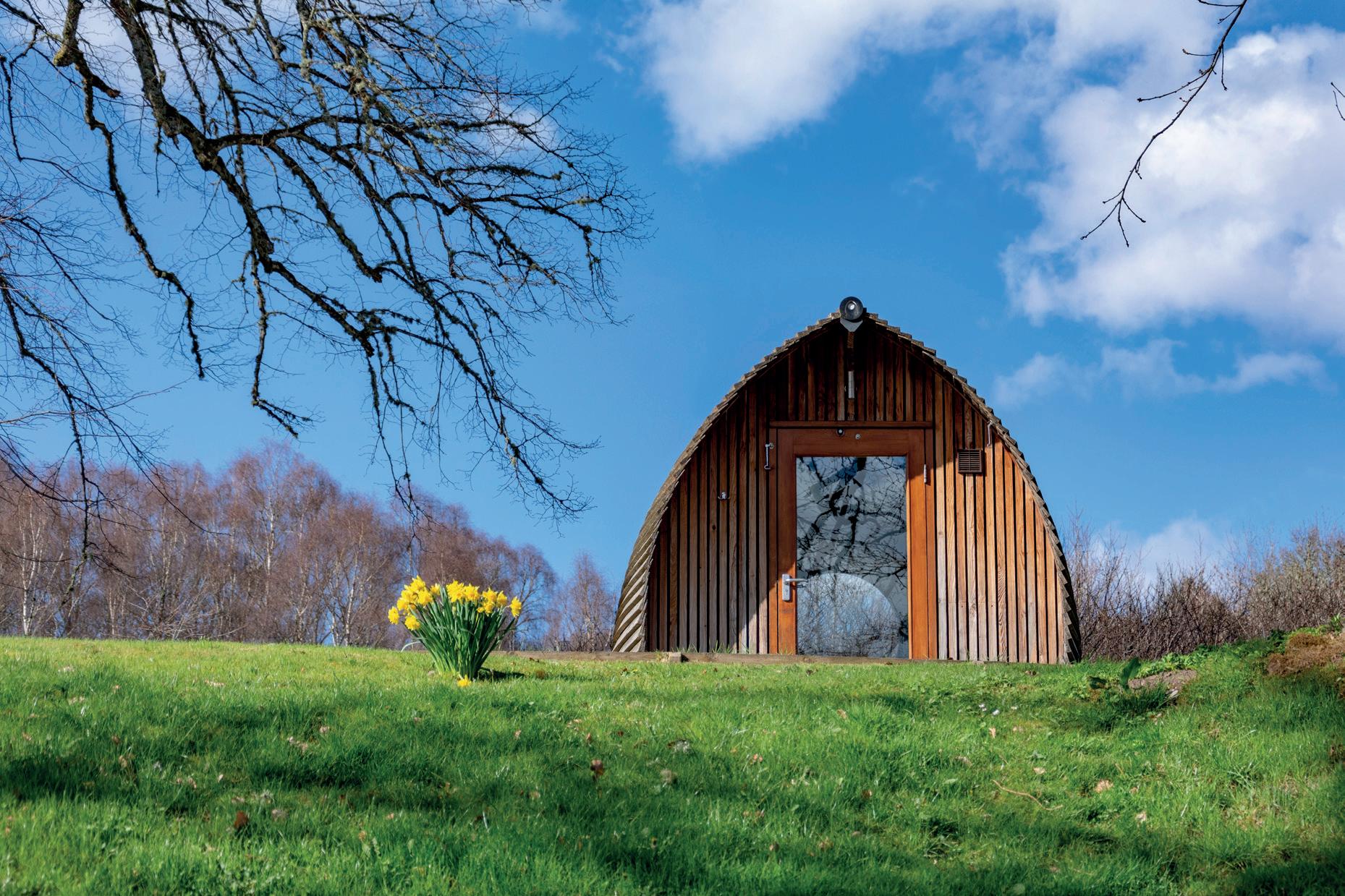
sites (with different rules applying in England, Wales and Scotland).
• In England, planning permission is not required for use as a recreational campsite for up to 60 days in any calendar year. That includes motorhomes.
• In Scotland, new controls on short-term let holiday accommodation may require planning permission and a licence to be obtained from the council.
• If there are existing forestry buildings, in Scotland there are permitted development rights to convert those into houses or flats, and commercial space (subject to various limits).
As can be seen, there are a mix of options for diversification, with different rules depending on where in the UK it is. It’s always best to seek advice before putting plans into action though, to make sure the relevant rules are complied with.
Every case has its own individual circumstances and details and as such, would require advice that takes all of those intricacies into account.
Confor Members have access to a free legal helpline, administered by Brodies LLP. Get in touch for guidance on key issues that impact forest owners and the forestry sector.
Whether your query is employment law, health & safety, planning, tax or property-related, one of our experts will be happy to give you a free initial consultation.
More info: https://bit.ly/3yPGRI1
For members based anywhere in the UK
Brodies LLP 0131 228 3777 www.brodies.com
confor@brodies.com
For members based in England/Wales
Atkinson Ritson Solicitors 01228 525221 www.atkinsonritson.co.uk info@atkinsonritson.co.uk








In order to maximise the use of this year’s 2023/24 Forestry Grant Scheme (FGS) budget, and avoid slippage into the following year, Scottish Forestry is giving another six weeks for projects to be finalised.
The end of the claim year will now be extended up until 17 May 2024, allowing woodland owners extra time to complete their projects, carry out the required paperwork, and submit 2023 claims for FGS capital funding.
Keeping up the momentum and getting as many trees in the ground as possible this year and next could help the case to lever in additional funding in future years.
Rural Affairs Secretary Mairi Gougeon said: “It is critical that we make the most of the available funds during this financial year as next year’s budget for woodland creation has unfortunately had to be greatly reduced.
“By extending the deadline it will assist woodland owners to complete their projects and carry out the paperwork needed to get their claims in for this planting year. Importantly, this action will avoid some slippage of projects rolling into the next financial year and eating into the reduced budget.
“This measure has been discussed with key forestry and rural stakeholders who have indicated their support for extending the end of year claims deadline.”
Taking the trends from the previous financial year into account, up to 20% slippage of 2023/24 woodland creation cases is expected, which could result in significant variation requests, putting additional pressure on the reduced 2024/25 forestry grants budget.
There are also 8,000ha of submitted (currently not approved) FGS applications with a claim year of 2024/25 and a further

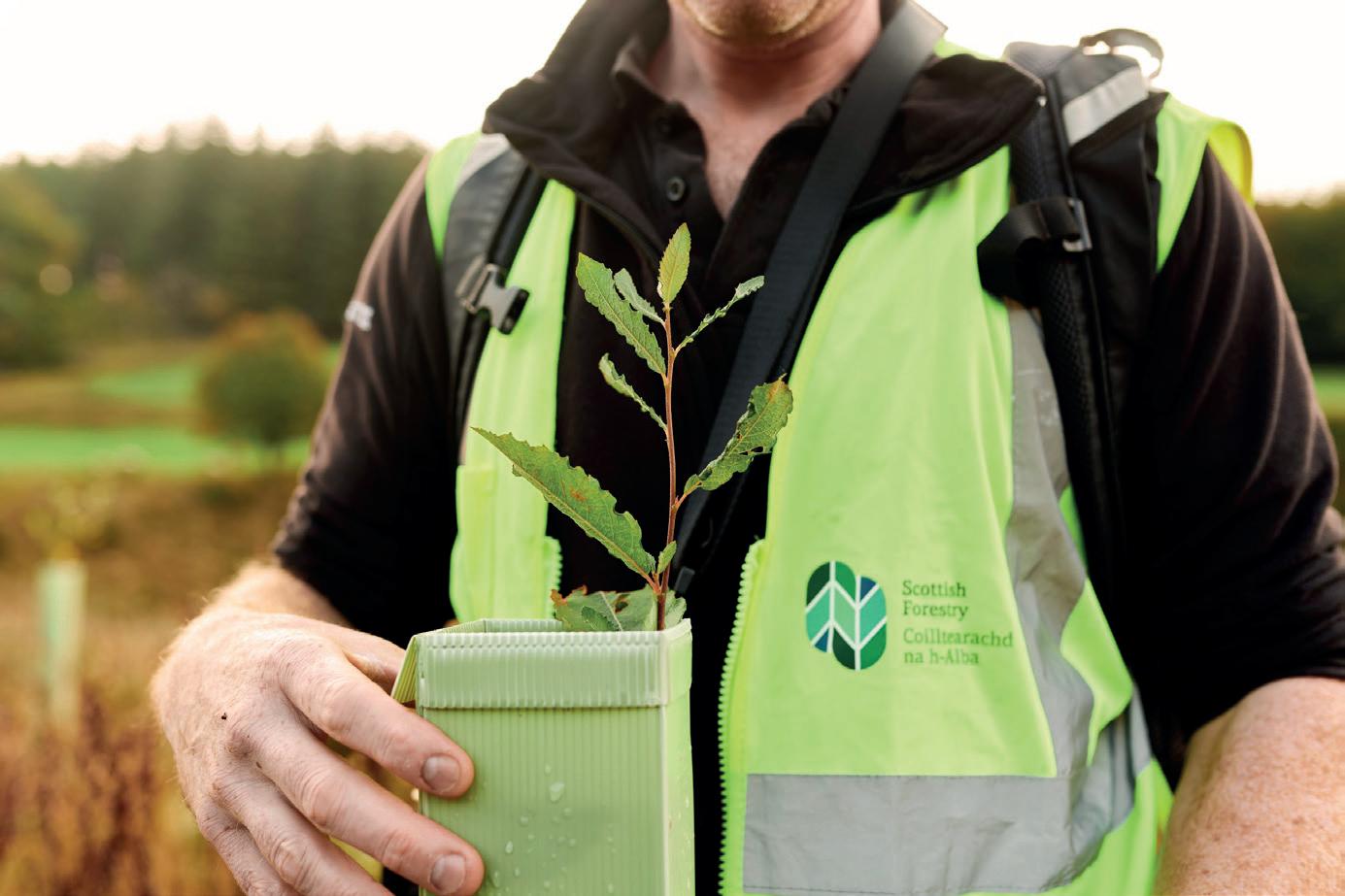
11,300ha of applications in development.
This extension, of over six weeks from previous years, provides significant additional time for all FGS contract holders to complete contracted 2023 activities and, if that is not possible, maximise the area of planting that is claimed by 17 May. The aim is to reduce the level of slippage, allowing Scottish Forestry to utilise the 2024/25 budget headroom on new projects.
Stuart Goodall, Confor Chief Executive, said: “The extension to the deadline for claiming grant this year is welcome.
“There’s very strong interest in woodland creation and maximising what is funded this year is an important component in satisfying as much of that demand as we can.
“A strong year will also demonstrate clearly the demand is there and that future funds need to be found to realise the industry’s important contribution to tackling
damaging climate change.”
Scottish Forestry has been meeting Confor and other stakeholders through the Customer Representative Group to discuss how best to support the sector with next year’s budget. These meetings will continue so that all avenues are explored so that the Forestry Grant Scheme can continue to provide a mix of funding for a variety of projects.
Brendan Callaghan, Director of Operational Delivery at Scottish Forestry commented: “We are currently considering a number of options which we believe will make the most of the money that we have available for next year’s budget. We hope to say more on that in the near future.”
A technical advice note for forestry agents and managers on the deadline extension is available on the Scottish Forestry website.
RFS Certification recognises practical professional skills. Both the Certificate in Arboriculture (Cert Arb) and the Certificate in Forestry (Cert For) require applicants to hold a relevant theory qualification and to achieve four compulsory modules and at least four optional modules.
From this year, Emergency First Aid at Work + Forestry (EFAW + F) will be compulsory modules for both certifications. The First Aid requirement is among a number of changes made.
RFS Learning and Outreach Manager Becky Wilkinson explained: “These
changes reflect ongoing discussions we have had with those working in the sector. Professional Certification is an important signal. It tells the public, employers and contractors that the holders are both professional and competent.
“Other changes are the direct result of changing practices. Ash dieback, for instance, means many affected trees may be dangerous to climb. Working from an elevated platform instead may be the only practical solution.”
Those applying for the Cert Arb will now be required to have a Level 2 Award in Accessing a Tree Using a Rope and
Harness among compulsory modules. A new optional module, the Level 3 Award in Use of a Chainsaw from a Mobile Elevated Platform – MEWP, has also been added.
Those who have already applied for the Cert Arb or the Cert Forestry have until the end of June 2024 to complete their application under the former requirements. All new applicants will need to apply using the new modules.
RFS is the longest standing professional certification organisation, with the Cert Arb succeeding the Woodsman Certification.

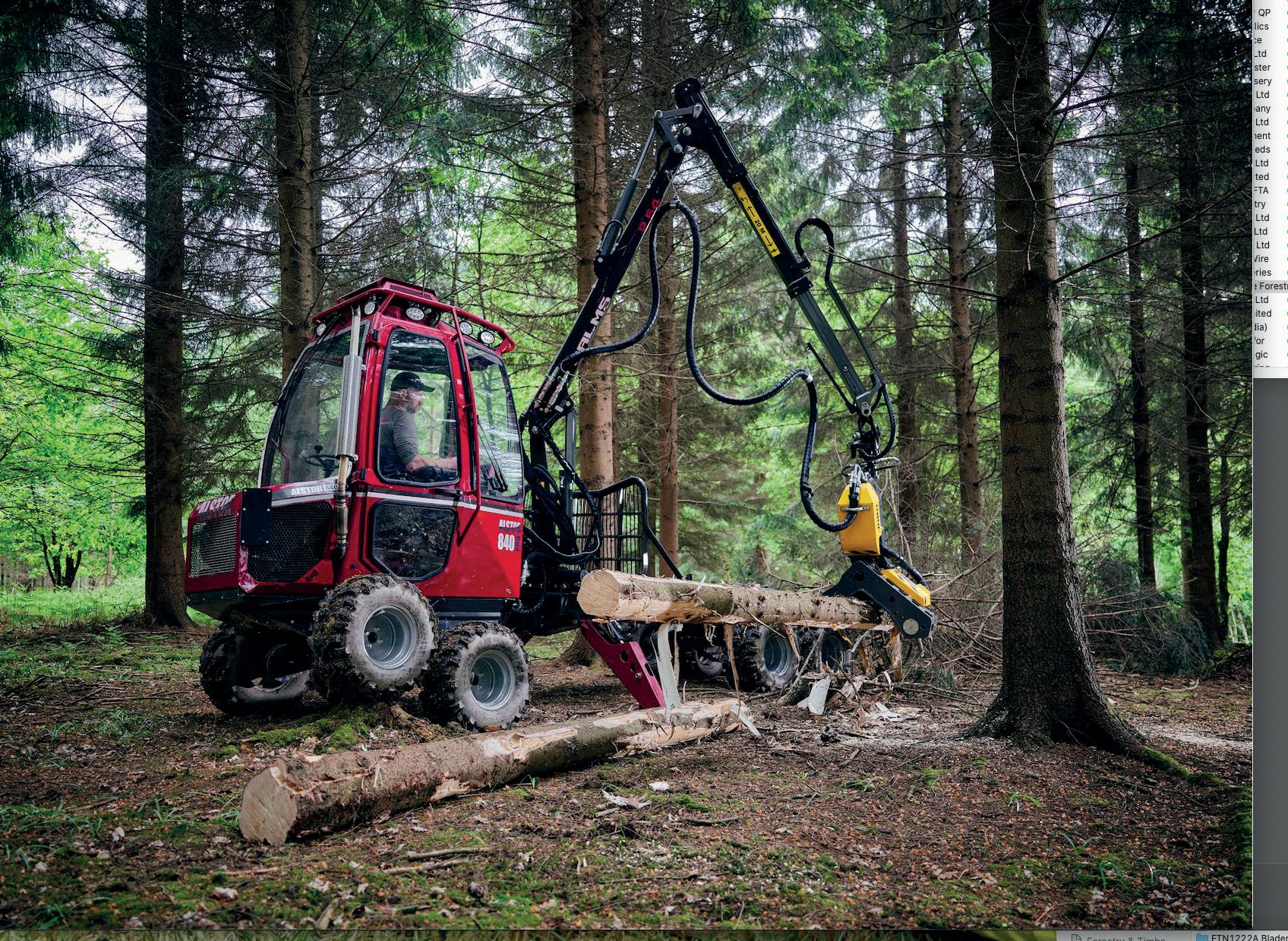




Woodland Life have restore woodlands
Anew Woodland discover pinewoods with an ancestry to the end be saved and Caledonian unique and red squirrels, capercaillie Yet less than 2% of the Caledonian forest, which once covered much of the Highlands, survives. Just 84 individual Caledonian pinewoods are now officially recognised, having been last documented more than a quarter of a century ago.

The Wild Pine Project is identifying lost pine sites by tracing their history through the centuries using historical evidence, including maps which date as far back as the 1500s.
But Woodland Trust Scotland and Trees for Life have become aware of other lost wild pinewoods, and from historical documents and anecdotal reports, more are thought to exist.
The charities have teamed up to identify and save these forgotten pinewoods through the Wild Pine Project, beginning with the western Highlands, where Scots pines form part of Scotland’s rare temperate rainforest.
Wild pinewoods have declined over the centuries, and today their recovery is often hindered by overgrazing by herbivores.
“Lost pinewoods are at particular risk because they are unrecognised and undocumented. We want to find them, assess their condition, and revive them before they are lost forever,” said Jane Sayers, Wild Pine Project Officer.
“Finding these pinewoods requires a lot of detective work. They are often small and remote, hidden in ravines safe from
Once potential sites are found, historical, ecological and landscape evidence will help establish whether they are wild or planted, and their health and resilience will be assessed. The charities will then work for the recognition and recovery of the discovered wild pinewoods, including by presenting findings to landowners and managers.
The unique status of Caledonian pinewood was first documented by HM Steven and A Carlisle in their 1959 book, The Native Pinewoods of Scotland, which included 35 sites. In the 1990s, the then Forestry Commission Scotland compiled a register, which became the Caledonian Pinewood Inventory. Last updated in 1998, the Inventory recognises 84 sites.
Last year, a major Trees for Life study into the health of 72 of these known pinewoods concluded many are on a ‘knifeedge’ – with high deer numbers, lack of long-term management, and climate breakdown representing major threats to their survival.

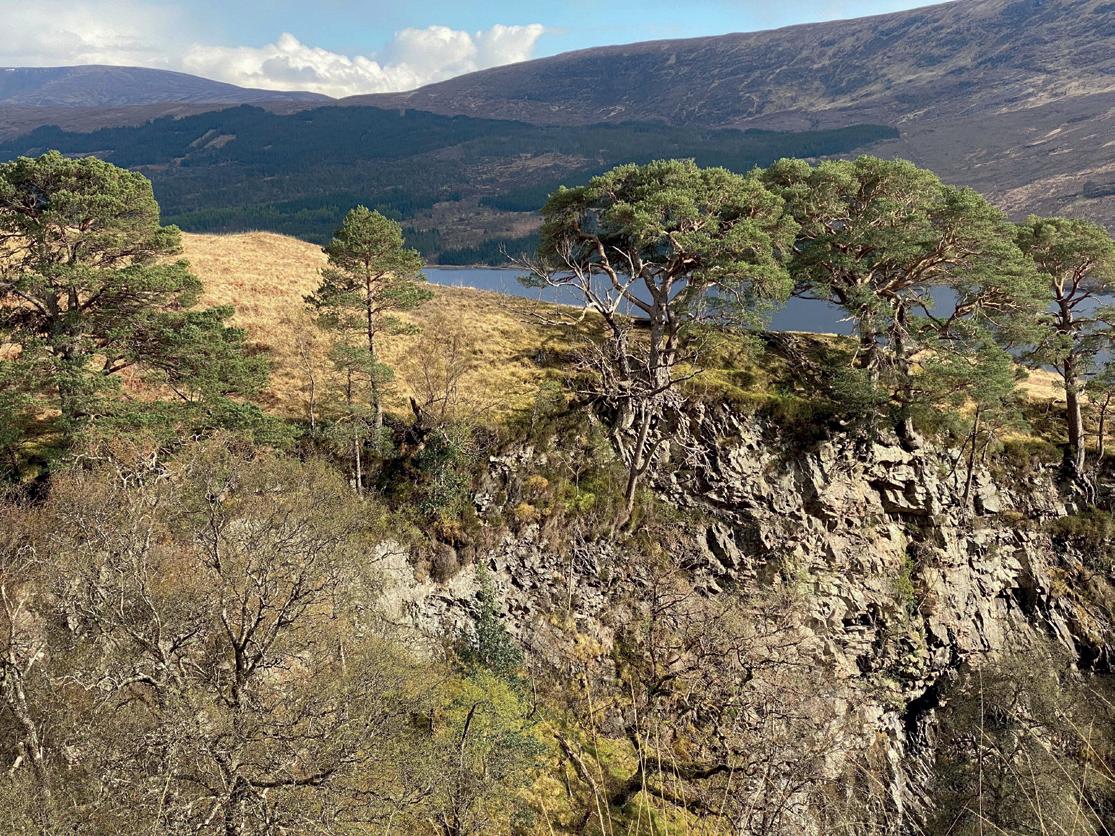
The rewilding charity is calling on the Scottish Government to help tackle the nature and climate emergencies through landscape-scale action to save the woodlands, including through targeted funding for restoration and major reductions in deer numbers.
The need for urgent upscaling of political and public action to save the Caledonian pinewoods was spotlighted by a parliamentary debate held in the Scottish


Parliament on 24 January, held to co-
Joint venture aims to support the planting of 9,000 oak trees and help create an area of wildflower meadow at Wing Wood in Buckinghamshire
Forestry England and British Airways have announced a one-year partnership which will support planting 9,000 oak trees and help create an area of wildflower meadow at Wing Wood in Buckinghamshire.
Wing Wood is a new 51-hectare woodland Forestry England is creating to be an inspiring green space for local people, a valuable habitat for wildlife and a sustainable source of timber. Support from British Airways’ Better World Community Fund is boosting the number of trees being planted and has kickstarted funding for the wildflower meadow in the new woodland.
Forestry England have already planted more than 109,000 broadleaf and conifer trees at Wing Wood and will plant another 23,000 this year. Thanks to British Airways’ support, this will include 9,000 oak trees, and British Airways staff joined Forestry England to begin the planting of these at Wing Wood. They also saw how the rest of the new woodland is being created including the preparations for the wildflower meadow, the first section of which will be planted in the spring.
Mary Brew, Head of Community Investment and Responsible Business at British Airways, commented on the partnership:
that deliver benefits and life-changing opportunities for the communities we serve around the UK.
“By working with Forestry England, we’re able to support the charity in creating beautiful green space to be enjoyed by the local community and wildlife alike and we’re looking forward to seeing Wing Wood grow over the years to come.”
In addition to the kickstarter support from British Airways, Forestry England have launched a fundraising campaign using Crowdfunder. They are aiming to raise £16,000 to expand the new wildflower meadow at Wing Wood, which will cover just over half a hectare. The donations will buy beautiful wildflower plants like yellow rattle, birdsfoot trefoil, bellflowers, columbine and knapweed.
The meadow will be a spectacular feature as it establishes, and paths alongside will allow visitors to get close up when they are exploring the woodland. It will blend with the woodland, providing essential food plants for pollinating insects such as butterflies and bees and shelter for small mammals and birds, creating a joined-up mosaic of habitats across Wing Wood.
Later this year Forestry England will begin creating five new wildlife ponds, a
continued on page 56
The new Wild Pine Project is funded by Woodland Trust Scotland, thanks to support from players of People’s Postcode Lottery, and by Trees for Life, thanks to support from the TreadRight Foundation.

continued from page 55
Wood is one of many new woodlands estry England is creating across the coun try to tackle the climate emergency the nature crisis we are facing, as well providing beautiful, inspiring places people to spend time in. Since the 1930s over 97% of precious wildflower meadows have disappeared.
“By planting this meadow alongside thousands of trees, we’re creating a biodi verse landscape which will provide many benefits including creating healthy storing carbon and supporting wildlife thrive.
“We’re delighted to be working British Airways to expand what we’re ing at Wing Wood and look forward seeing this new climate-resilient woodland mature in the years ahead. Partner support like this means we can do more in our woodland creation work, delivering health and wellbeing benefits for communities and supporting nature’s recovery”.

woodlands and forests at four sites across England.
As part of the partnership, British Airways staff will also volunteer alongside Forestry England teams to help look after
The announcement comes at a time of major national focus on tree planting, woodland creation and nature recovery, with Government targets to treble tree planting rates in England by 2024. Forestry
Biorefining innovator Sonichem is leading a £600K Innovate UK-funded consortium to develop materials for automotive applications from carbon-neutral agroforestry-derived resins.
Aconsortium led by sustainable technology innovator Sonichem, formerly known as Bio-Sep, has been granted nearly £600,000 in funding from Innovate UK’s ‘Resource efficiency for materials and manufacturing’ (REforMM) programme.
The funding will accelerate the development of the proprietary Sonichem ultrasound technology and the production of renewable, cost-effective alternatives to petrochemicals commonly used in the production of plastics, resins, and composites within the automotive industry.
Sonichem is an award-winning clean tech company dedicated to pioneering green chemical production through innovative ultrasonics. Their process transforms low-value woody biomass into valuable green chemicals, with applications spanning bio-based materials, resins and composites, pharmaceuticals, cosmetics and more.
The cutting-edge CARMA (carbonneutral agroforestry-derived resins to
materials for automotive applications) project will apply Sonichem’s ultrasonic processing technique to automotive applications for the first time. The patented breakthrough approach converts sawdust, the biomass by-product from forestry operations, into high-quality lignin. This renewable material will then serve as the basis for bio-based platform chemicals, creating green alternatives to conventional petrochemical-derived materials currently used to produce various vehicle components.
This transformative initiative is being undertaken in collaboration with technology innovation catalyst CPI, the National Composites Centre (NCC), Scott Bader, SHD Composites and Polestar, with each industry leader contributing its own specialised knowledge and expertise.
In particular, CPI will support scale-up of the Sonichem technology; Scott Bader will pioneer the development of highperformance, sustainable composite resin formulations.
England is planting at least 2,000 hectares of new, high-quality woodland in England by 2025.
Several new woodlands are being created as Coronation Woods to mark the Coronation of King Charles III and leave a lasting legacy for people and nature.

Forestry England have updated their processes for seed collectors wanting to collect tree seed from the nation’s forests to make it more streamlined and accessible.
This update supports the aims of the England Trees Action Plan to increase tree nursery capacity and enhance the quantity, quality, diversity and biosecurity of domestic tree production. More tree seeds are needed to enable tree planting targets to be met, and Forestry England recognises that the nation’s forests can contribute to this supply.
To help achieve this, they have published a document setting out how they
will enhance diversity forests. This creasing collect and ests. The sets out a wishing to estry England Forestry ply team mission to ed email seed collectors municate sion. Collections local forest needed from can collect any tree seed. Forestry England’s Plant and Seed Supply team will put the collectors in touch with the relevant forest district contact.

For the first time, the protocol includes a step-by-step guide for collectors, explaining what they need to do to seek permission for their collecting, the payment arrangements, and the timeframe they

to working with our highly regarded industrial and technology partners to accelerate the valorisation of abundant and sustainable biomass towards high perfor-
need to be aware of. The steps also include links to the forest reproductive material paperwork that needs completing by anyone looking to market the seed they collect or any plants they grow from the seed.
Find out more and download the seed collecting protocol at www.forestryengland.uk.
motive interiors applications.
Nick Smith, Technical Director at SHD Composites, said: “SHD Composite Materials Ltd. is very excited to be working with Sonichem on the next generation of sustainable resins wholly sourced from UK feedstocks as part of our ongoing commitment to reduce the ecological impact of our products. These materials have the potential to be a game changer in the high-value composites market.”
The CARMA project aligns with the UK Government’s focus on resource-efficient, sustainable industrial materials as it aims to significantly reduce the UK’s reliance on imported composite materials, which currently amounts to approximately £250260 million per year.

mance materials.”
Additionally, the NCC, SHD Composites and Polestar will together explore the potential of these novel materials for auto-
The newly awarded funding from Innovate UK will enable the international consortium to establish a robust and renewable lignin supply chain within the UK and accelerate the formulation of sustainable plastics and resins that contribute to steering the automotive industry toward a net-zero future and enhancing the UK’s bioeconomy.
Adrian Black, CEO of Sonichem, said: “We’re extremely pleased to have the backing of Innovate UK’s REforMM programme for this strong industrial consortium. This funding is a catalyst in our quest to offer the automotive industry a sustainable alternative to petrochemical-derived plastics. With Sonichem’s ultrasound technology and the collaborative expertise of our partners, we are set to make strides toward a net-zero future and strengthen the UK’s bioeconomy.”
Scottish Forestry is investing £2 million towards timber transport projects across Scotland.
The funding will help decarbonise the forestry sector and reduce the impacts of timber lorries on communities and the environment.
As part of the timber transport boost, Scottish Forestry has confirmed continued funding of £1.2 million towards projects including TimberLINK, other road improvements, the three-year electric lorry trial and Timber Transport Forum project officers.
Around £800,000 of the funding is to kickstart bids for new projects from local authorities and landowners, who have until 21 March 2024 to submit their
Announcing the Strategic Transport Fund support, Rural fairs Secretary Mairi Gougeon said: “Providing support to the forestry sector to help get its timber to market in a sustainable way is an important investment for the longer-term.
“We are focussing the funding towards projects that contribute to Net Zero by promot ing a modal shift in timber transport, also ensuring rural communities road users benefit at the same
“With funding for new project now open, I would encourage local authorities and woodland owners to work up their plans and apply before the deadline.”


The call for new proposals is to support preparatory works and smaller scale strategic projects. Preparatory work may involve surveys or working up detailed plans to enable future bids. Smaller scale projects could include decarbonisation work, sharing good practice, or new research to help the sector deliver timber safely.
Welcoming the funding, Neil Stoddart
of Creel Maritime Ltd, who is managing the three-year electric lorry trial, said: “The Net Zero EV HGV demonstrator project has successfully proven both the abilities and also highlighted the challenges associated with transitioning to alternative fuels in the forestry sector.
“To date, the two trial vehicles are performing well and after some teething problems with charging infrastructure, have now settled into robust work patterns – deliver-
ing goods and information for the project.”
Aurelia Peddie, Commercial and TimberLINK Manager, with Associated British Ports, added: “TimberLINK has gone from strength to strength in recent years with the 2,000 tonne MV Runner, chartered by Associated British Ports, shipping in excess of 70,000 tonnes of timber last year. This is good news for decarbonisation and of course the environment as using the ship to transport timber, instead of lorries, avoided around 42,000 tonnes of harmful CO2 being used.
“I would also highlight the value of this project in providing a focus for a range of stakeholders across the forestry supply chains, including the maritime sector, to work together and collaborate towards a more sustainable future.”
More information on applying for Strategic Timber Transport Funding can be found on the Scottish Forestry website.
The opportunity for partnerships and clusters to drive forward landscapescale, land manager-led nature restoration has been discussed at the Wildlife Estates Scotland (WES) Assembly 2024.
Held at Kilgraston, Perthshire, this year’s event delved into the theme of natural capital, offering insights into WES’s efforts to quantify and monitor natural capital streams like biodiversity, greenhouse gases, hydrology, and bionutrition - and offer clarity on what is be-
coming an increasingly complex policy area.
The Assembly was sponsored by Virgin Money which has long history of partnership with farming businesses and wider rural sectors across Scotland.
Among the presenters was Buccleuch, sharing their experiences and learnings from their Queensberry and Borders Estates, and Grosvenor Estates showcasing their work on unlocking natural capital revenue streams.
Miles Montgomerie, WES Chair, said: “There is a huge opportunity for landowners to drive forward nature and habitat restoration and find innovative ways to work with others to achieve that on a landscape-scale.
“There is a wealth of knowledge available within Wildlife Estates Scotland and it is important that it can be tapped into by fellow WES members and other stakeholders at our Assembly as we seek to halt and reverse the loss of wildlife.”




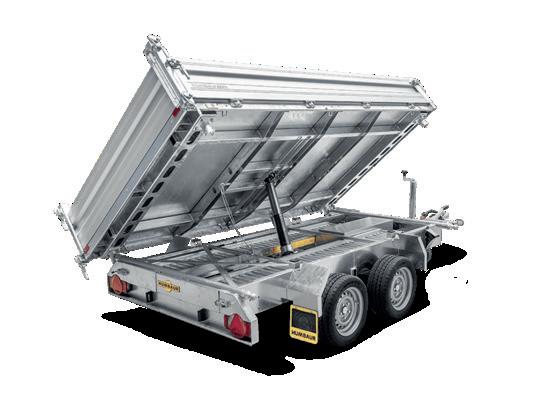













Andy Newbold, past President and Director of the Institution of Agricultural Engineers, has been named as the new Chair of FISA following the end of Simon Hodgson’s term last year.
Andy looks forward to engaging the whole forestry industry, and in his tenure will focus on leading FISA’s development, ensuring effective delivery. As Chair, Andy will be supporting the Steering Group, the subgroups, committees, and the board.
In past roles, Andy has been involved in governance alongside the prudent stewardship of membership funds and the effective management of a small delivery team. In 2017, he was part of the team delivering the Forestry Harvesting Demo at Little Clyde, involved directly with industry partners, working on safe forestry practices and machinery.

Andy is passionate about safe, professional forestry. He chairs the FISA modified machinery subgroup and was part of the Working Group producing FISA 505 Traction Assist.
Simon Hodgson stepped down in June 2023, on completion of the twoyear Chair term of office. During his post Simon provided clear and proactive leadership helping change attitudes, encouraging a greater understanding of the need to improve safety at every level in the industry.
The FISA Board expressed their thanks to Simon for his proactive approach during his period as FISA Chair and as a Director since the 2017 AGM.
FISA began in 2012 with a call to arms to representatives from many of the leading industry organisations. The Accord sets out the commitment that each organisation, and the sector at large, can make to raise the standard of health and safety in their place of work.
The new FISA Chair will champion the FISA Accord, providing clear and proactive leadership to change attitudes and behaviour at every level of industry.
IndiWoods Ltd woodland consultancy is based in County Armagh and works with farmers and landowners throughout Northern Ireland to encourage native woodland planting.
The business is owned and managed by Carolyn Trimble, who has over 20 years of experience in creating native woodland throughout the north of England and in Northern Ireland. Carolyn and her team are proud to have planted over 2 million native trees thus far.
Among these projects is an amazing woodland planted on the outskirts of Banbridge, County Down. It comprises 12ha of agricultural land planted as a native woodland known as Beechgrove Doggy Wood, intended to extend and enhance the hugely successful Doggy Fun Park next door. Beechgrove Woods features activity trails amongst the trees for dogs to enjoy.
A long-standing customer of Green-tech since 2006, IndiWoods purchased circa 22,000 Tubex Easywrap Tree Shelters and canes to protect the newly planted trees from rabbits and hares. The Easywrap tree shelter is a polypropylene tree wrap that can be recycled once it has been used.
They are designed for plants where lateral growth is important low down. As the tree grows, the Tubex Easywrap expands and opens, allowing the branches to grow sidewards. It retains moisture and heat around the plant and protects it from small animals, as well as chemical sprays, to improve survival rates.
Beechgrove Doggy Wood has been created on 30 acres and has woodland trails and endless areas to explore, it provides dog lovers with the opportunity to sponsor a tree for life and dedicate it to their pet.
Carolyn commented: “I am passionate about encouraging native woodland planting throughout Northern Ireland and have worked with Green-tech for almost two decades to fulfill my requirements for tree planting and protection materials. Their customer service is excellent, and they always deliver what I need, when I need it, so I would happily recommend them.
“The owners of Beechgrove Doggy Wood are delighted with their woodland, and I loved being involved in it. We used native species to help strengthen and diversify the local ecosystem and I am thrilled with how well it has been received.”
Natural Resources Wales’s (NRW) Forest Operations and Land Management teams has been turning back the clock to use traditional forestry skills to thin an area of sensitive woodland in Fforest Fawr near Tongwynlais, on the outskirts of Cardiff.
Horse logging is an ancient sustainable forest management technique that uses horses to pull timber from felling areas without the need for large machines and with minimal damage to the ground and other plants.
The work to thin and harvest larch trees that are infected with Phytophthora Ramorum, commonly known as larch disease, started in January and will continue for about three months.
These infected trees are under a Statutory Plant Health Notice and need to be thinning or felled to stop the spread of the disease.
Chris Rees, NRW Forest Operations Team Leader, said: “Horse logging has been around for thousands of years and is still a viable and sustainable method of extracting timber in modern day forest operations.

“Using horses rather than machines in environmentally sensitive areas gives us a low impact and sympathetic solution, particularly for managing important ancient woodlands and archeologic sites.
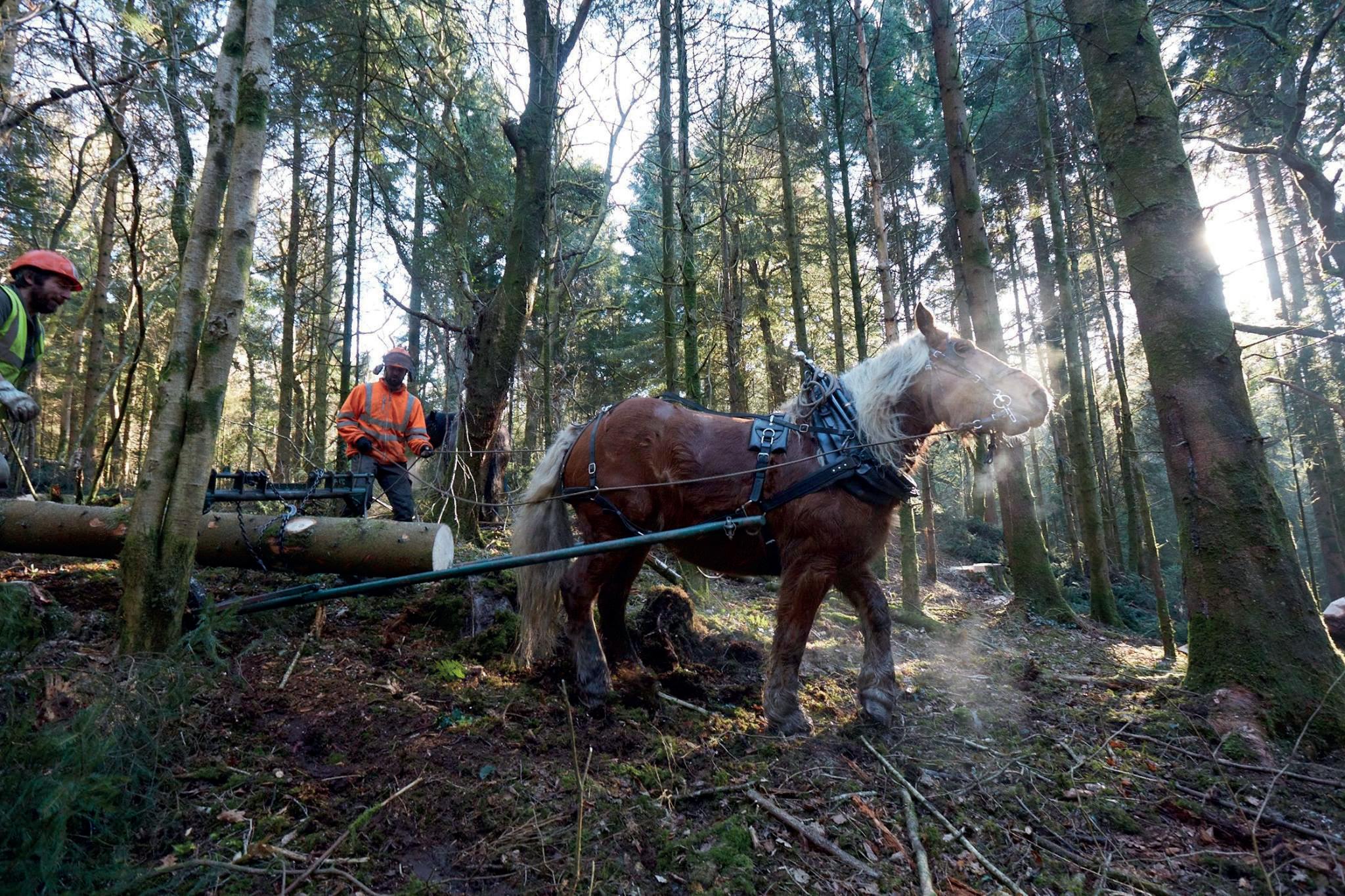
“We used horses in other South Wales Central woodlands last year and we’re looking forward to keeping this wonderful tradition alive in Fforest Fawr.”
The area of operations, 4.7 hectares, is not entirely larch, the rest being native broadleaved species that will not be felled. Precision felling and timber extraction is required to minimise damage to the surrounding broadleaved trees and other important archaeological features.
The thinning of the larch will also al-
low the broadleaf canopy to increase. As a Planted Ancient Woodland Sites (PAWS) woodland, this work will help to restore and improve its ecological potential.
Horses, horse boxes, welfare provisions and associated equipment will be kept on site for the duration of the work.
While the Fforest Fawr car park will remain open, visitors to the woodland are asked to adhere to any safety signs or diversions, and to keep dogs on leads in and around the work area.
andowners, looking to rise to the challenge of meeting the Scottish Government target of restoring 250,000ha of peatland across Scotland by 2030, are restoring peatland for a number of reasons, such as habitat restoration, biodiversity enhancement, improvements in water quality - and generating carbon credits.
These credits can be used ‘in house’ to balance against their own UK based estate/farm emissions and any surplus credits sold to those organisations wishing to mitigate unavoidable based emissions.
Dr Erin Stoll joins the Scottish Woodlands carbon team, the UK’s largest developer for Woodland Carbon Code projects, with several large-scale peatland restoration projects already completed and a number of others in the pipeline.
Emma Kerr, Head of Carbon, said: “I’m delighted to welcome Erin on board, in what is a significant appointment for the company.”
“Her appointment as Peatland Project Manager first in this growing sector by a mainstream forestry business. Erin’s work will complement Scottish Woodlands’ current forestry management carbon services and deliver peatland restoraprojects for a wide range of clients with a carand environmental objective.
“We realised there was a growing need for an in-house peatland specialist to design and manage a wide range of large and smaller restoration projects, and Erin is an ideal fit for the role. She has an excellent blend of academic achievements and hands-on experience in environmental science, land management, and peatland ecology.”
Dr Stoll has previously worked as a planning forester and peatland specialist, responsible for forest planning, grant applications, and peatland restoration initiatives. She has also worked at the Environmental Research Institute, part of the University of Highlands and Islands (UHI North Highland), in Caithness and for the John Muir Trust.
She commented: “I’m really excited to be joining a company at the forefront of peatland restoration - and look forward to supporting a wide range of excellent projects as part of the Scottish Woodlands team.
“It’s also a great opportunity to develop my leadership, research, and project management skills within a larger organisation which is hugely respected in the rural sector.”
Dr Stoll has a PhD in Environmental Science from the University of Stirling, where her research focused on soil carbon and nutrient storage, as well as an MSc in Conservation and Resource Management from the University of Liverpool.
Tubex Nature™ are the first tree shelters to combine externally tested biodegradability in soil with scale of manufacture and proven performance.
Biodegradable in situ tested against ISO 17556 for soil biodegradability, and independently tested to show biodegradation on soil at ambient temperatures
The most sustainable solution where collection isn’ t possible
3-5 year expected service-life
Bio-Based material derived from sugarcane, corn & starch
Nature™ Easywrap
Our range of biodegradable wraps that expand as the tree grows, for easy installation.
VOLE & MICE ATTACK
Nature™ Shrub Shelter
Our largest diameter biodegradable tree shelter for shrubs and bushier plants.

BEST-SELLING


EXPANDS AS PLANT GROWS
Nature™ Vole Guard
Our biodegradable vole guard to protect young trees from small rodents and strimmers.
LARGEST DIAMETER
Nature™ Standard


Our most popular biodegradable tree shelter for enhanced growth and protection.
forestry and wood-using sector careers to Young Engineers and Science Clubs across Scotland.
Over 1,500 schools are currently a part of the Young Engineers and Science Clubs (YESC) network, engaged in a variety of in-classroom and extracurricular projects to build knowledge and skills.
Confor has been a sponsor of the ‘Climate Smarter’ initiative by YESC for a number of years. The project is designed to develop the STEM and digital skills of young learners, and encourage them to think creatively about solutions for global problems now and in the future.
YESC provides schools with the resources and training to deliver experiments and activities that will take them on a journey to investigate how we can tackle the climate emergency. This includes wood samples supplied by Confor members.
The programme culminates in the pupils designing and building models of their future eco-school, incorporating all their research into sustainable building materials, energy efficiency, smart controls, energy generation and responsible water use.
They then showcase these models for judges and other school teams at Celebration of STEM events throughout the country.
Get involved
YESC are looking for organisations to bring STEM to life for young people across Scotland.
The celebration events bring together groups of young people from schools
across enjoy
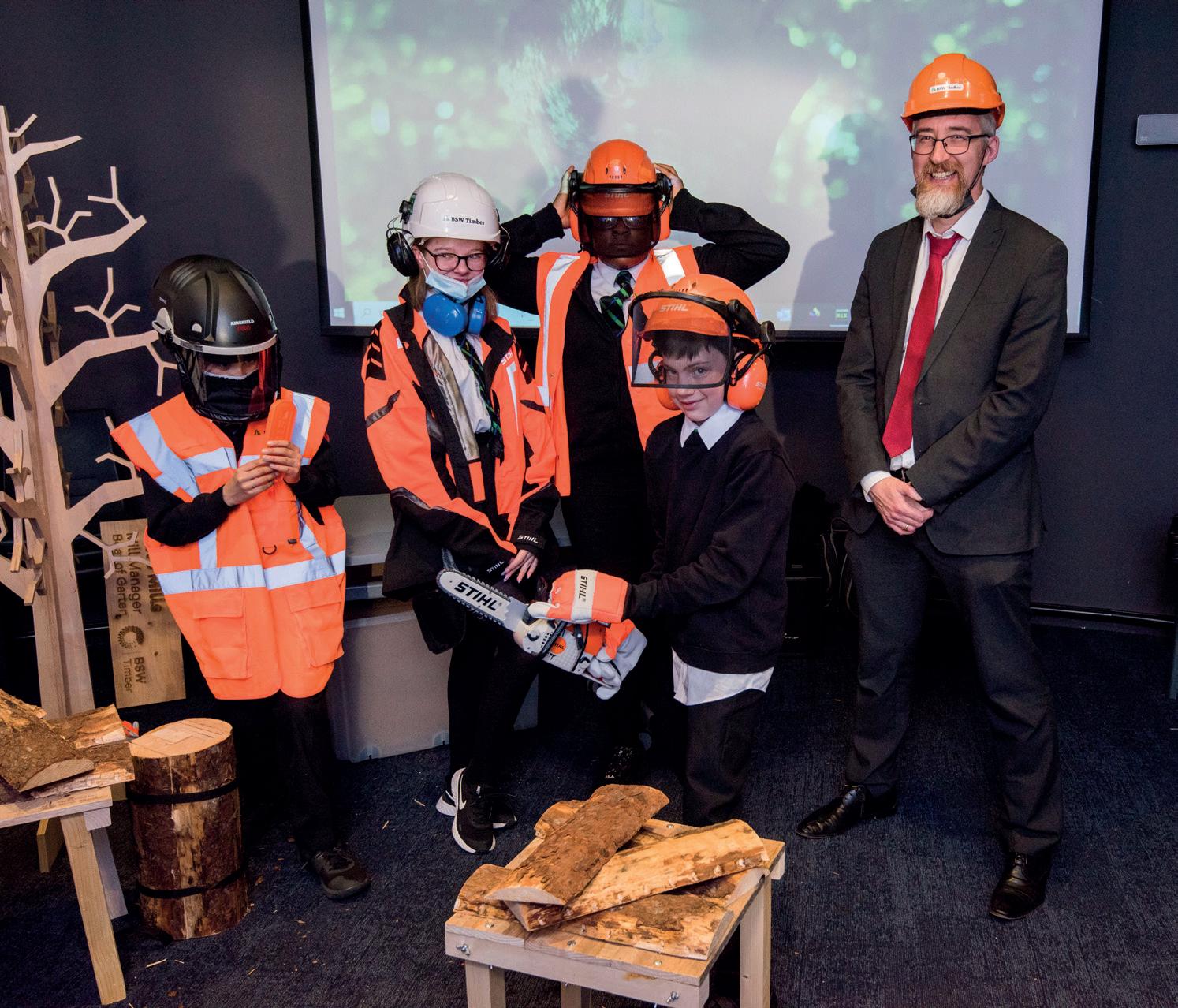
provide teamwork, problem solving and creativity. They are a fantastic opportunity for schools to engage with employers and gain an insight into the careers available, with potential pathways to these positions. Partners are invited to get involved in this year’s events:
• bp – North Sea Headquarters, Dyce, Aberdeen (2nd May 2024)
• Shetland Museum & Archives, Shetland (8th May 2024)
• National Mining Museum Scotland, Midlothian (14th May 2024)
• Heriot-Watt University, Edinburgh (22nd May 2024)
• King Street Halls, Orkney (29th May 2024)
• Inverness College UHI, Scottish School of Forestry, Inverness (6th June 2024)
• Carnegie Conference Centre, Fife (11th June 2024)
Each event also incorporates career case study speakers to help inspire the young people. The aim of these talks is to give insight into the wide range of roles available in the world of work in a simple and informal way.
If you would like to find out more about getting involved with YESC through giving talks at schools, running activities at events, or providing resources for learning, get in touch with Eleanor O’Neill (eleanor.oneill@ confor.org.uk).
Logs the length of a double decker bus, harvested by Forestry Land Scotland (FLS) and supplied to a specialist log cabin builder, are now being used to build a full-scale log house.
The house is now being constructed by Bedrock Buildings and erection on site is expected to begin in the early summer, on a plot of land in the village of Tomich. The finished house will use a total of 55, massive, 100-year-old Douglas Fir logs.
Harvested as part of FLS’s A82 steep ground harvesting programme (designed to remove very large old trees that are
now getting too large for the landscape and causing a potential risk), the logs are now being prepared by the Bedrock Buildings team at their workshop and yard.
The log work (peeling, scribing, cutting and assembly) takes place mostly in the workshop and yard, ahead of a short assembly on site after which the roof, floors and windows are all added.
Ross Balharry founded Bedrock Buildings in 2001 after building his first log cabin with his brother when they were teenagers. He thanked FLS for going the
extra mile and being interested in what he is hoping to achieve.
He explained: “Working with FLS and Calum Duffy has been great: knowing that the requirement was a bespoke order, for log cabin construction, they helped to find practical solutions throughout, from order to cutting spec, purchase and collection. I was given an opportunity to view and select logs at the felling site, allowing for detailed assessment and measuring up, prior to purchase. This was a huge benefit for me with regards to planning and logistics.”
The following has been submitted to Forestry & Timber News by the Forest Stewardship Council (FSC) in response to an article in our December 2023 issue.
The recent article “Is labour a high risk in forestry?” in Forestry and Timber News contained a number of points regarding how Core Labour Requirements relating to workers’ rights are being implemented and audited by FSC, on which FSC UK would like to respond.
Firstly, the information in Advice Note 23 applies specifically to Chain of Custody (CoC) certification and does not apply to Forest Management (FM) certificate holders. Regarding Advice Note 23, FSC UK will continue to engage with UK CoC stakeholders and represent their views on the issue of how Core Labour Requirements are interpretated and audited within the UK. FSC UK has and will continue to raise concerns regarding the implementation of the CoC Advice Note 23 and, in particular, the use of the ITUC risk rating.
FSC International has already committed to a revision of Advice Note 23 during 2024, including stakeholder consultation in the first half of the year, and this includes looking at alternative methodology for assessing country level risk and whether there are other indices that may be more appropriate. FSC will continue exploring with stakeholders how it could be demonstrated that contractors meet the requirements and remains open to alternatives to the ITUC index.
With regard to impacts on FM certificate holders, until such time as UKWAS 5 is
approved, the present requirements within UKWAS 4 regarding labour rights and their auditing remain in place. We would like to stress that Advice Note 23 does not apply to FM certificate holders. The UKWAS 5 Revision Group made up of representatives across the forestry management sector is presently working on its feedback to the FSC and PEFC responses to the initial draft UKWAS 5. While FSC International has requested a number of changes to the draft UKWAS 5 within the area of workers’ rights, these discussions are on-going, and no final wording has been agreed.
Regarding the comments about such core labour requirements undermining the FSC brand, it is hoped that we can all agree that workers’ rights are an essential part of any claim to sustainable forestry. While in the UK we have a long history of legislative protection around workers’ rights, this is clearly not the case for all countries. FSC is therefore rightly proud that its global standard includes and fights for workers’ rights for those who after all are our colleagues and fellow professionals working in forestry/conservation across the globe. Yes, we need to ensure those requirements are appropriately audited and balanced within

a UK context, but let’s not forget why such requirements are needed in the first place and that the answer to the question “Is labour a high risk in forestry?” very much depends on where you ask it.
Following a period of stakeholder engagement and feedback regarding the Advice Note and the difficulties it could cause, FSC International have decided to hold a consultation on a revised Advice Note from 1 March 2024.
While that process is ongoing, FSC International have issued a derogation with regard to the need to implement the existing Advice Note 23. This in effect withdraws the existing advice as applies to Certification Bodies (Sections 2-5 of the Advice Note) until such time as the revised note is in place.
As Section 1 of the advice notes remains effective for certificate holders, certification bodies are still required to evaluate contractors using the information provided in the self-assessment.
Confor will work with FSC to ensure members have an opportunity to contribute to the consultation.









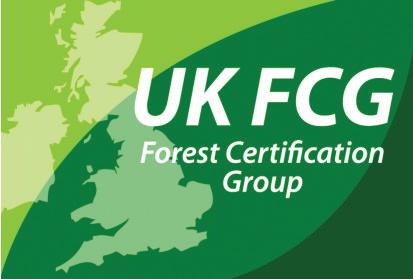
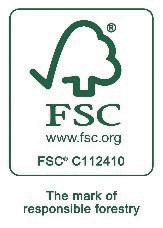

Shane Milne, Managing Director of SM Forestry Ltd, recently spoke to BBC Scotland’s Kevin Keane, Correspondent for Environment, Energy & Rural Affairs, about the cut to next year’s planting budget in Scotland.
He pointed out that contractors in the industry have upscaled their workforces and operations to meet the demand of rising planting targets, at significant cost to businesses anticipating a payoff.
With a lack of future funding for the sector and an acknowledgment that these planting pledges will not be met, there are now concerns about too little work available in the near future to justify and offset their investment.
Forestry in Pictures is a regular feature in FTN. For every issue, we select the most impacting photograph sent by a reader. If you have a photo you would like to see published here, please send your file to ftn@confor. org.uk Please include your name, a short comment text to go with the picture, and an image credit. Photos should relate to forestry and timber and be of high-quality (minimum resolution 300dpi). Exceptional pictures might be considered for the front cover of a future FTN issue.
By submitting a picture to Forestry in Pictures you give Confor permission to use the file for non-commercial purposes in Forestry and Timber News or the Confor website. Photos will always be credited.

In April we will be focusing on Skills & Career Development. Remember that FTN is your magazine – get in touch if you want to suggest editorial or give us feedback on articles we have published in the past. Confor members, send us your company’s news updates or pitches for feature articles.



